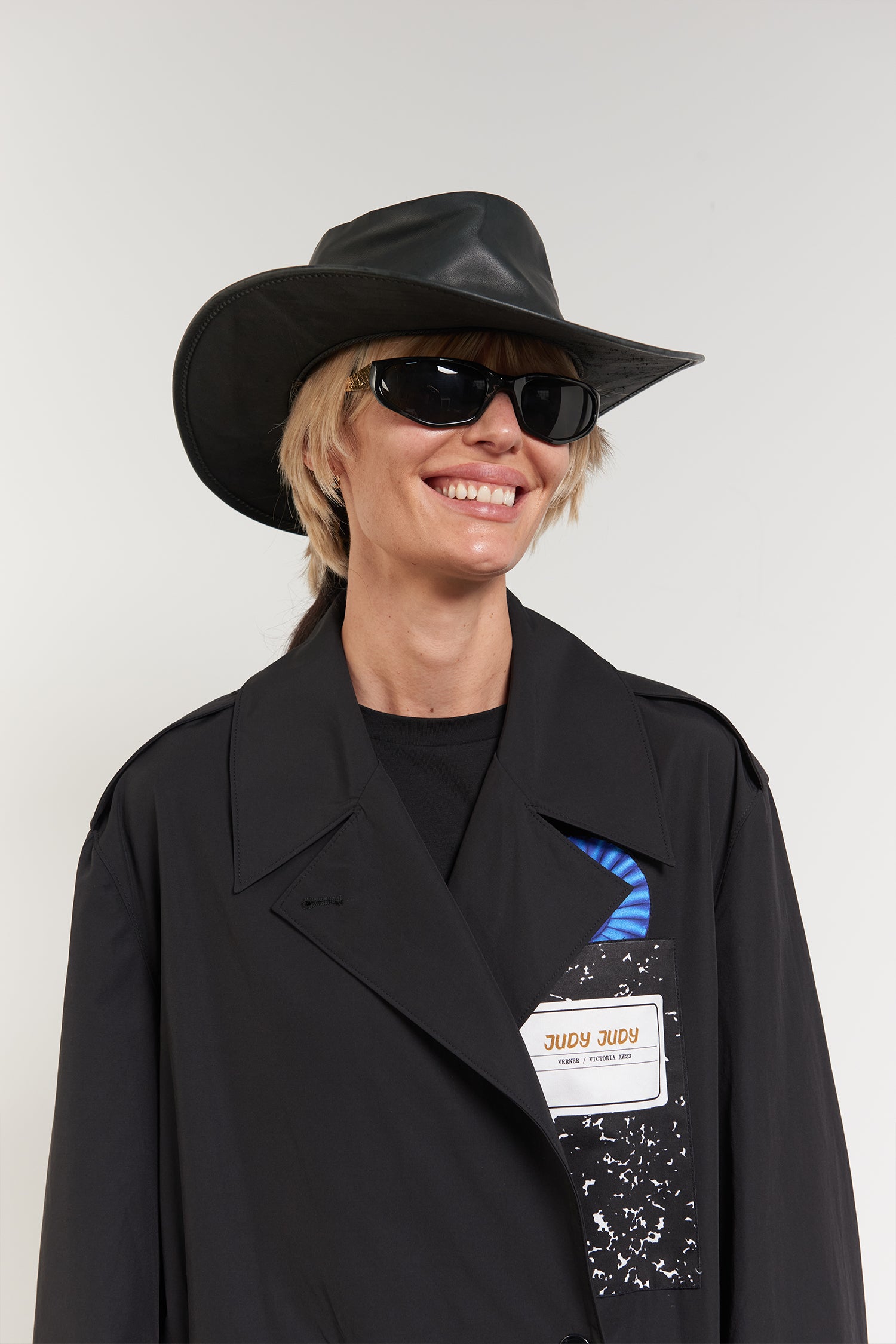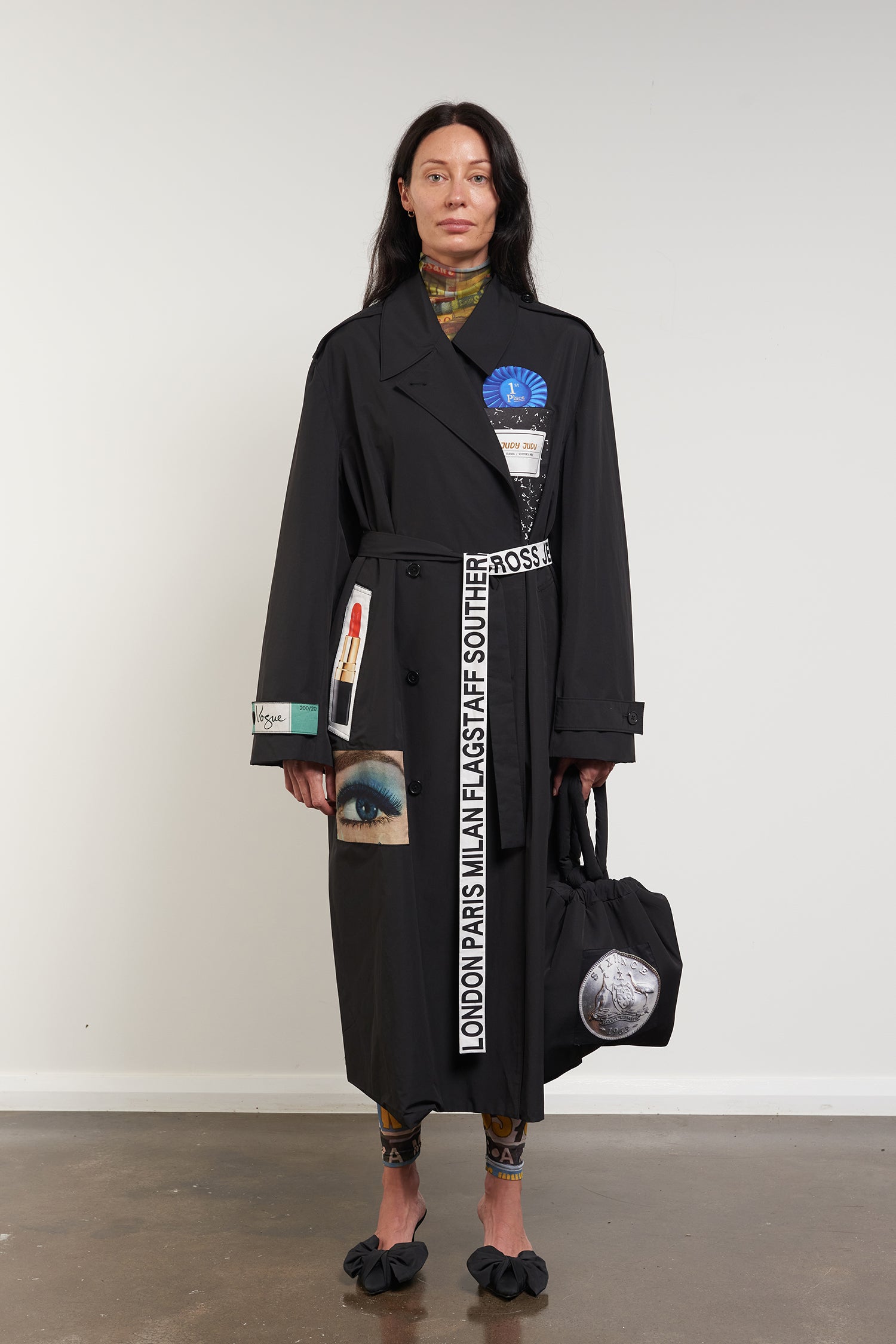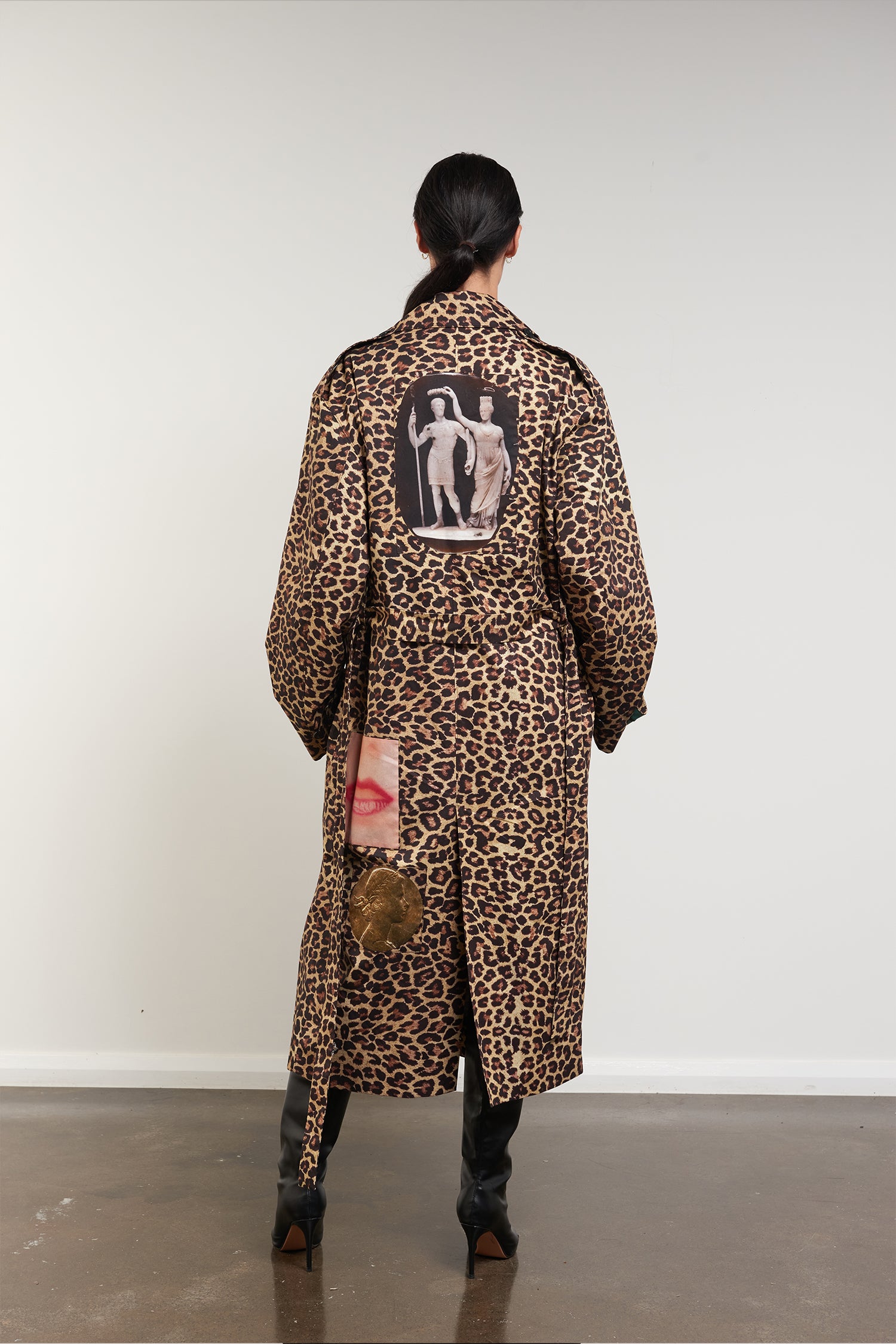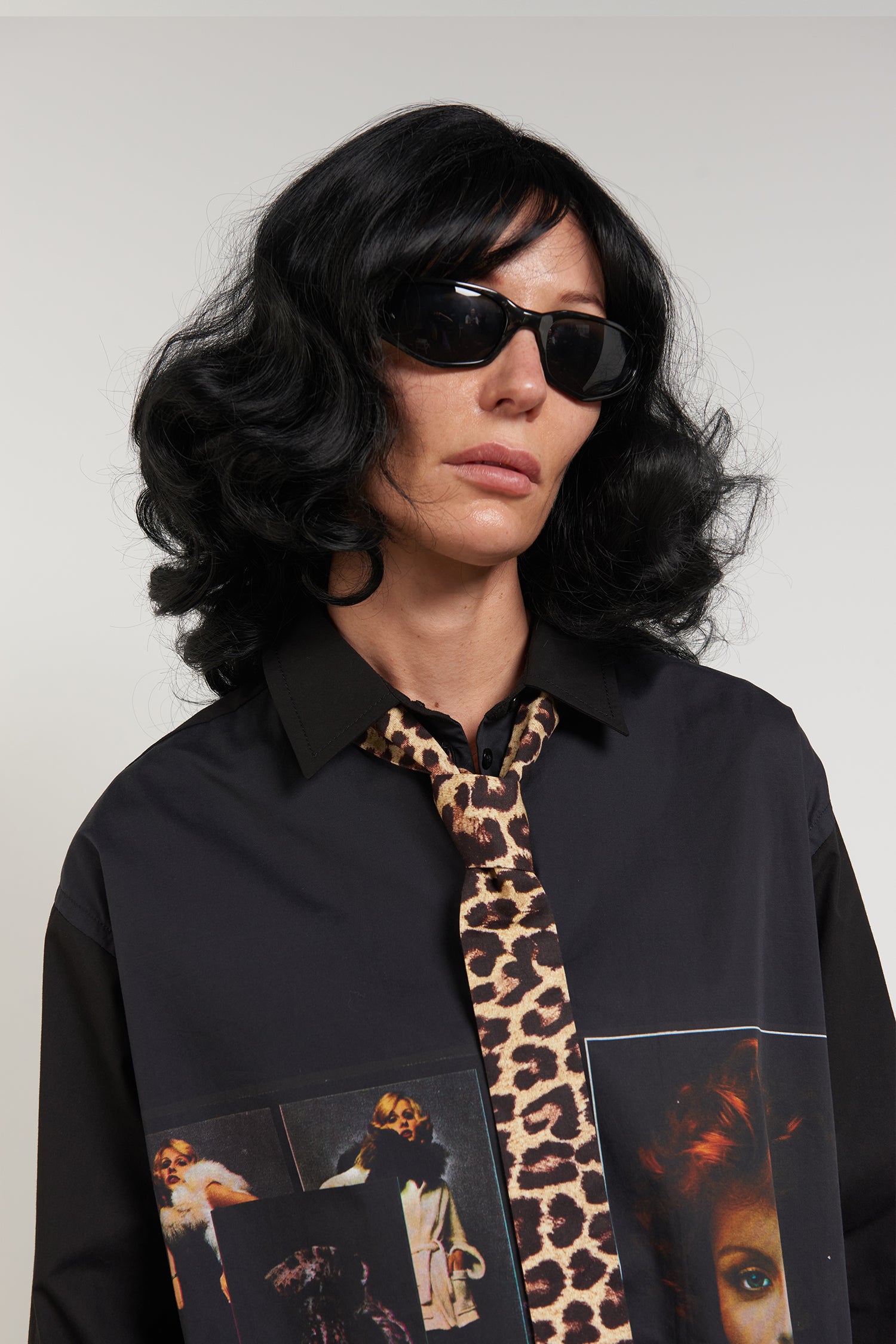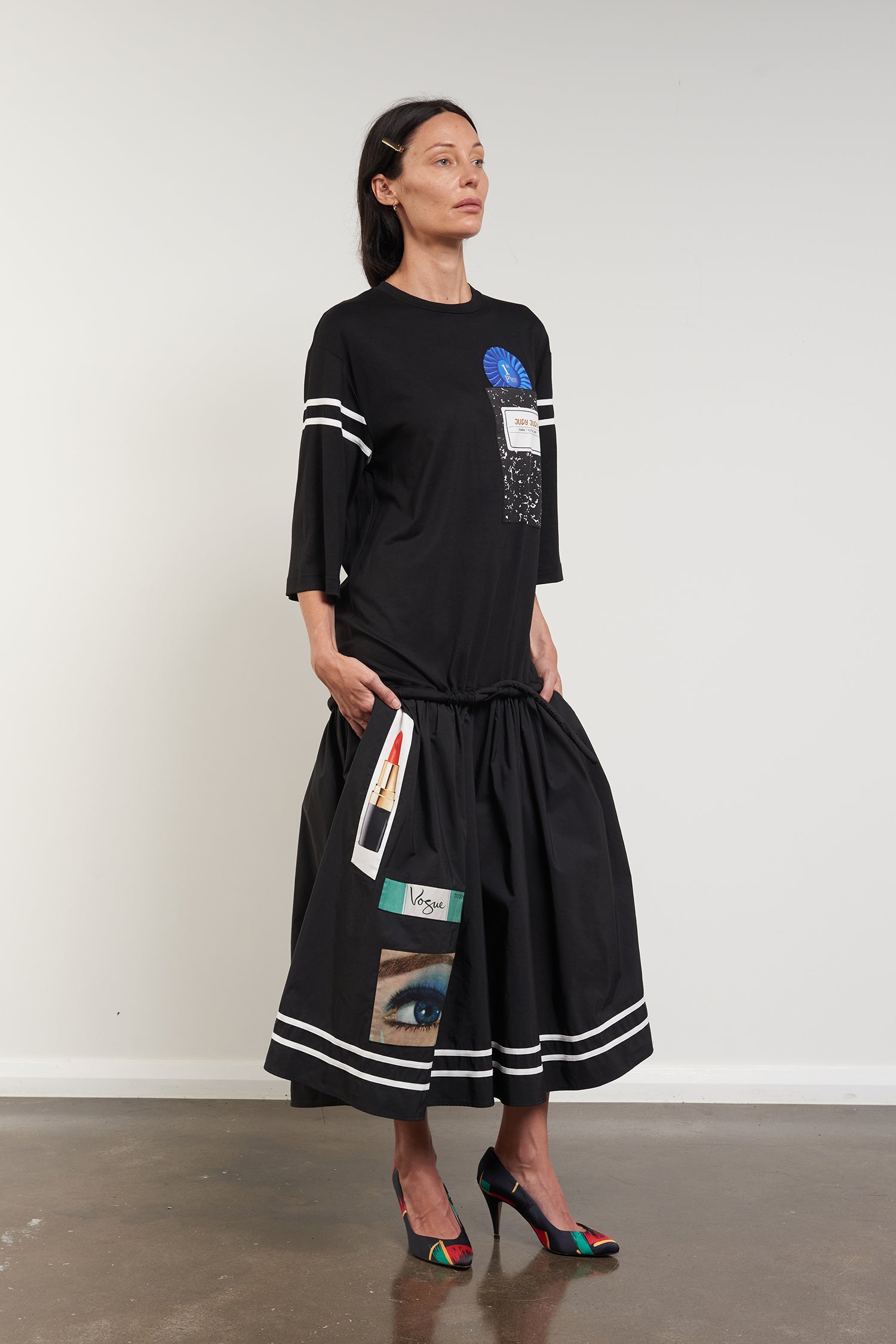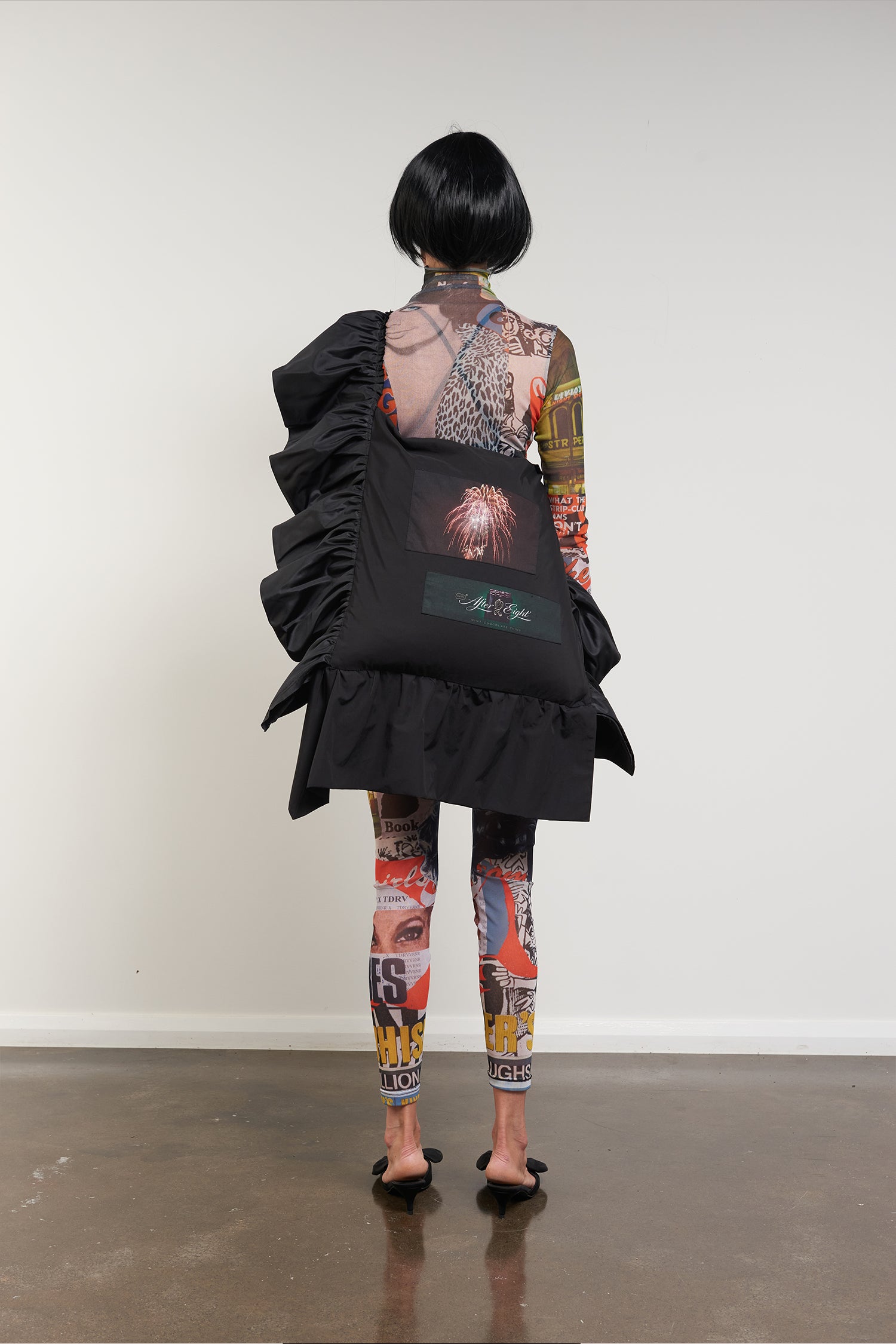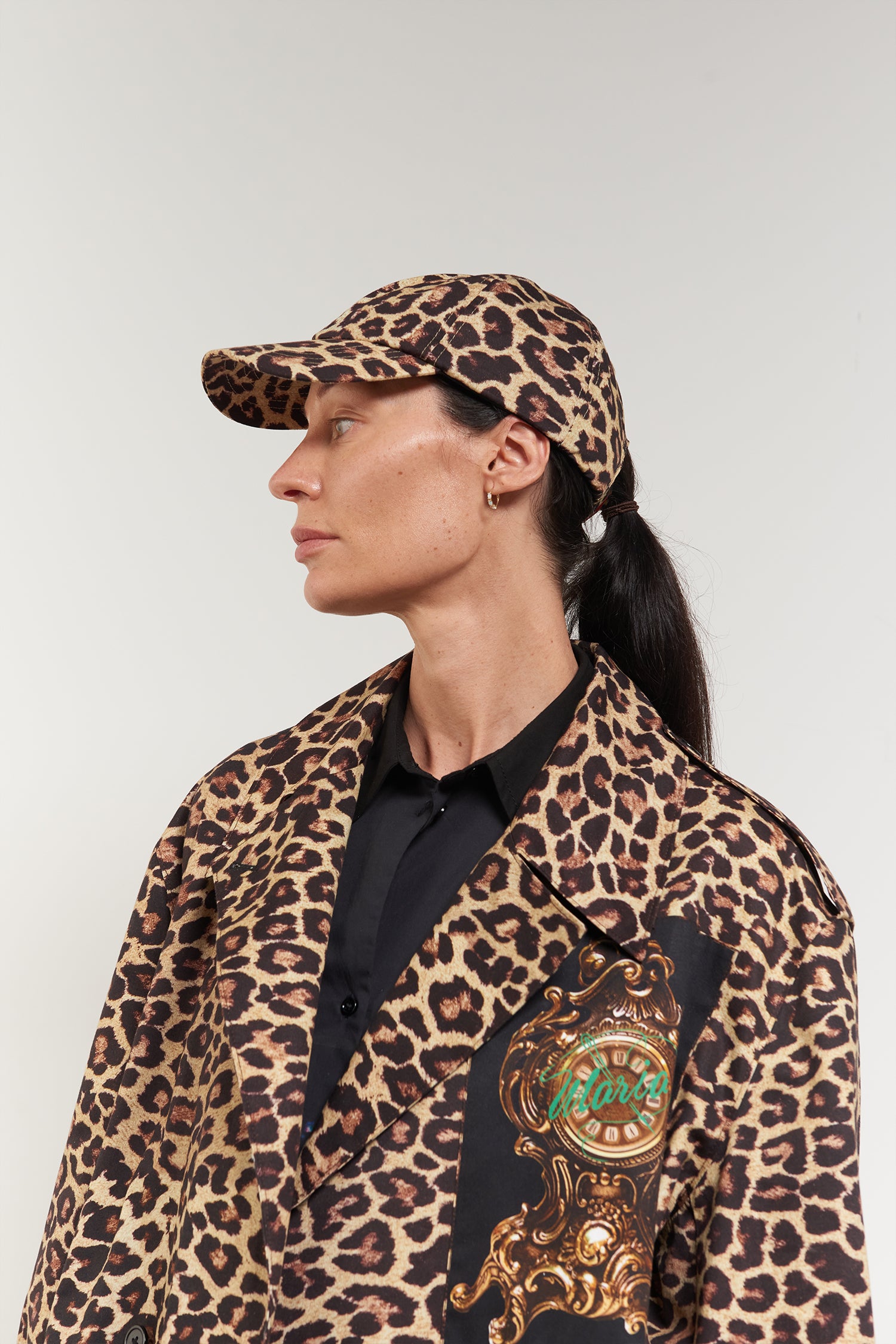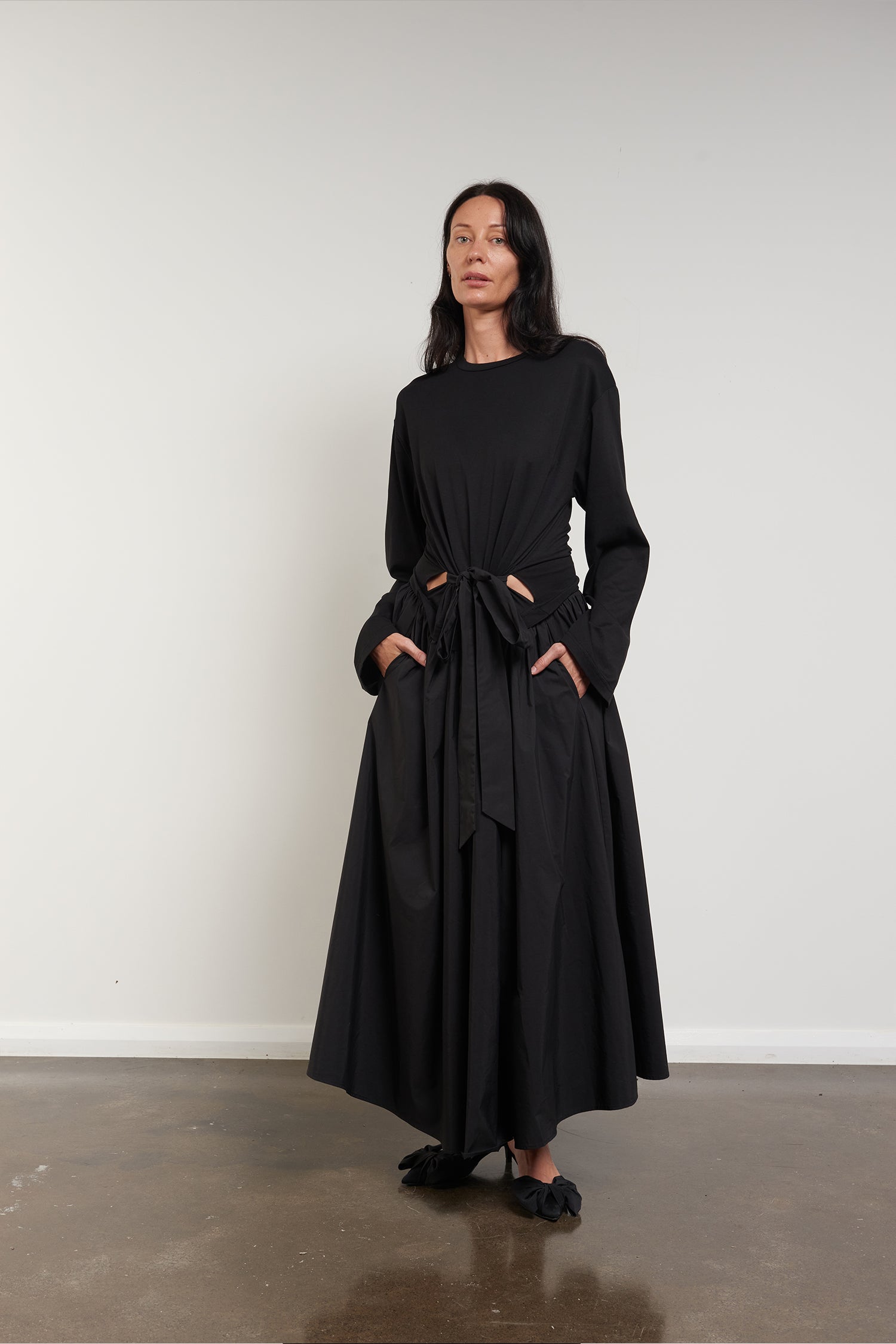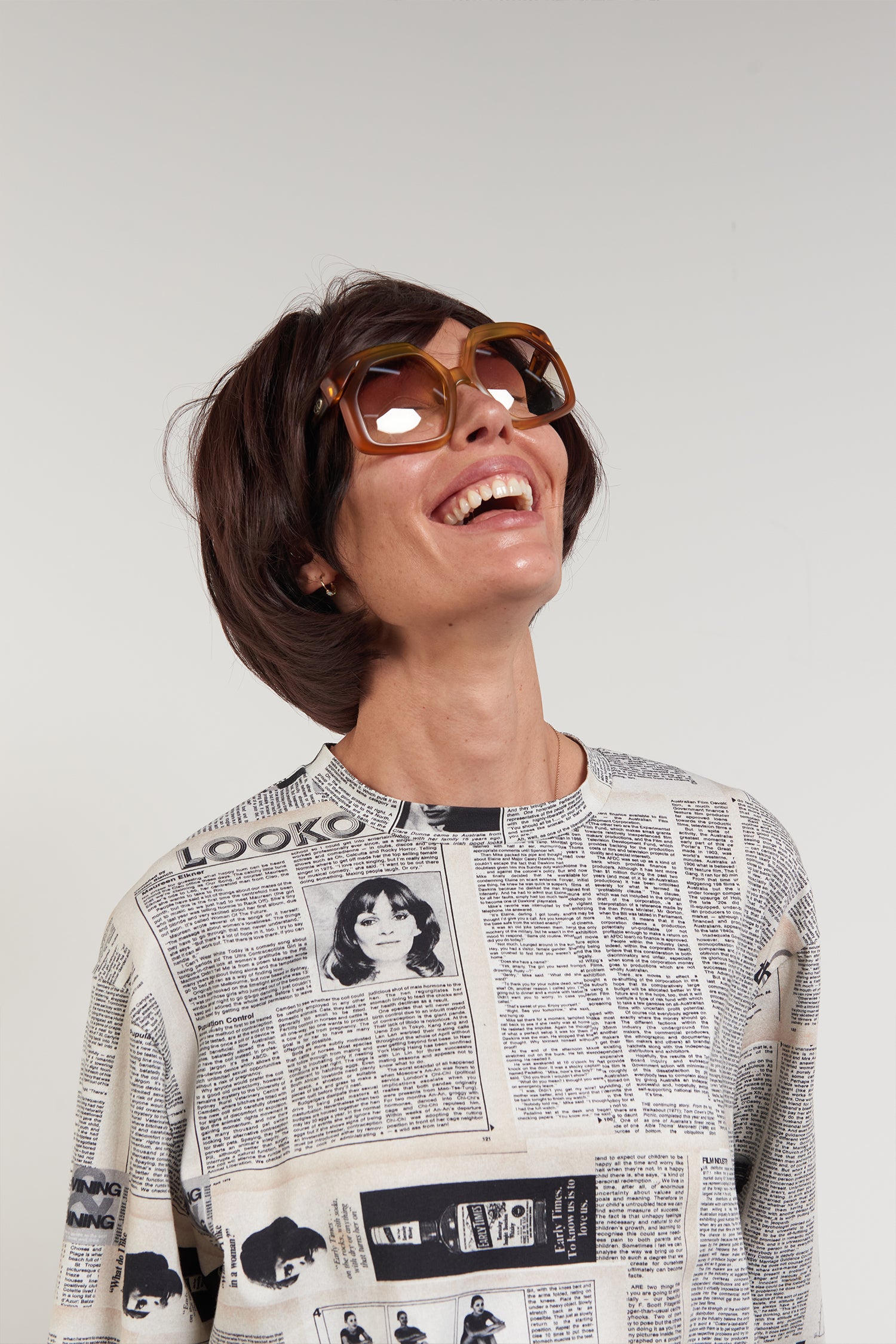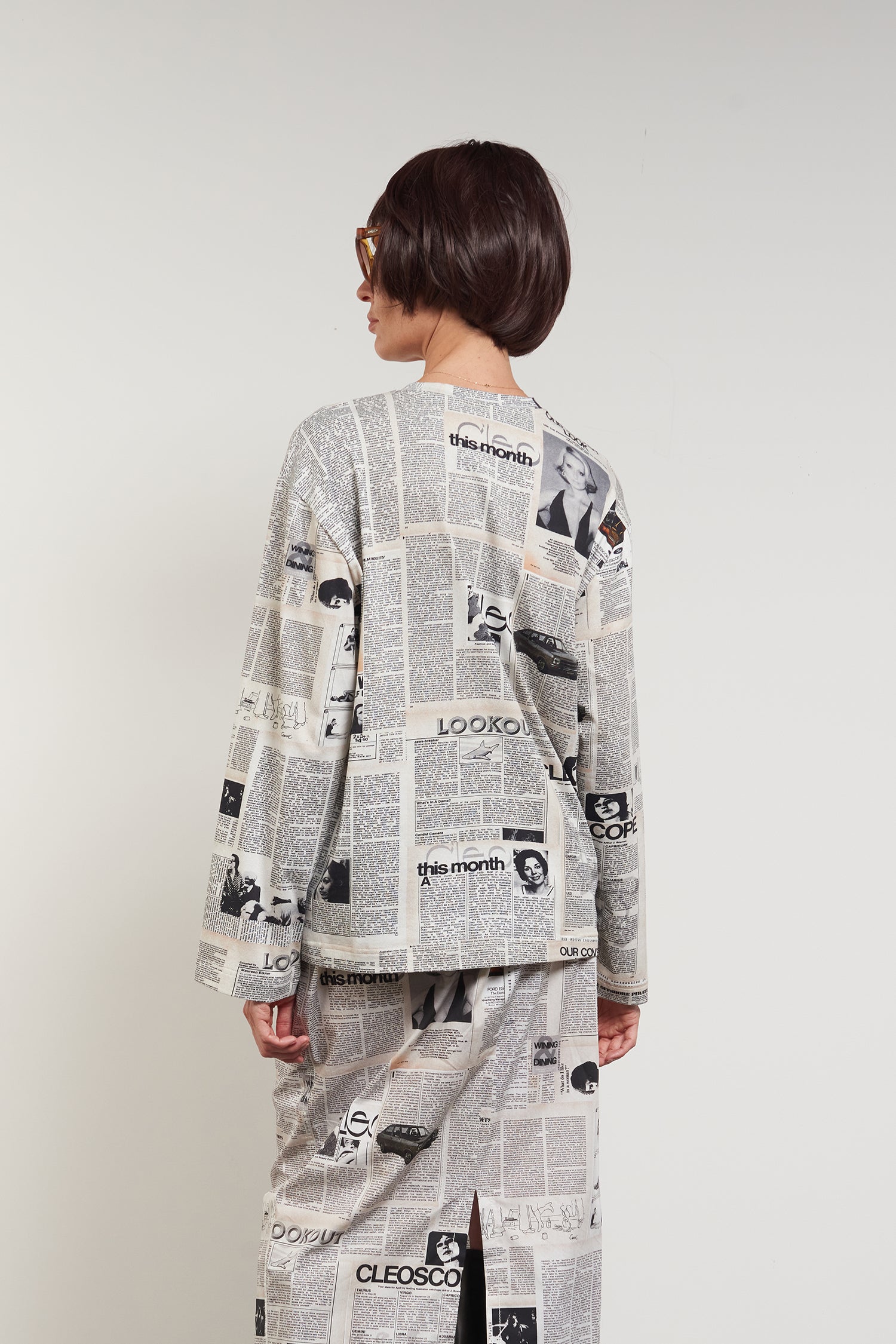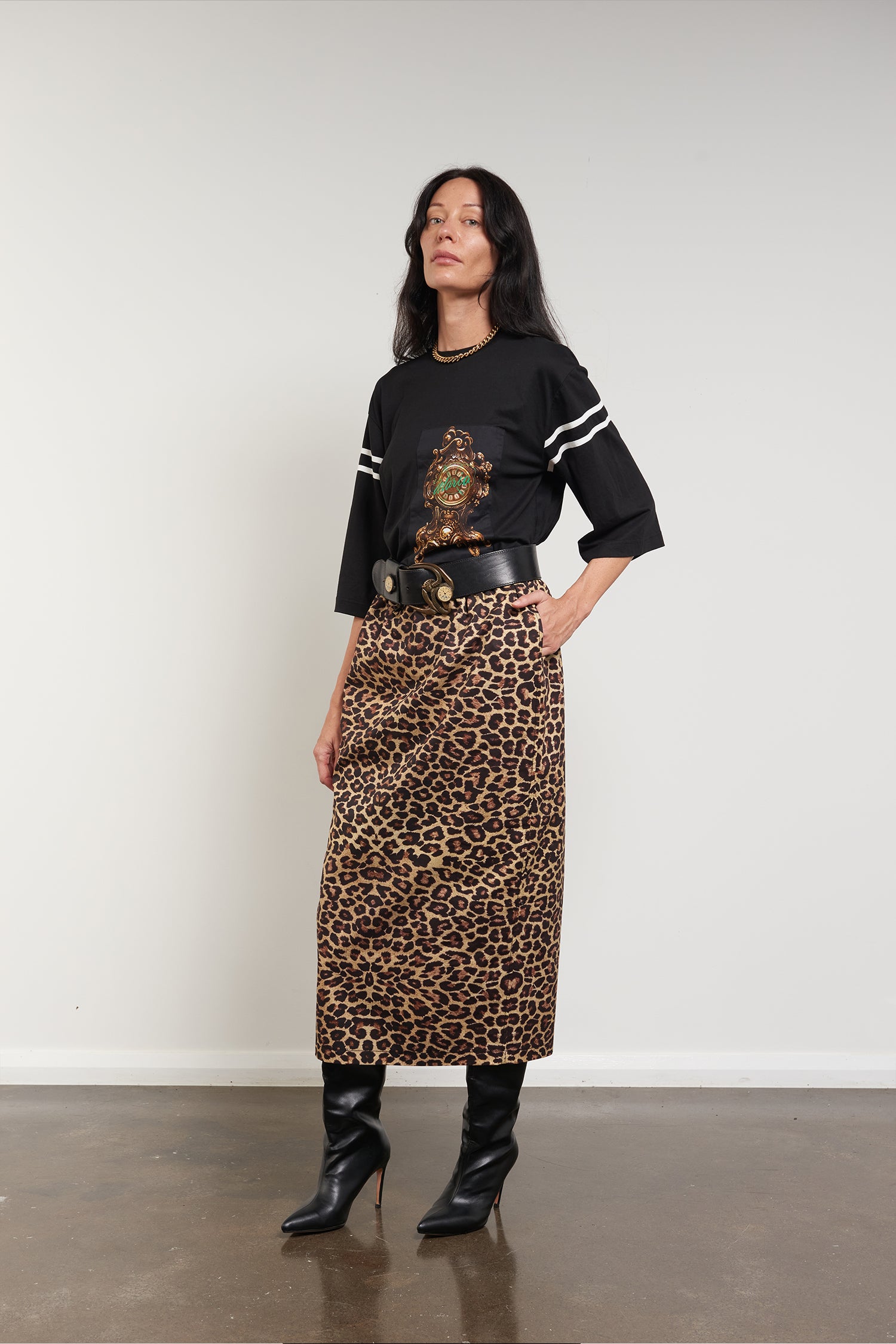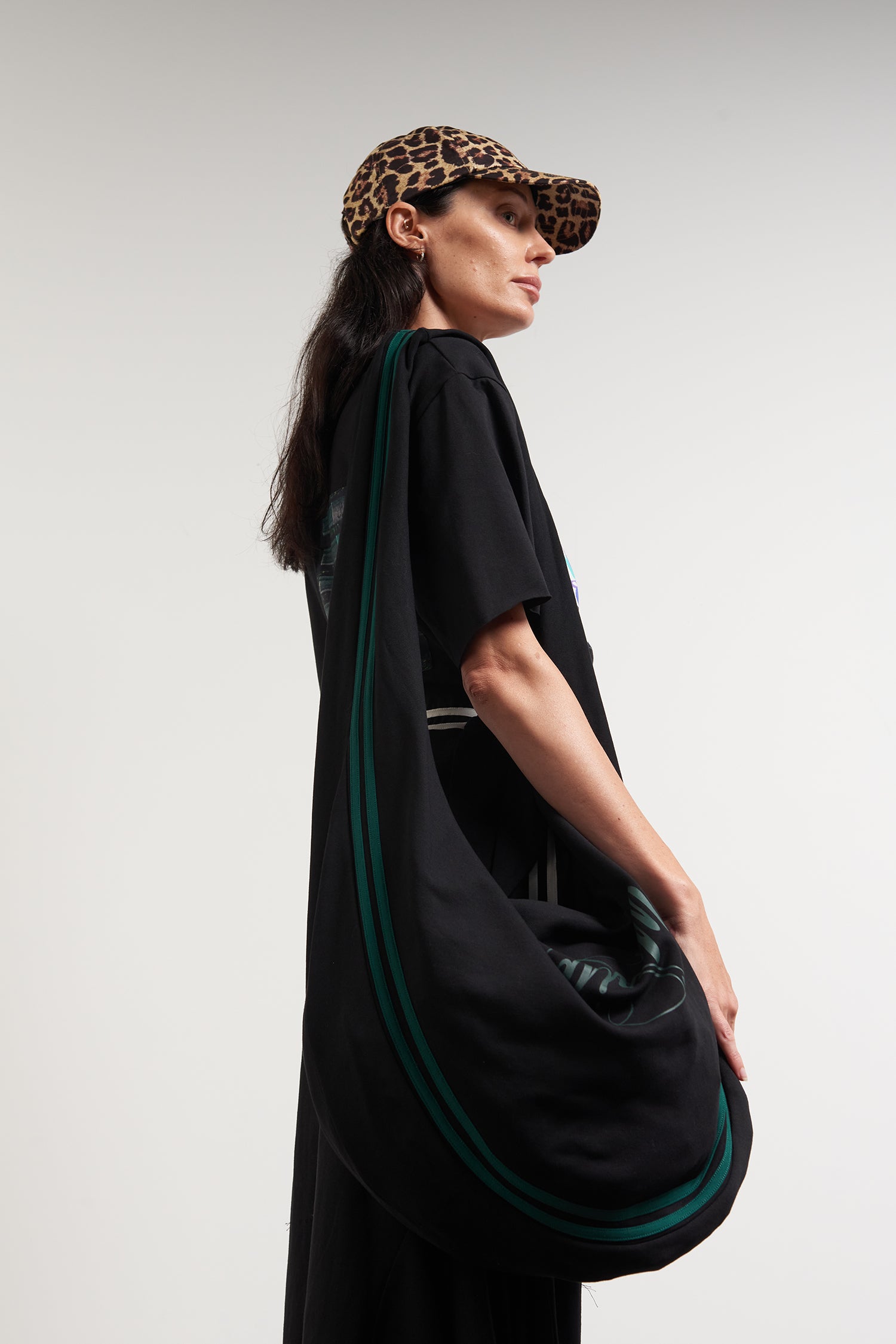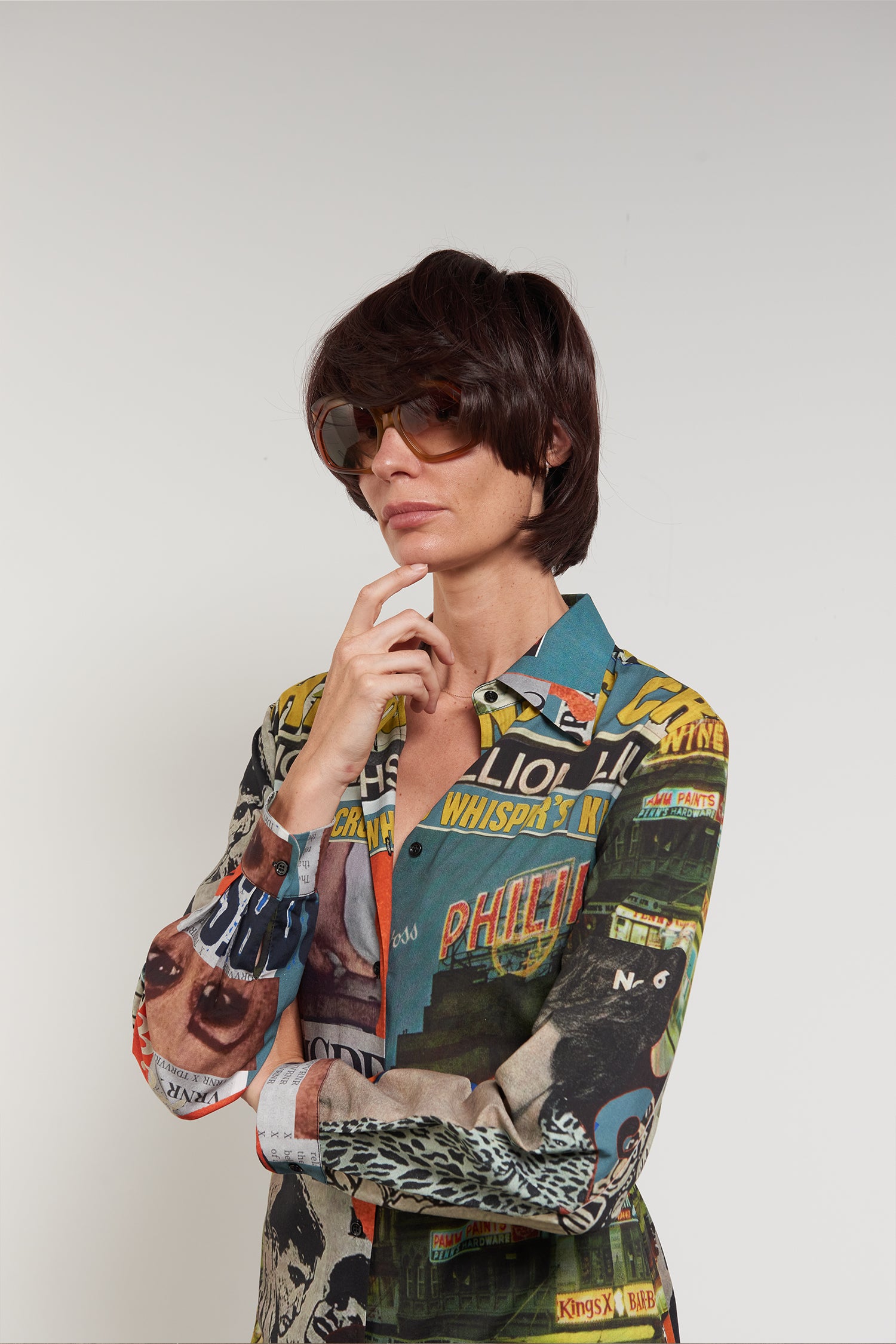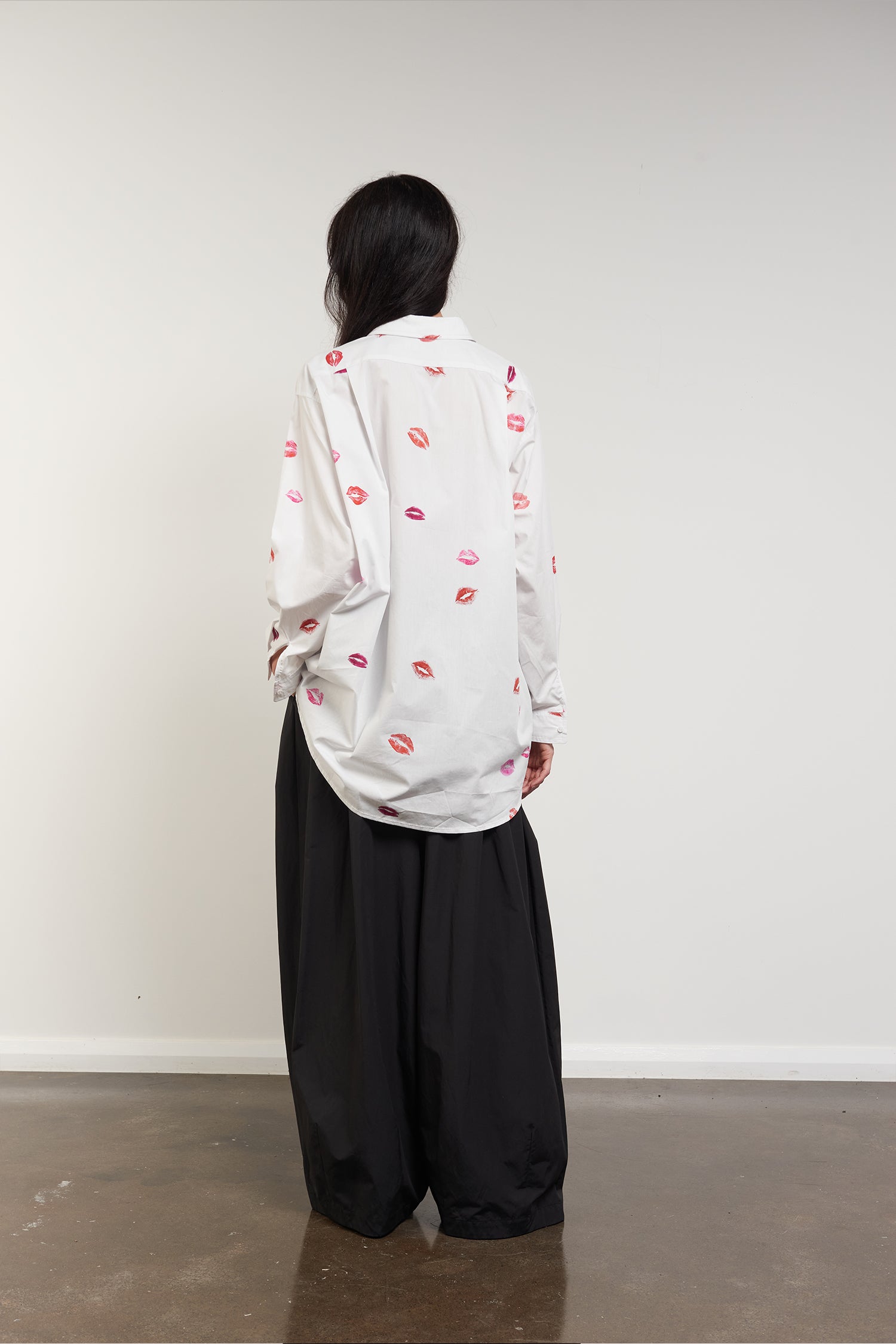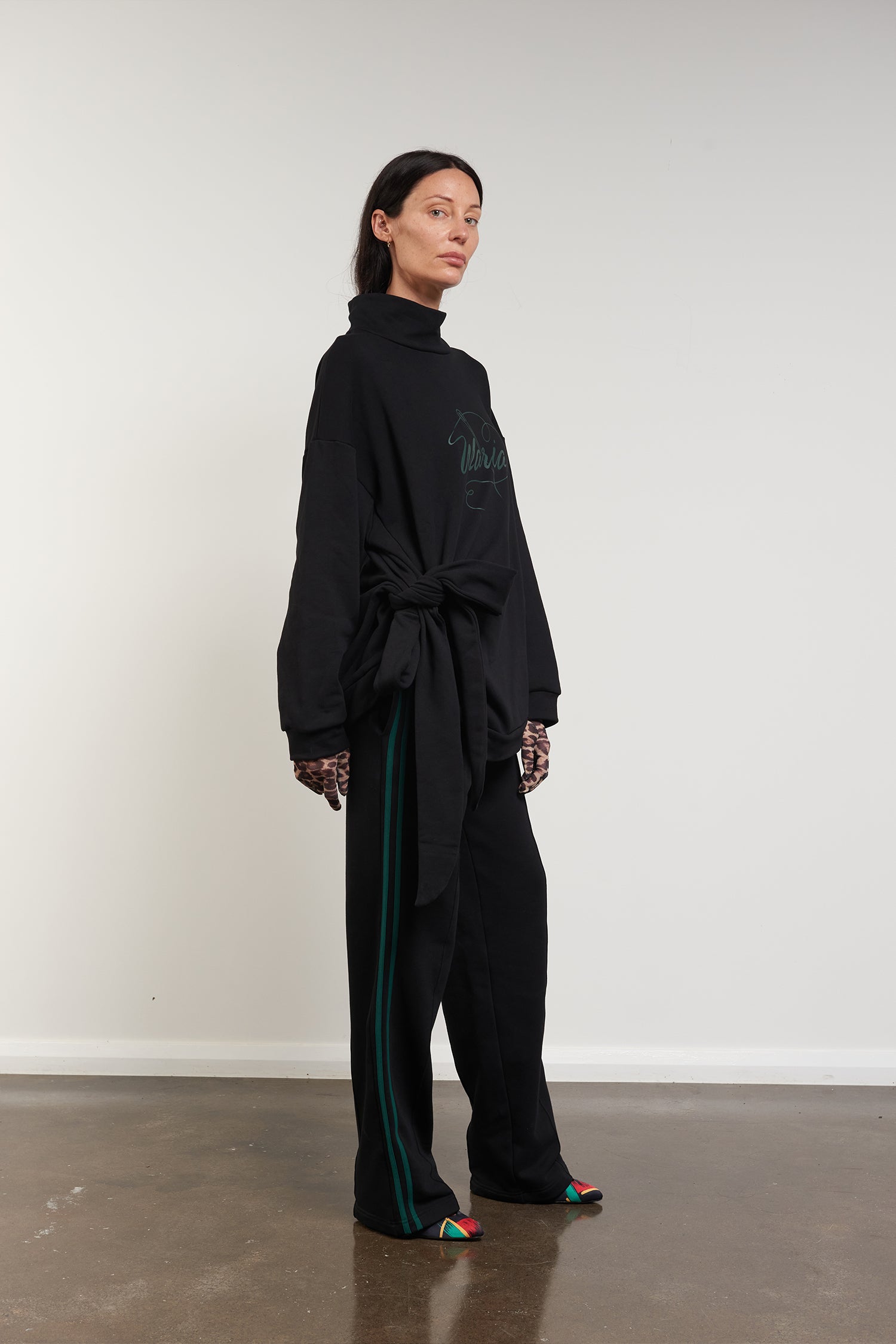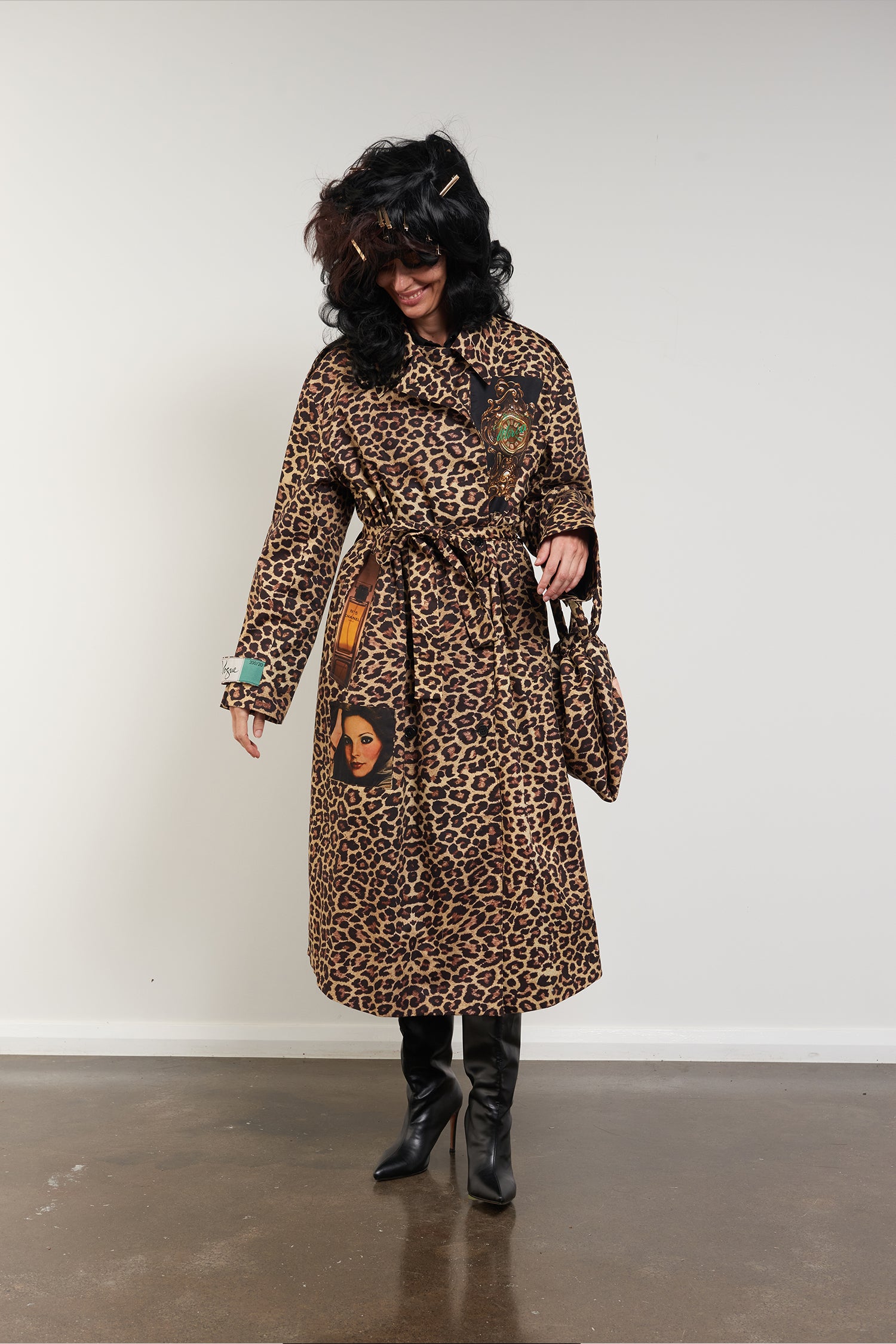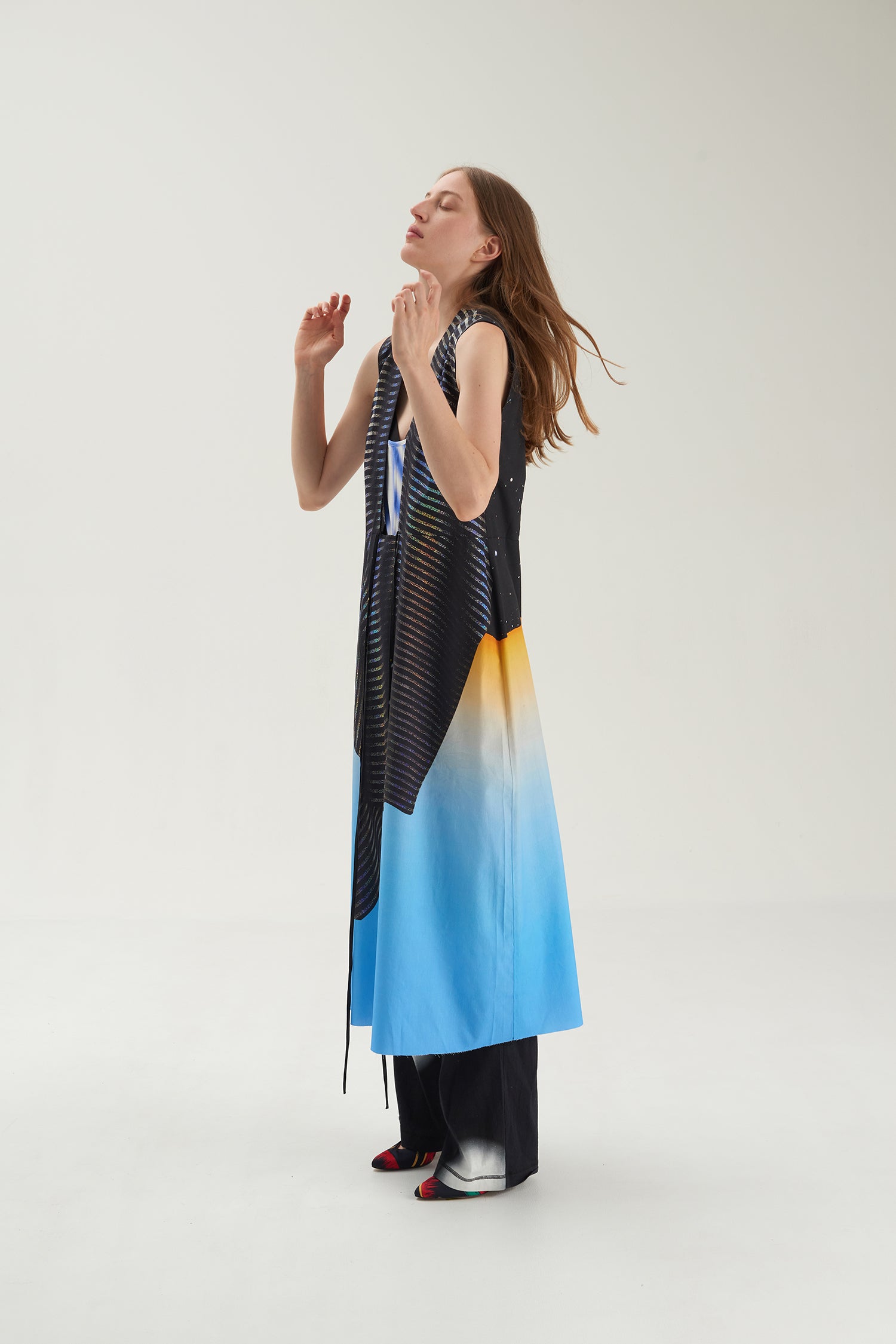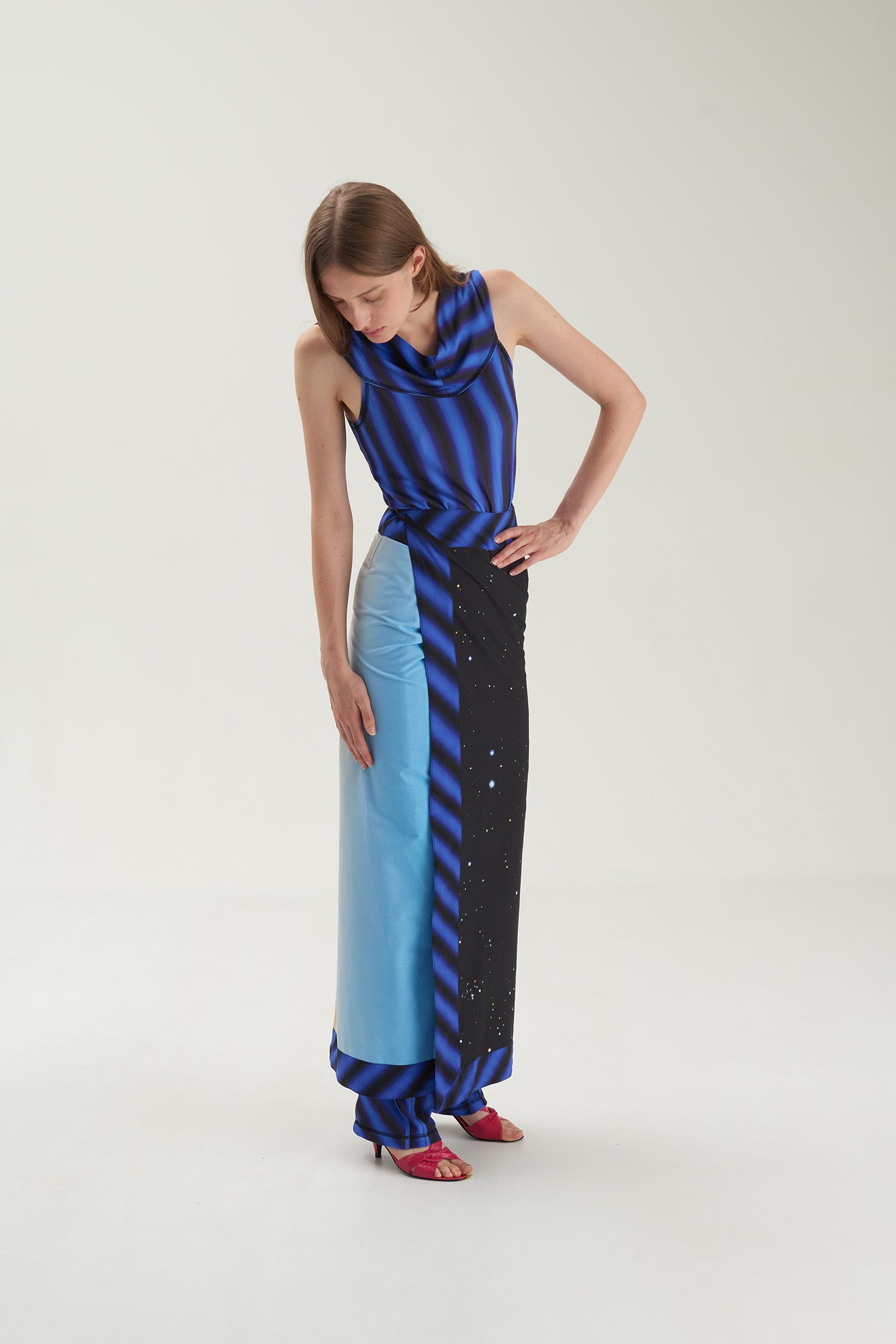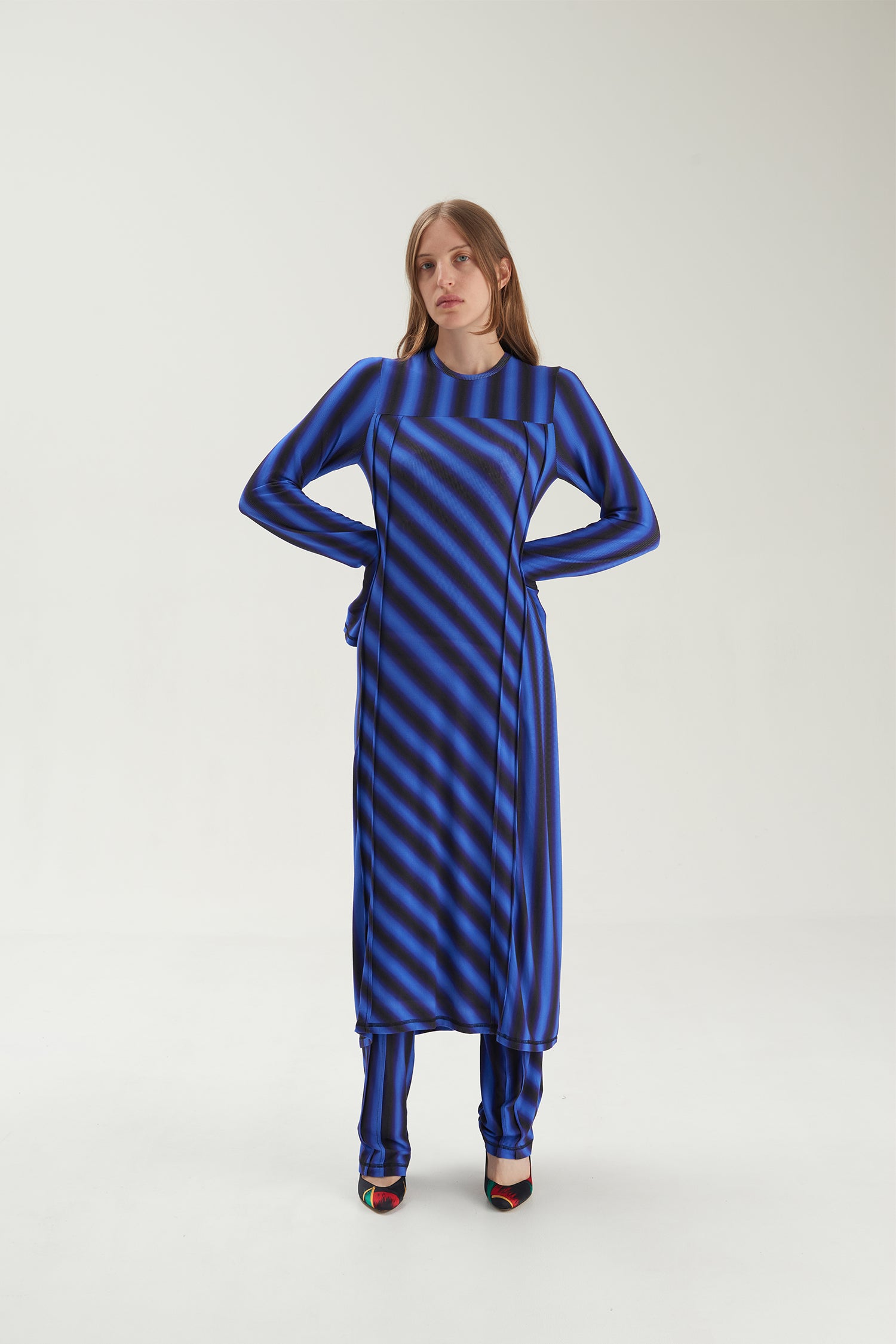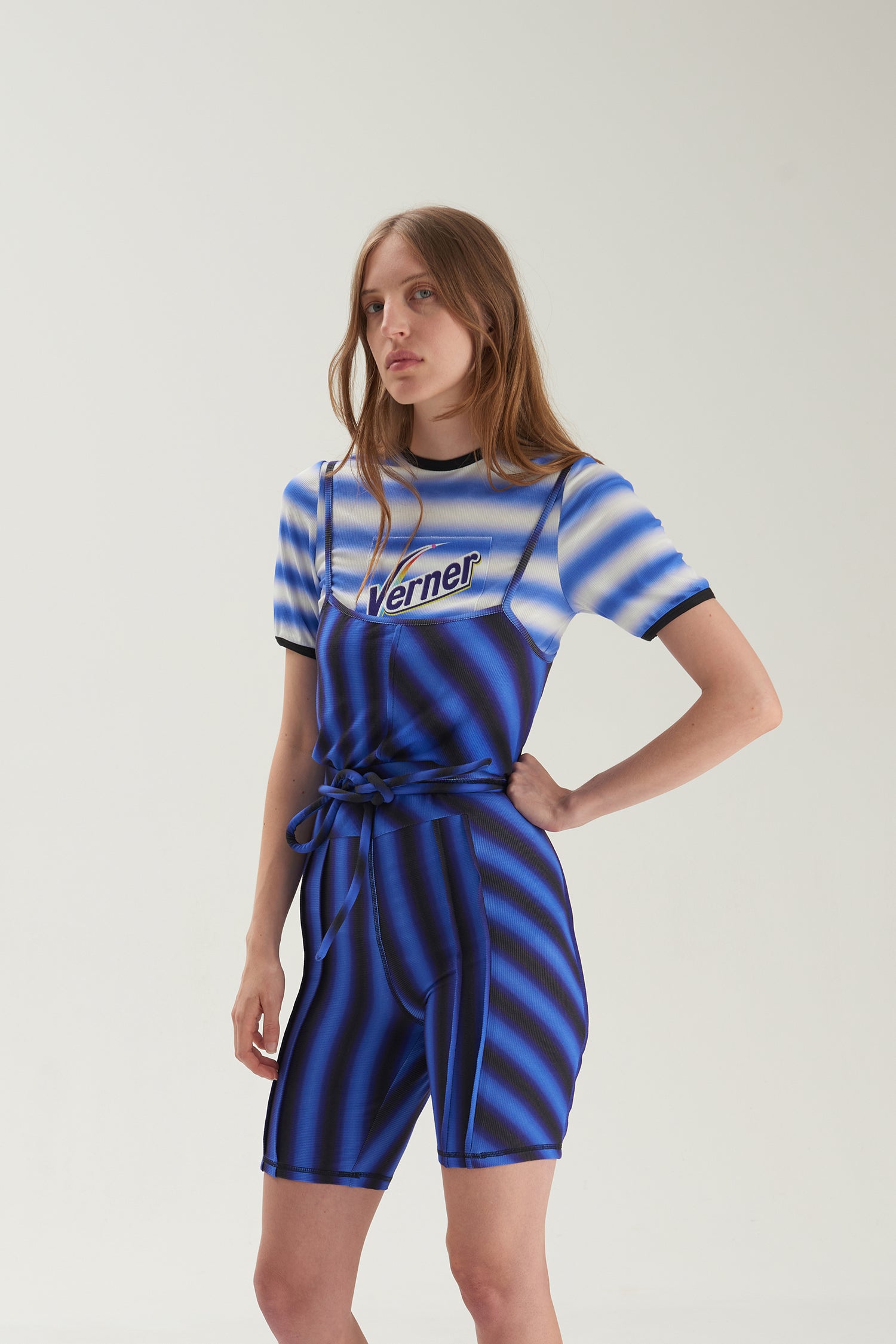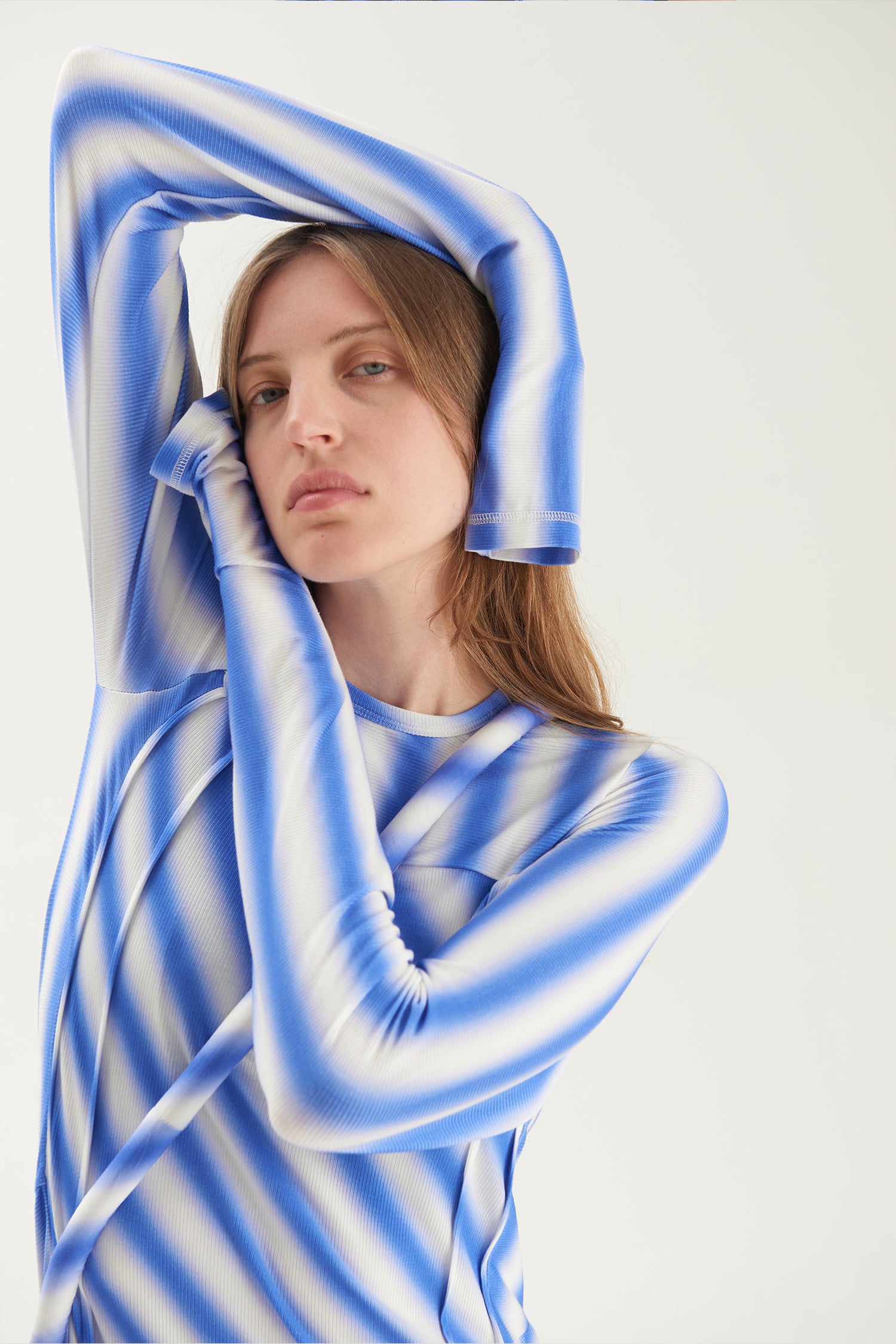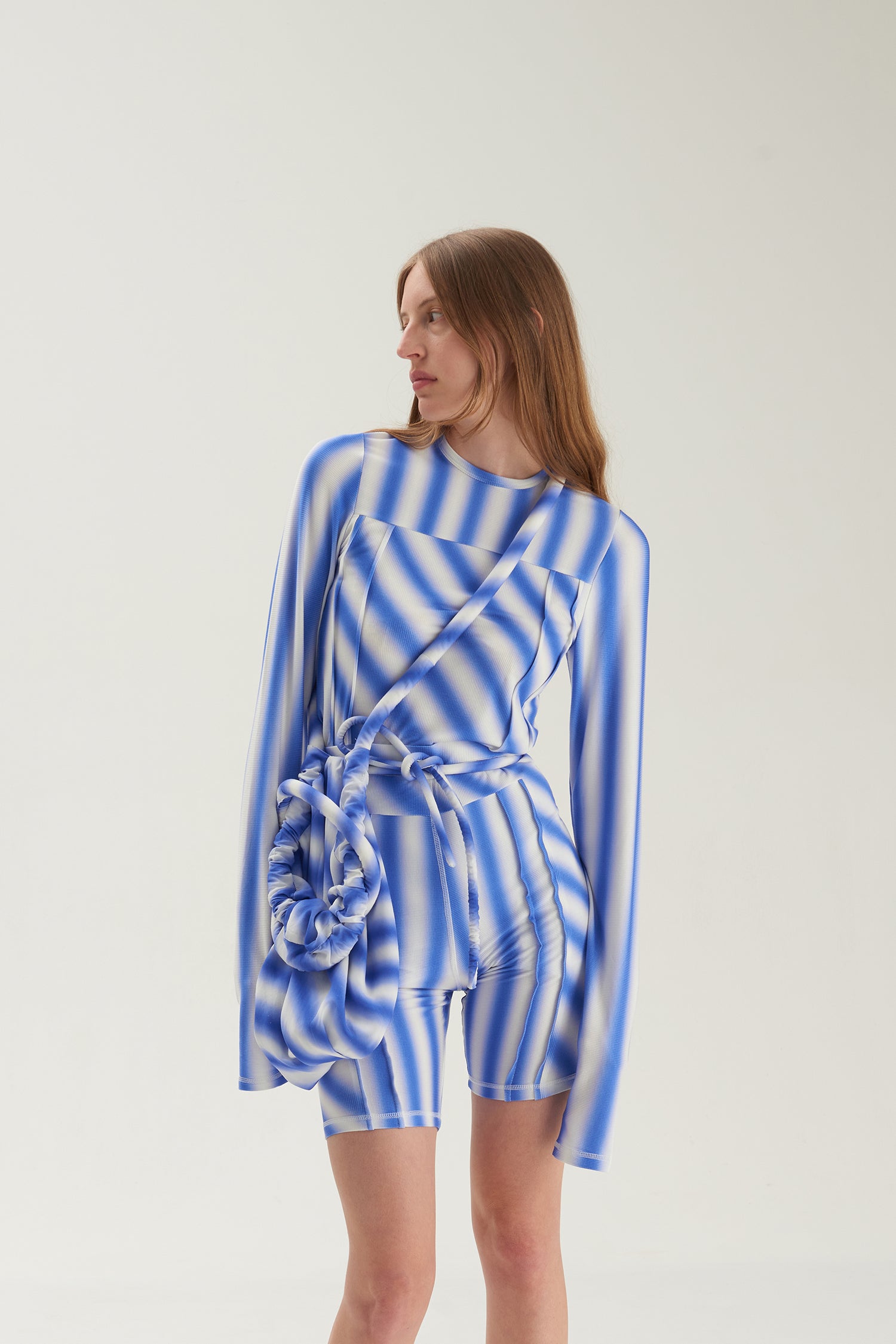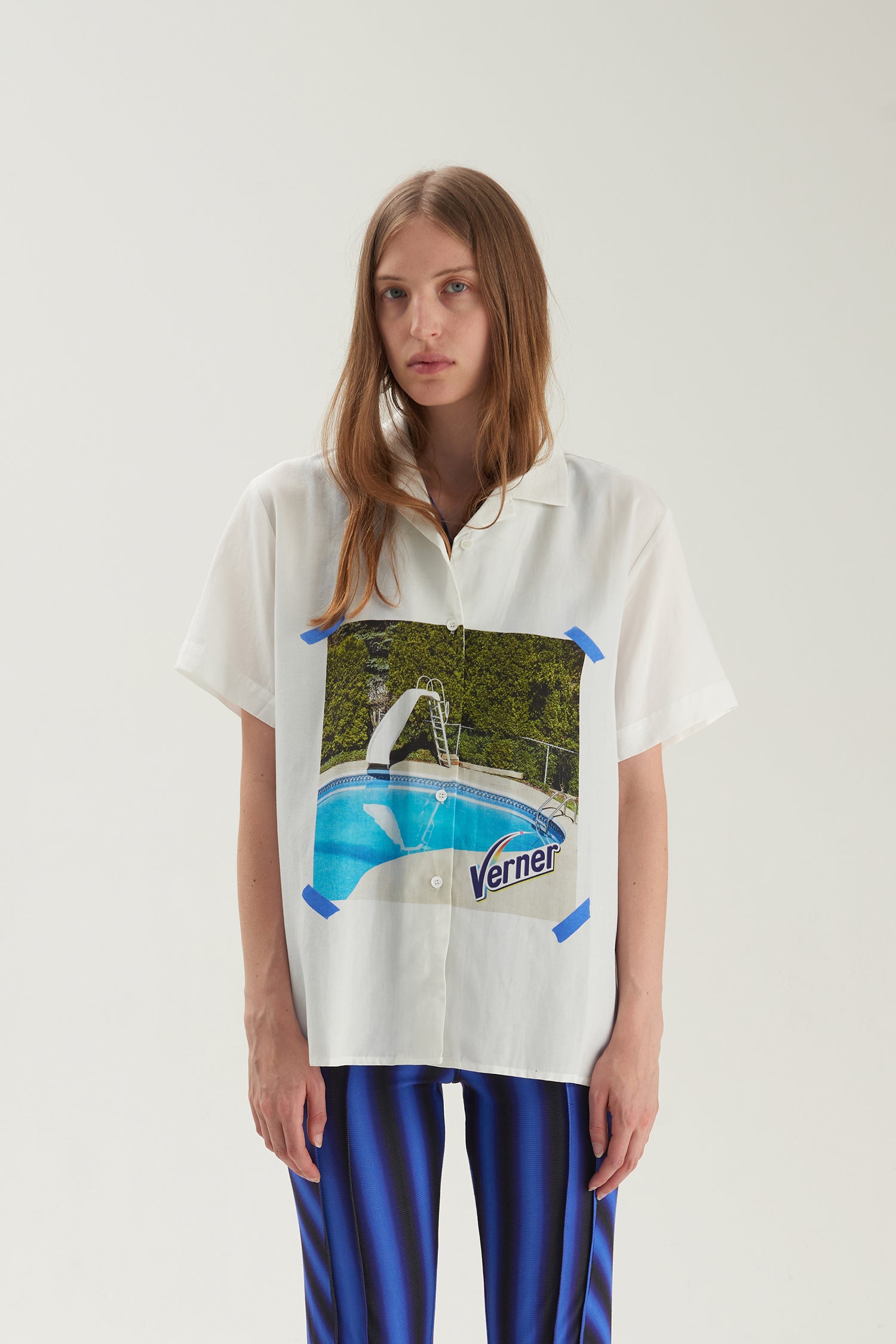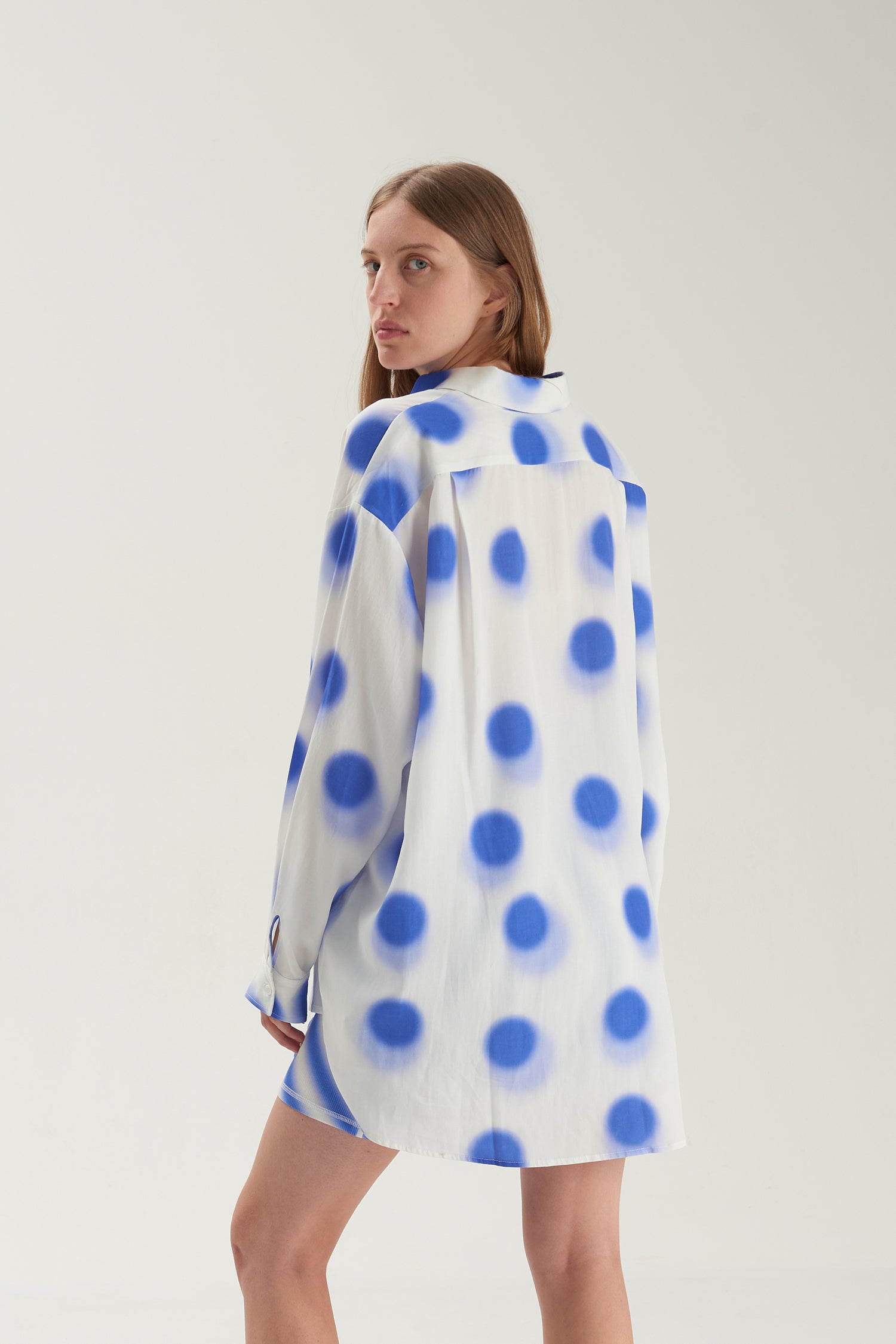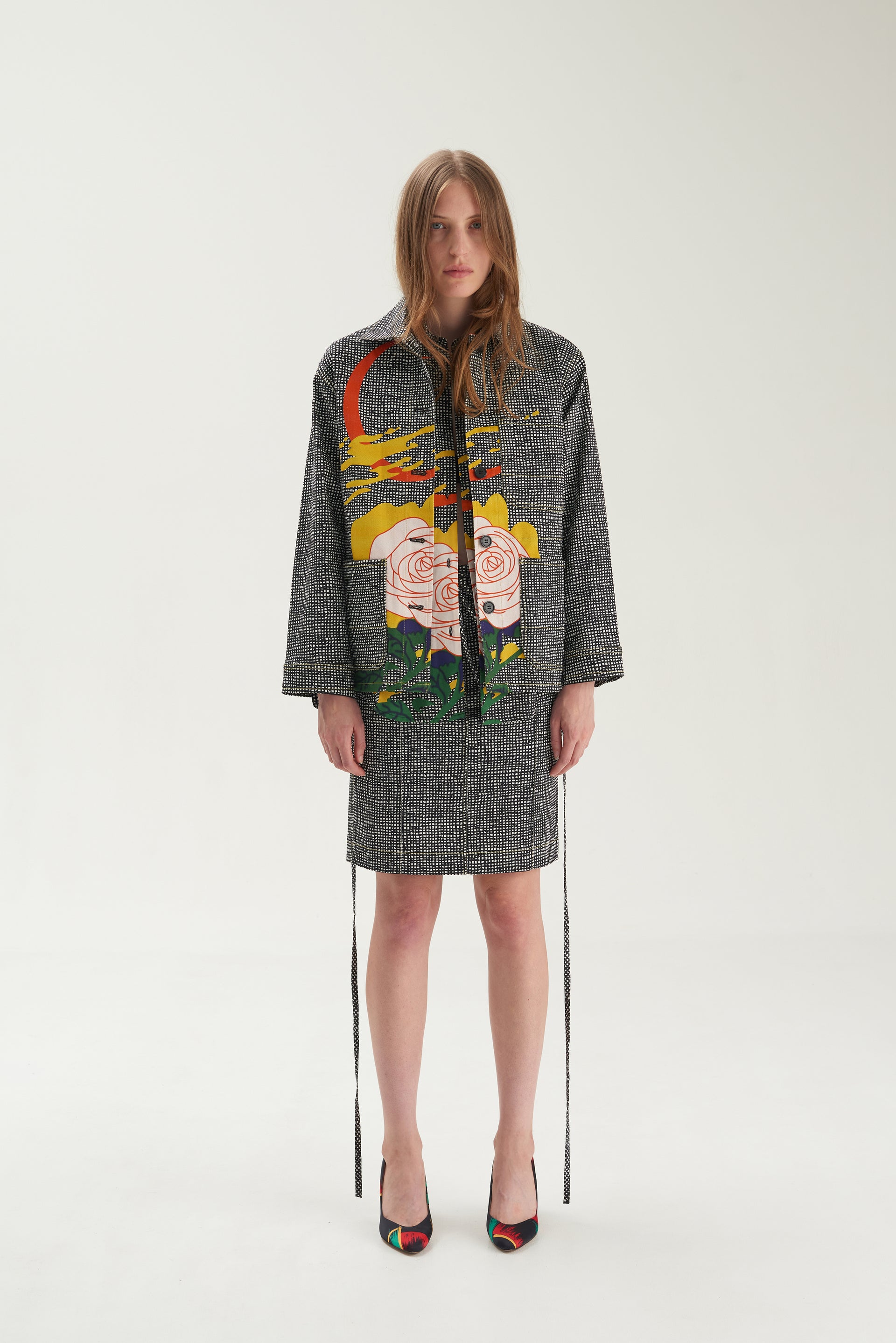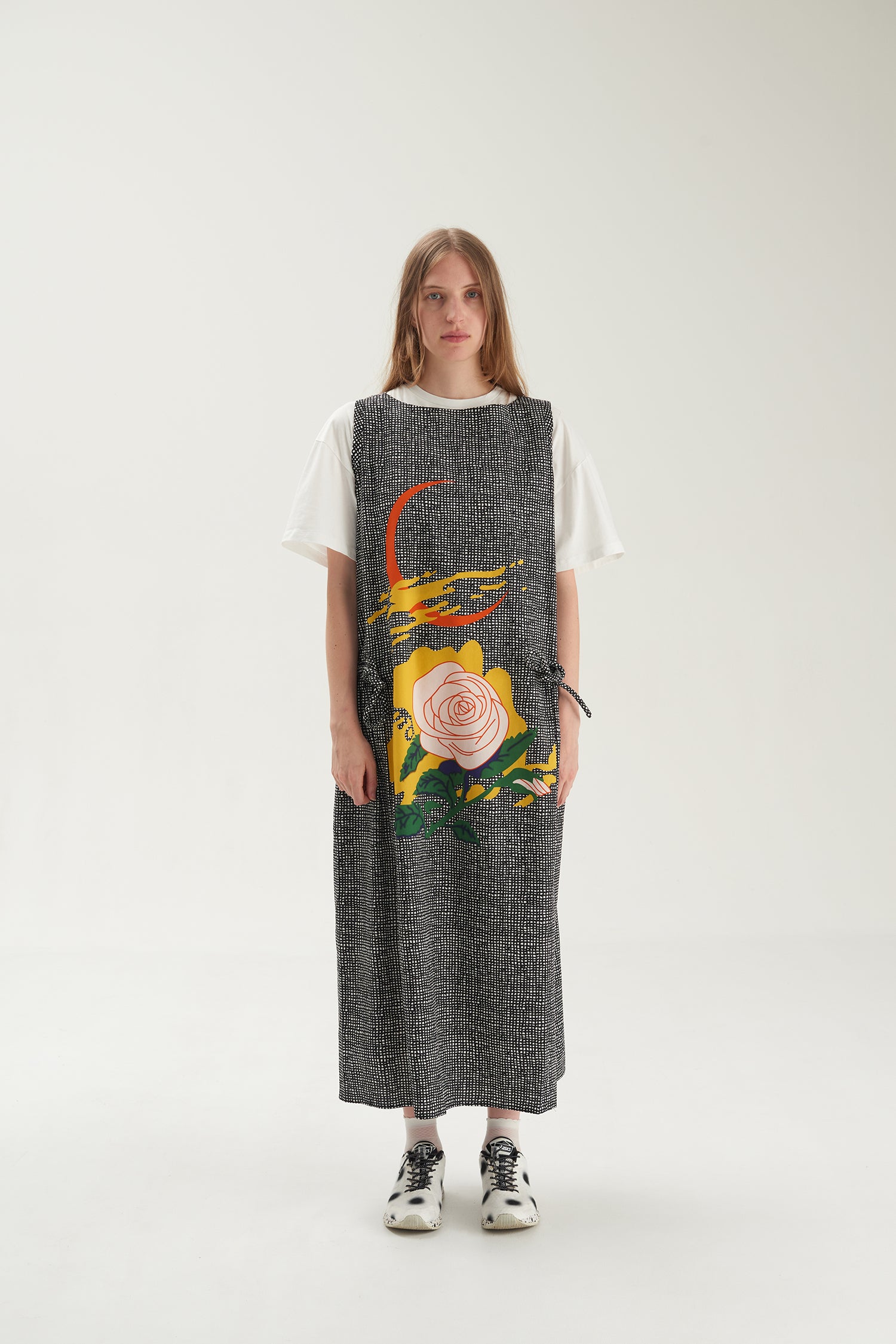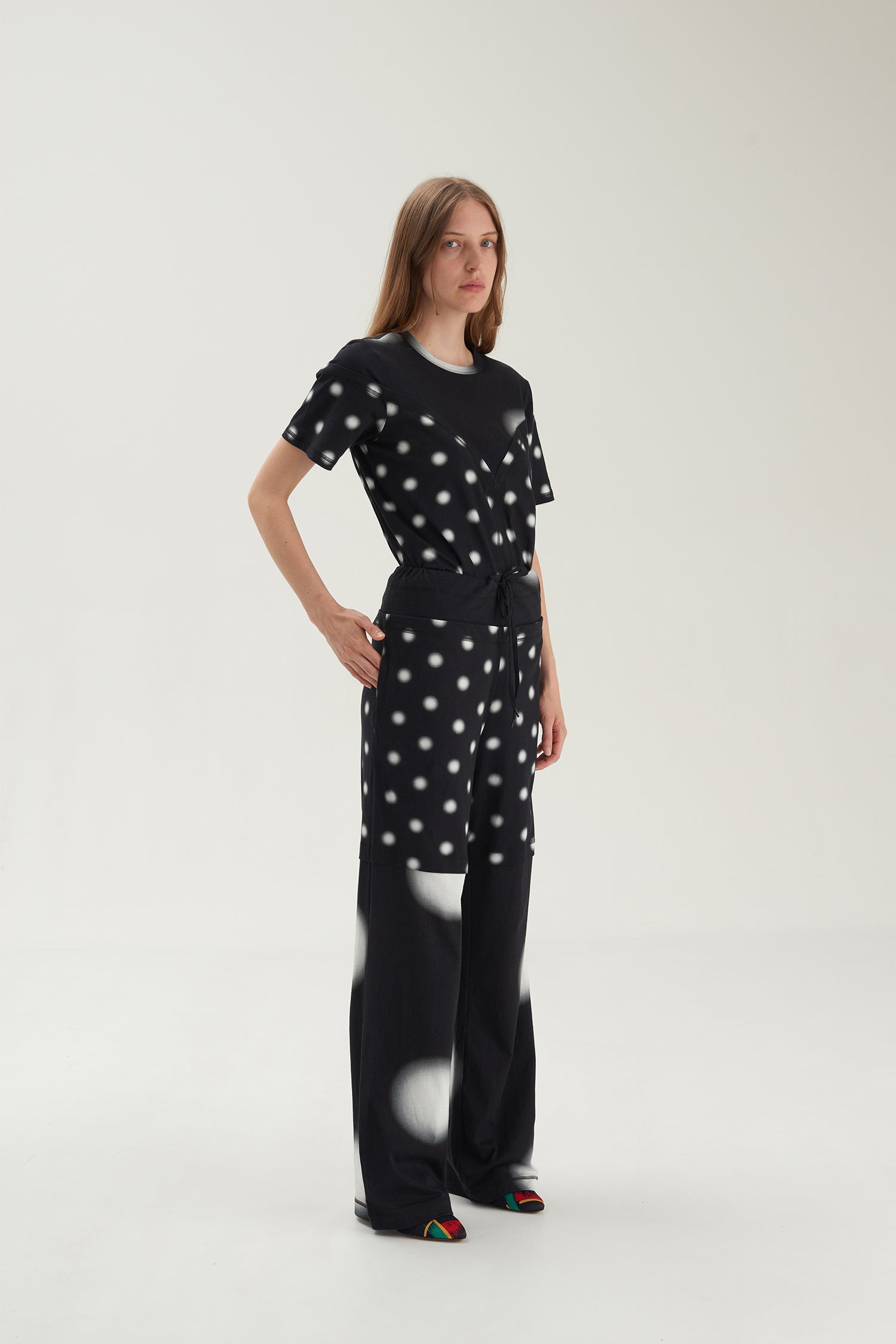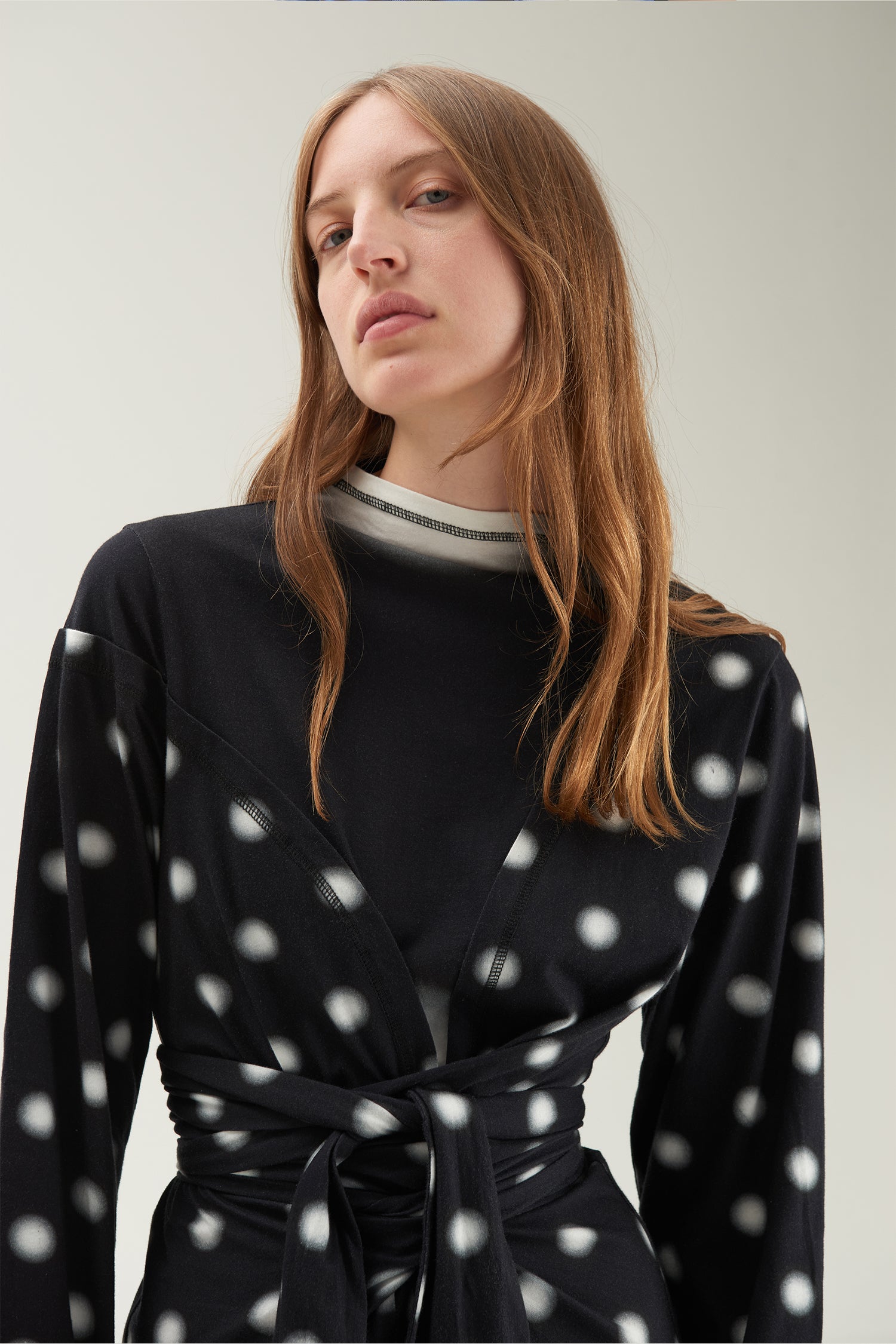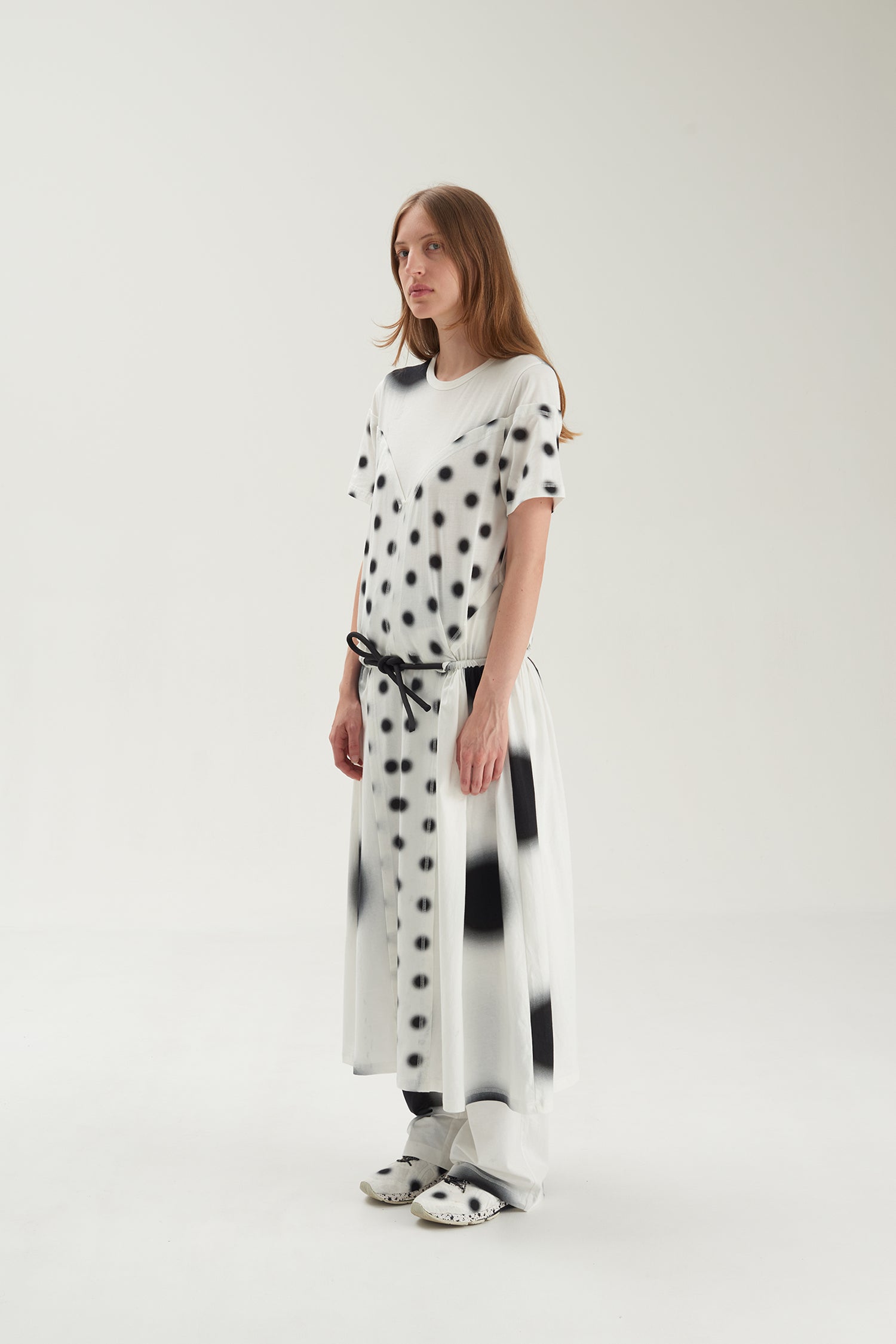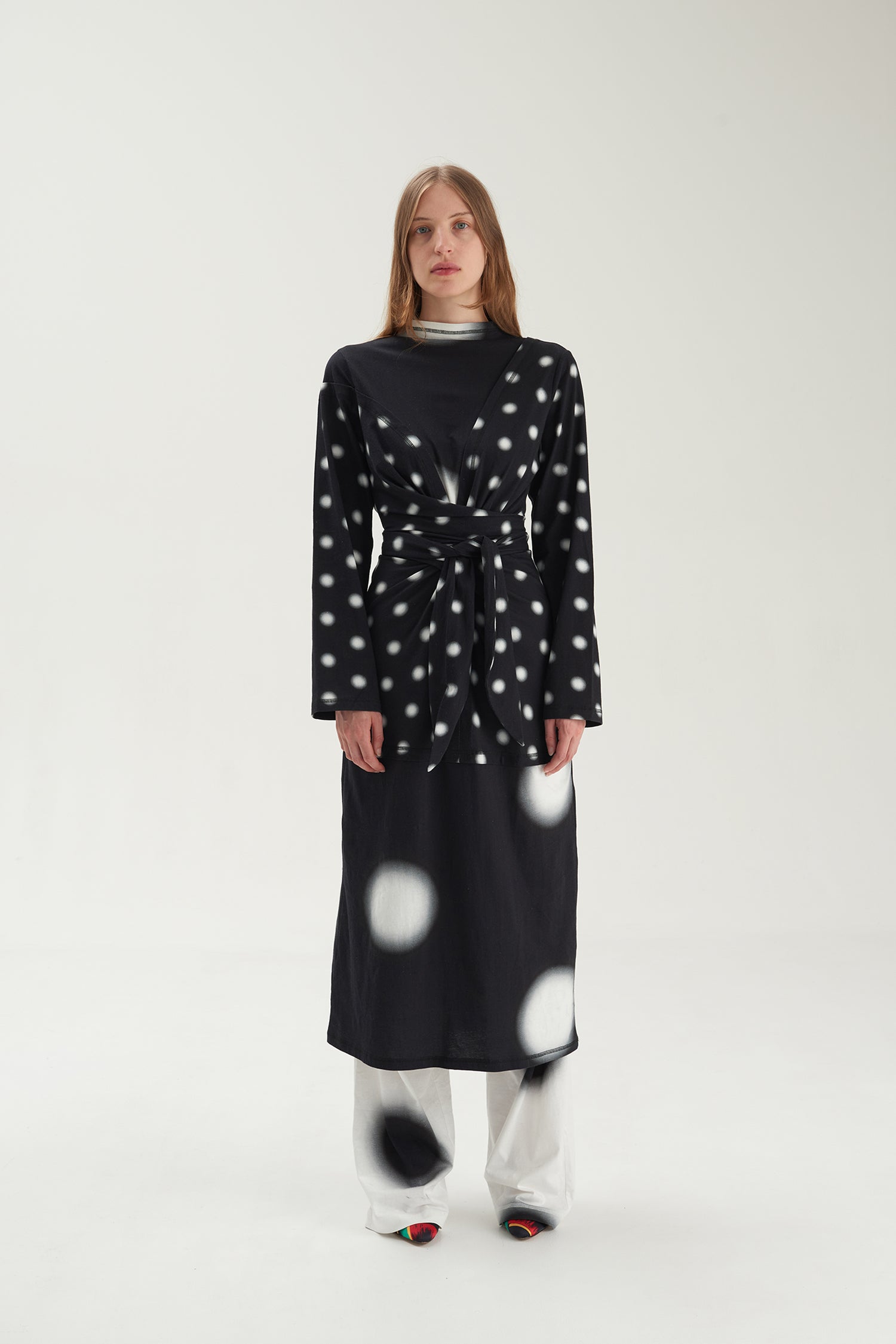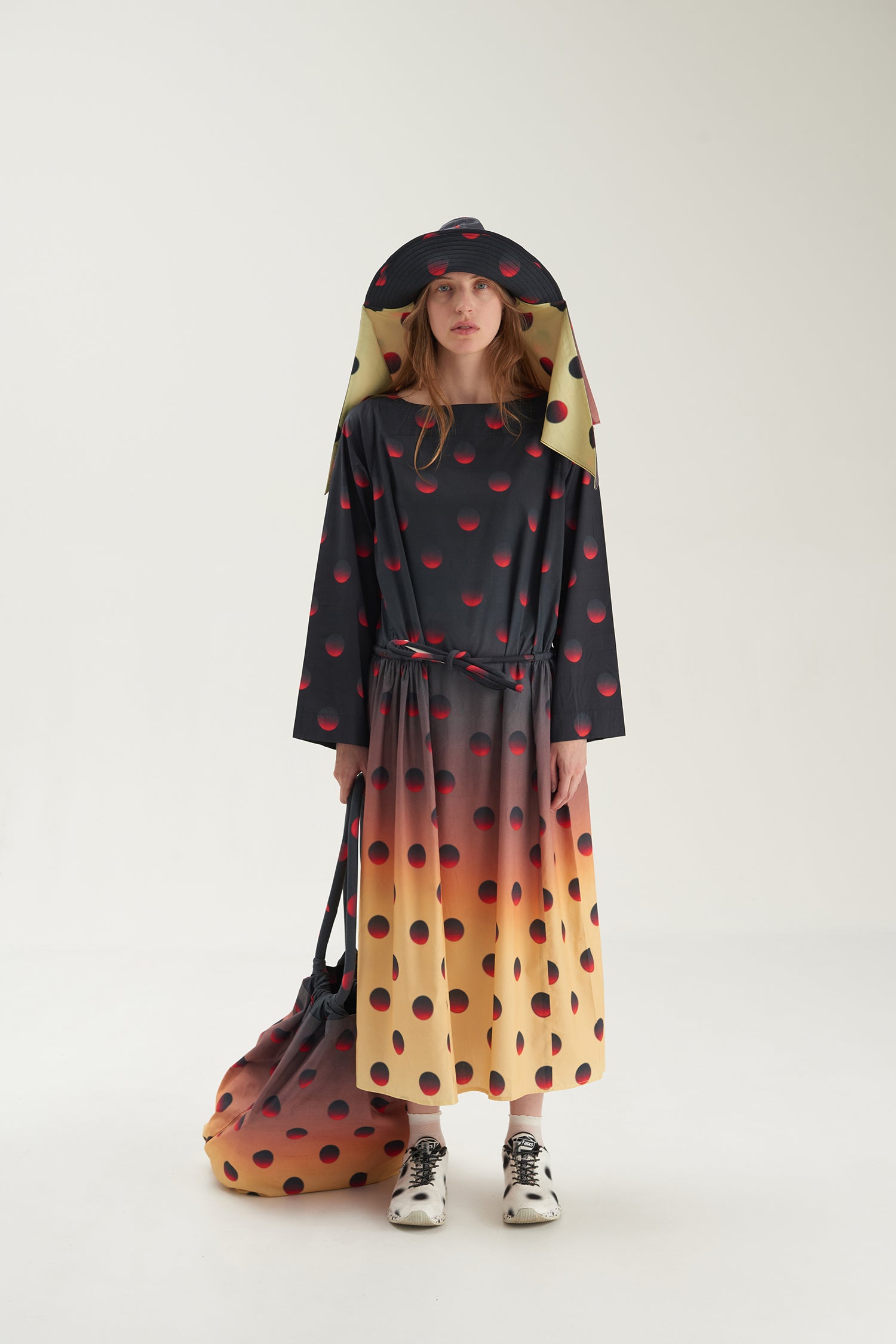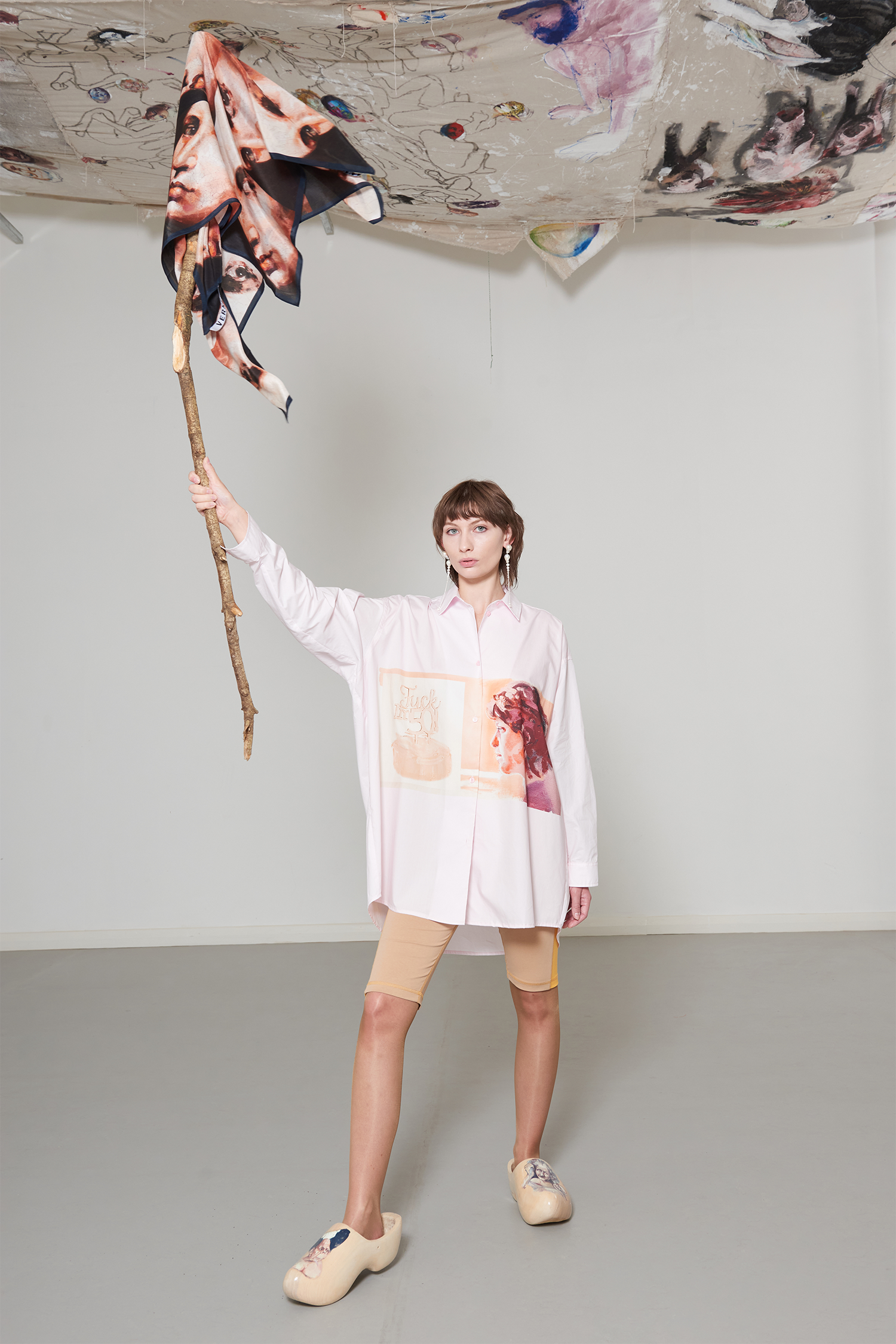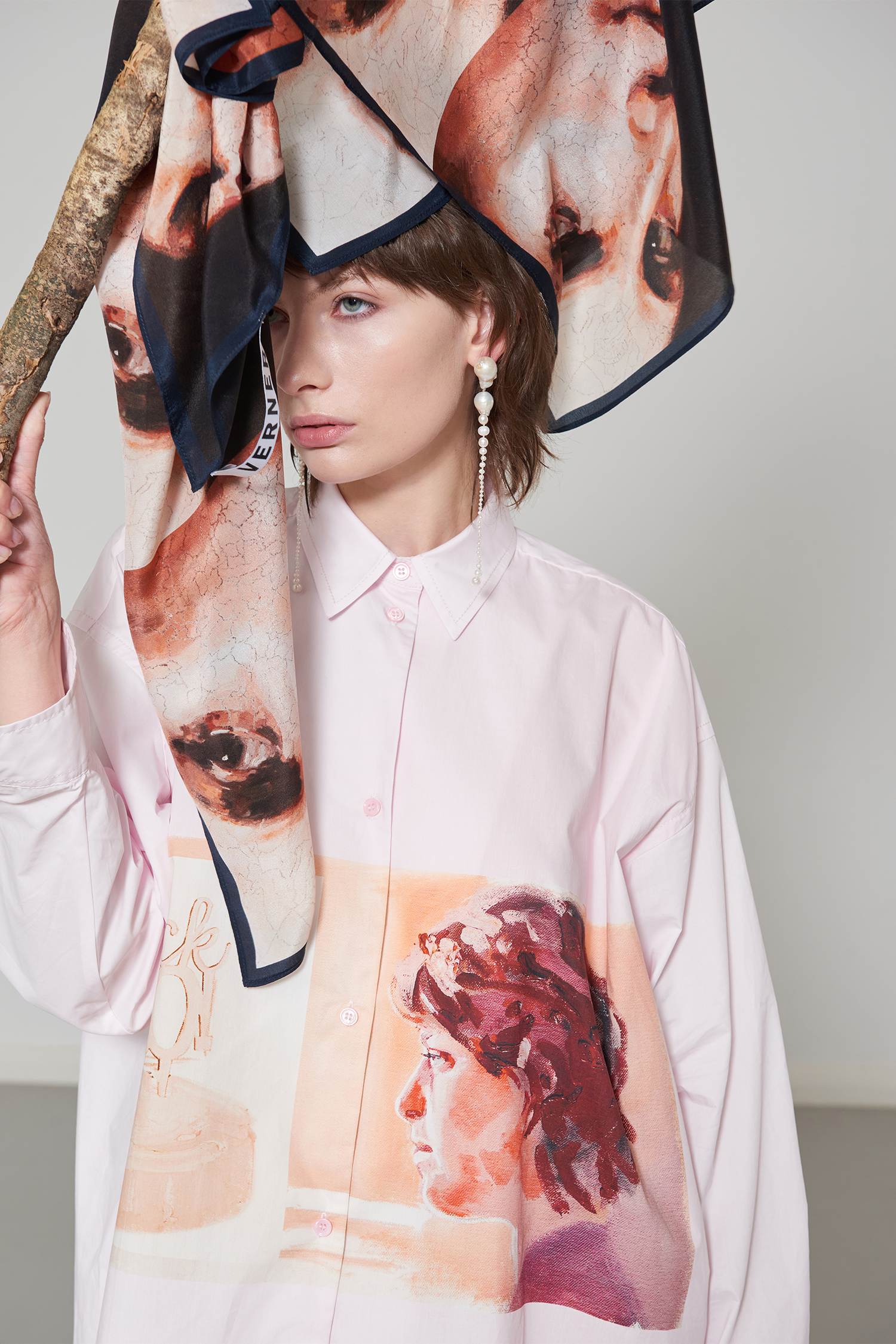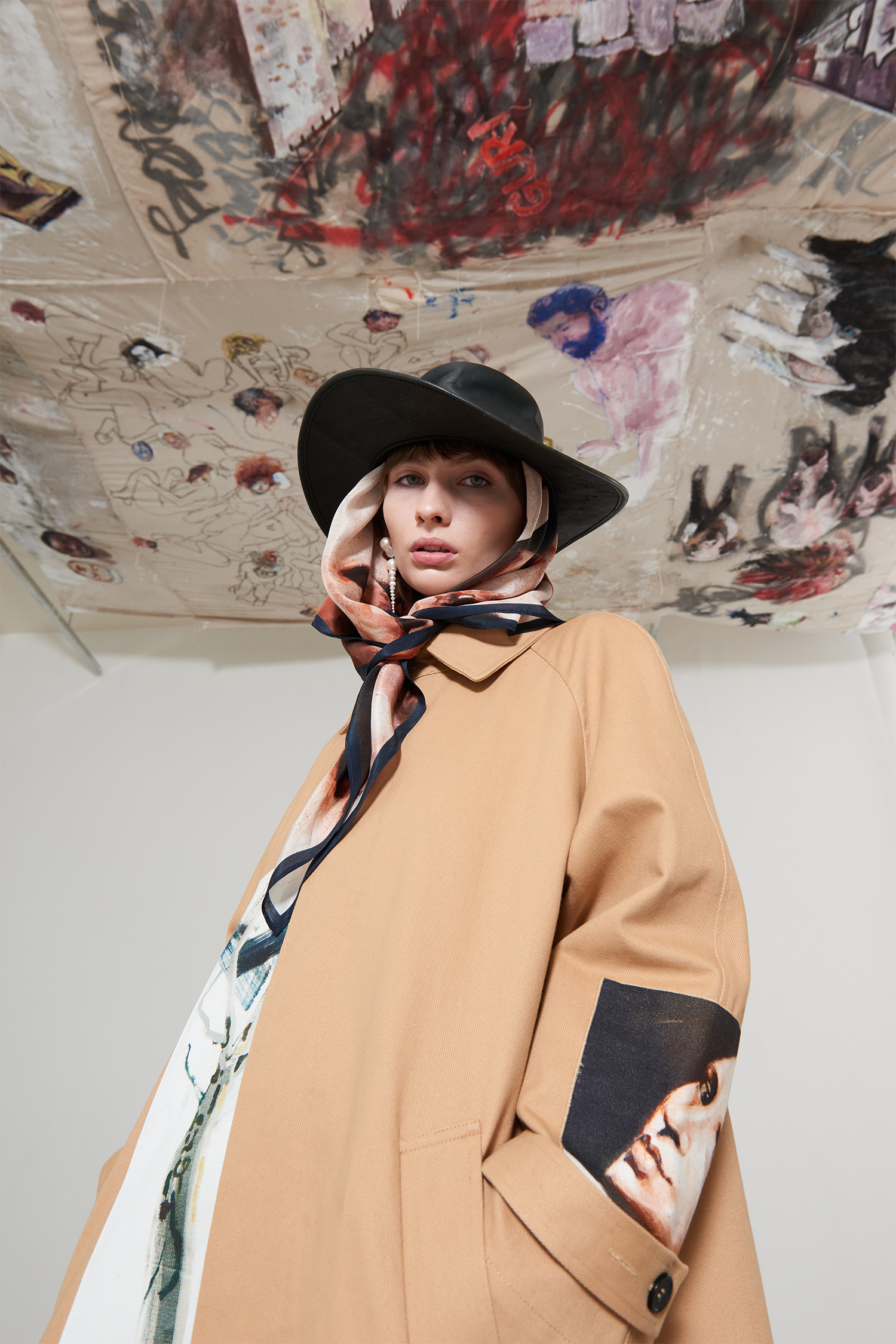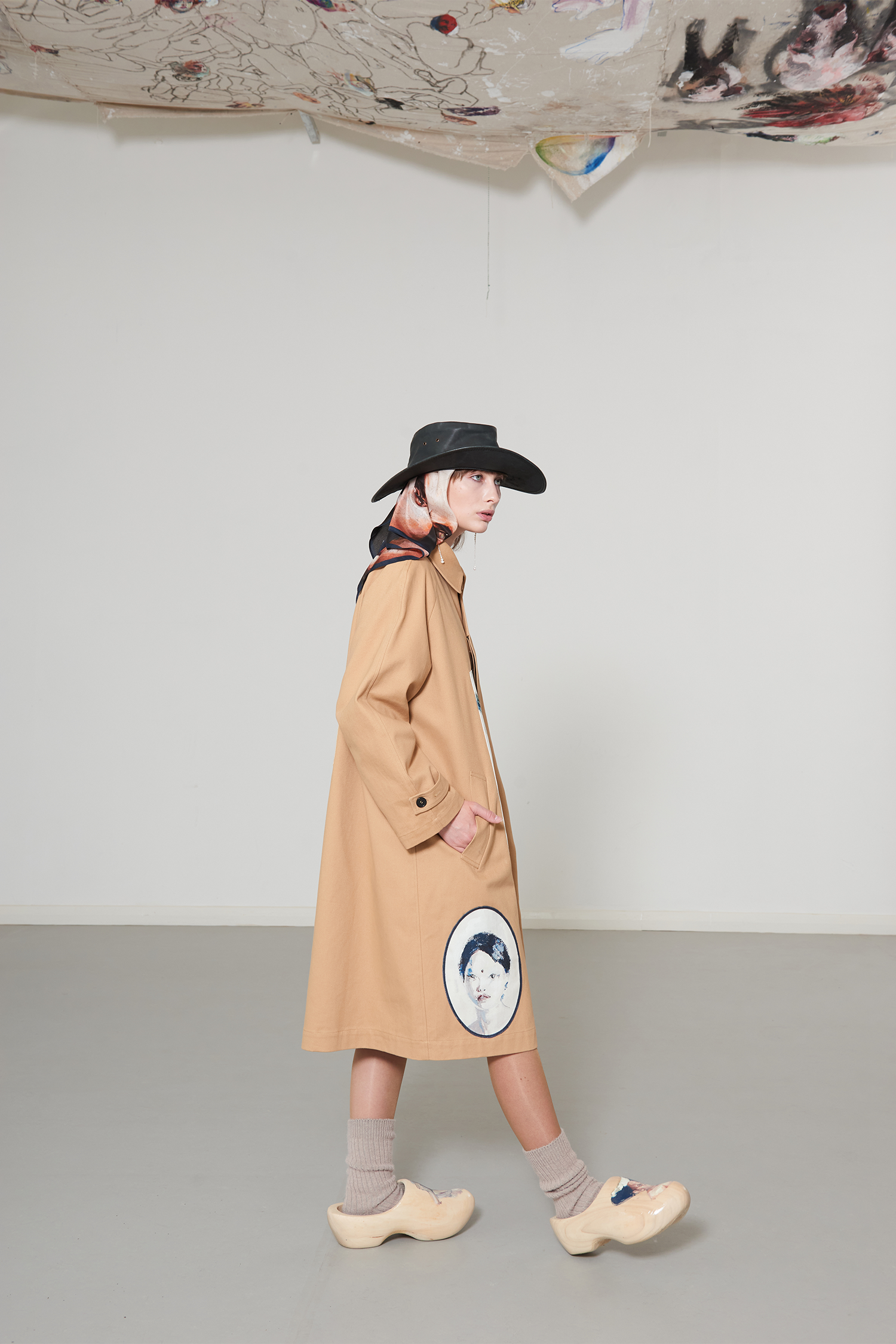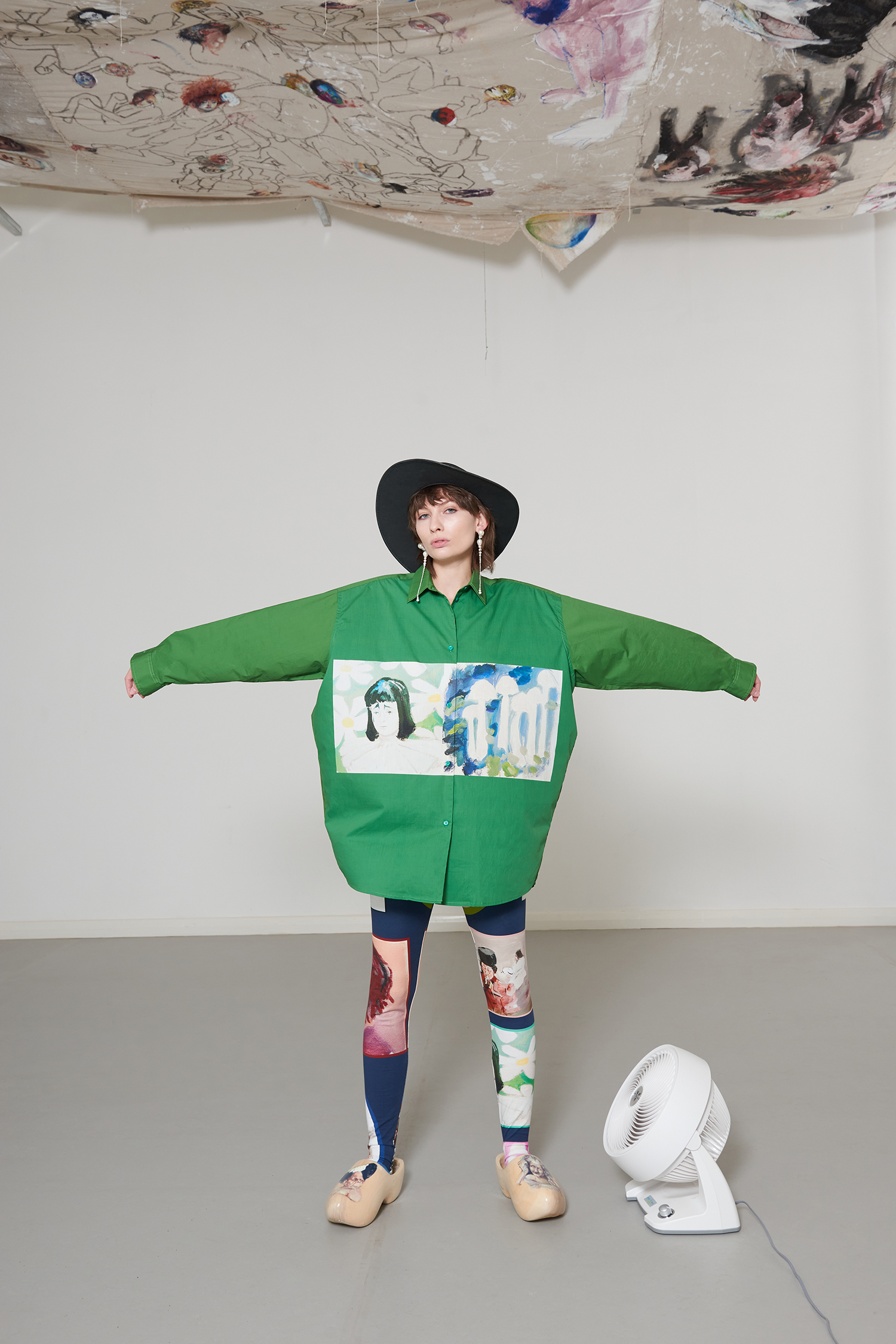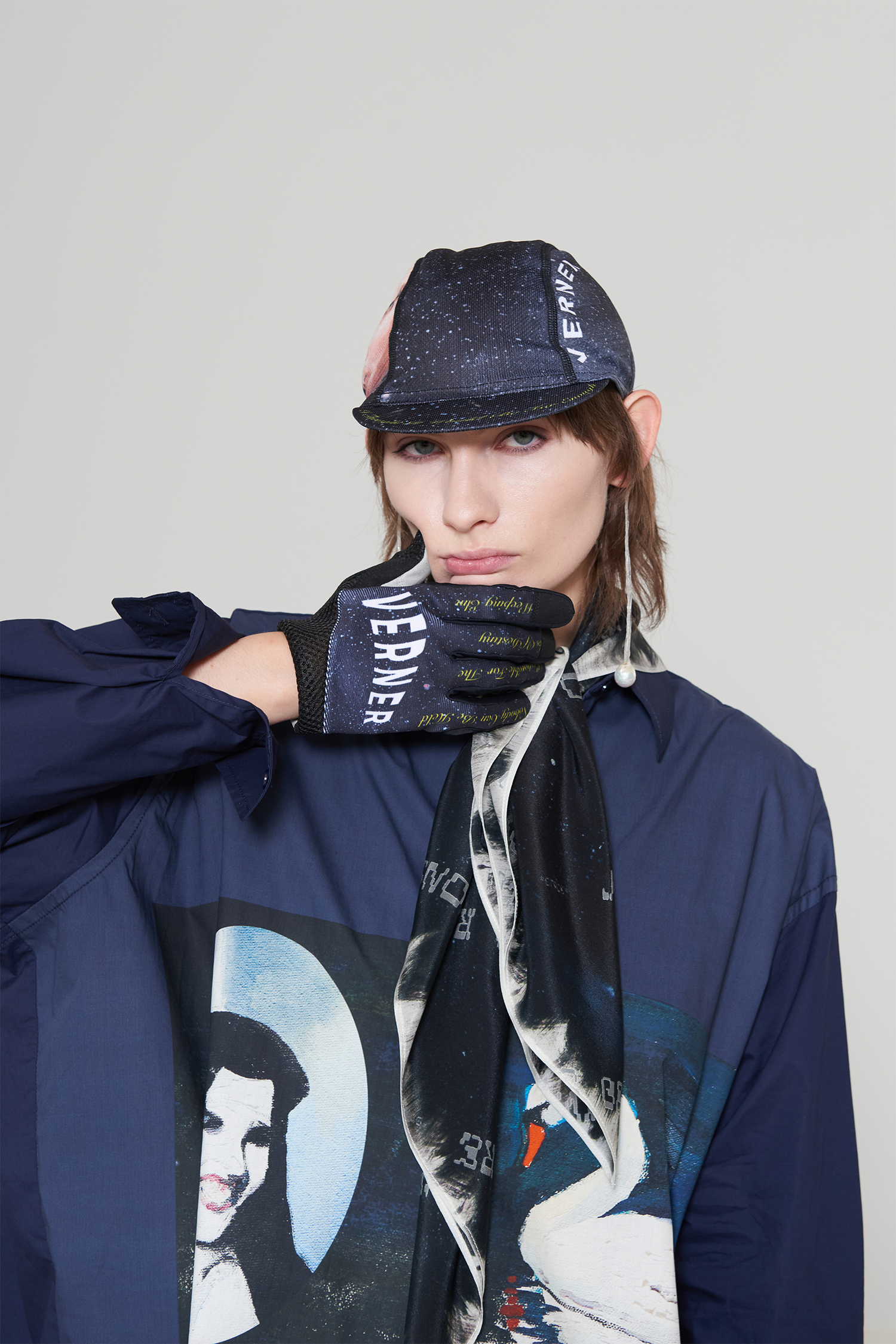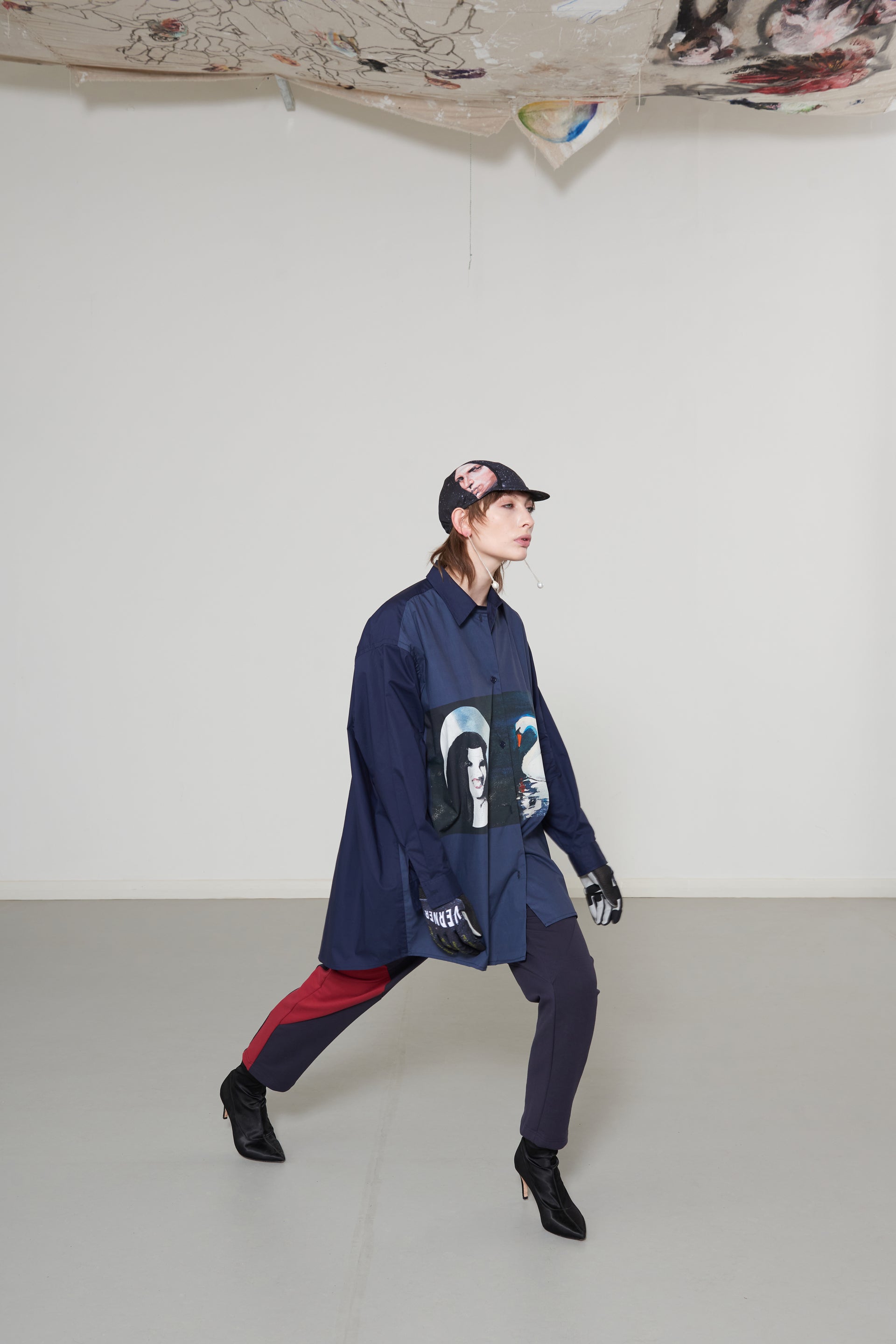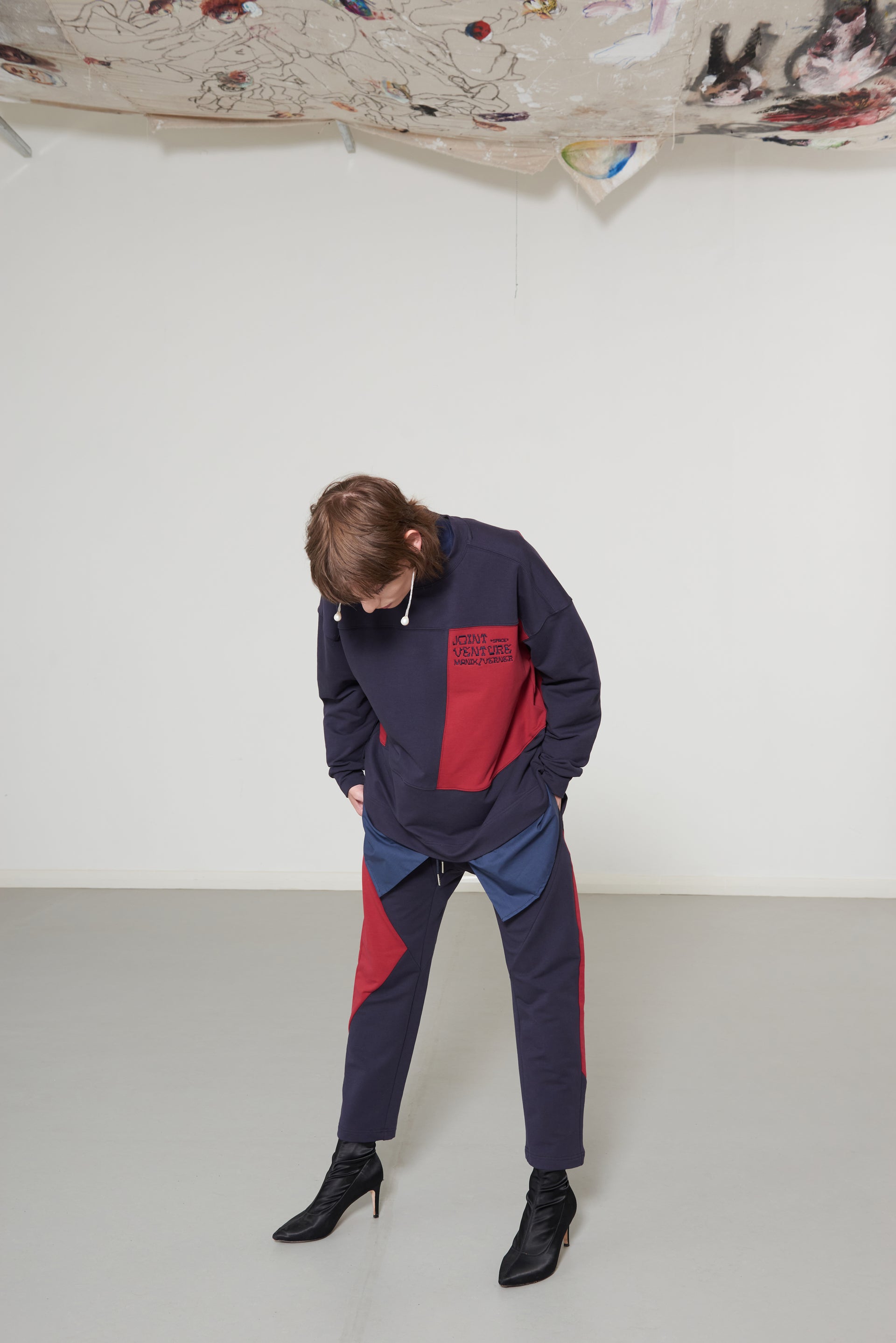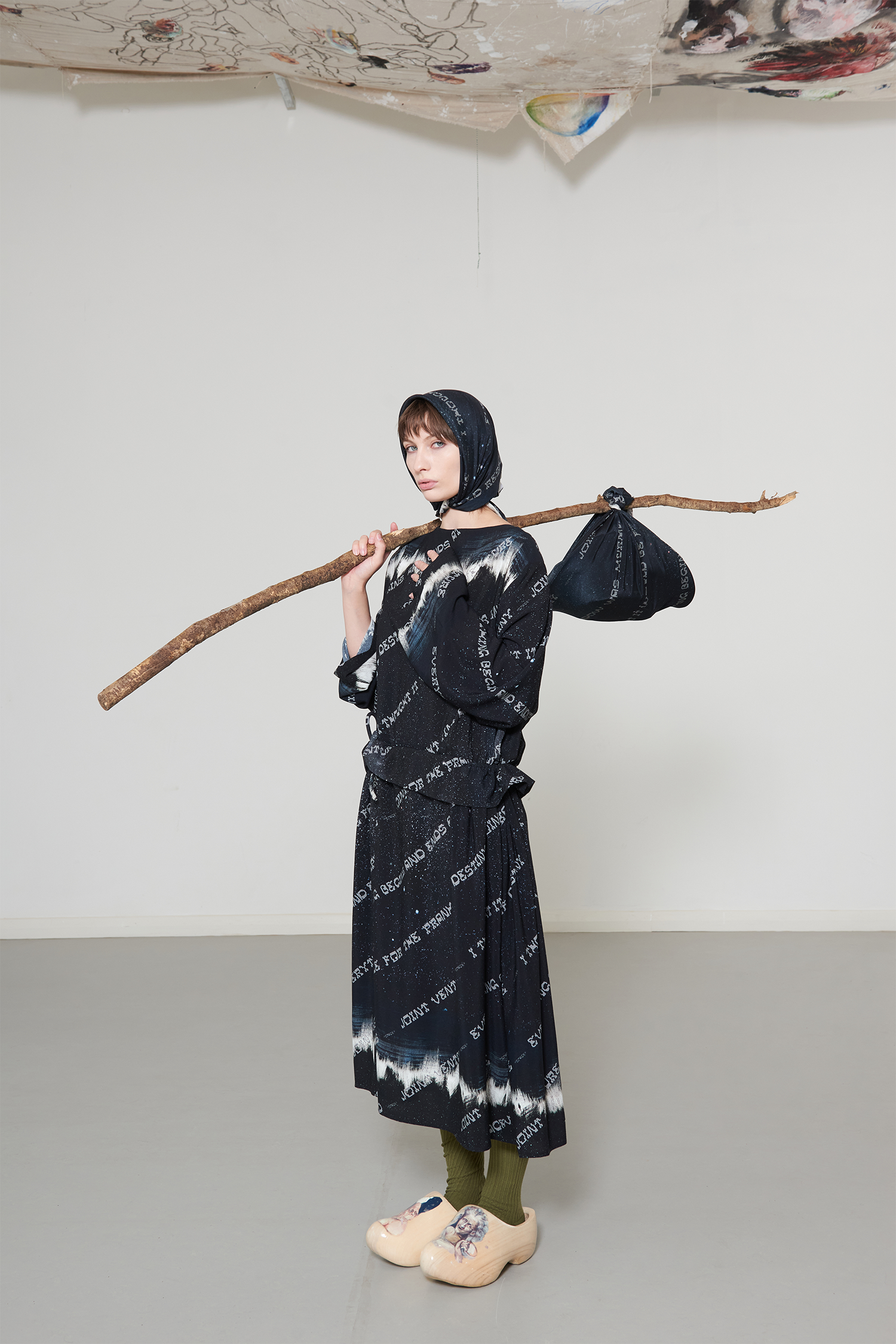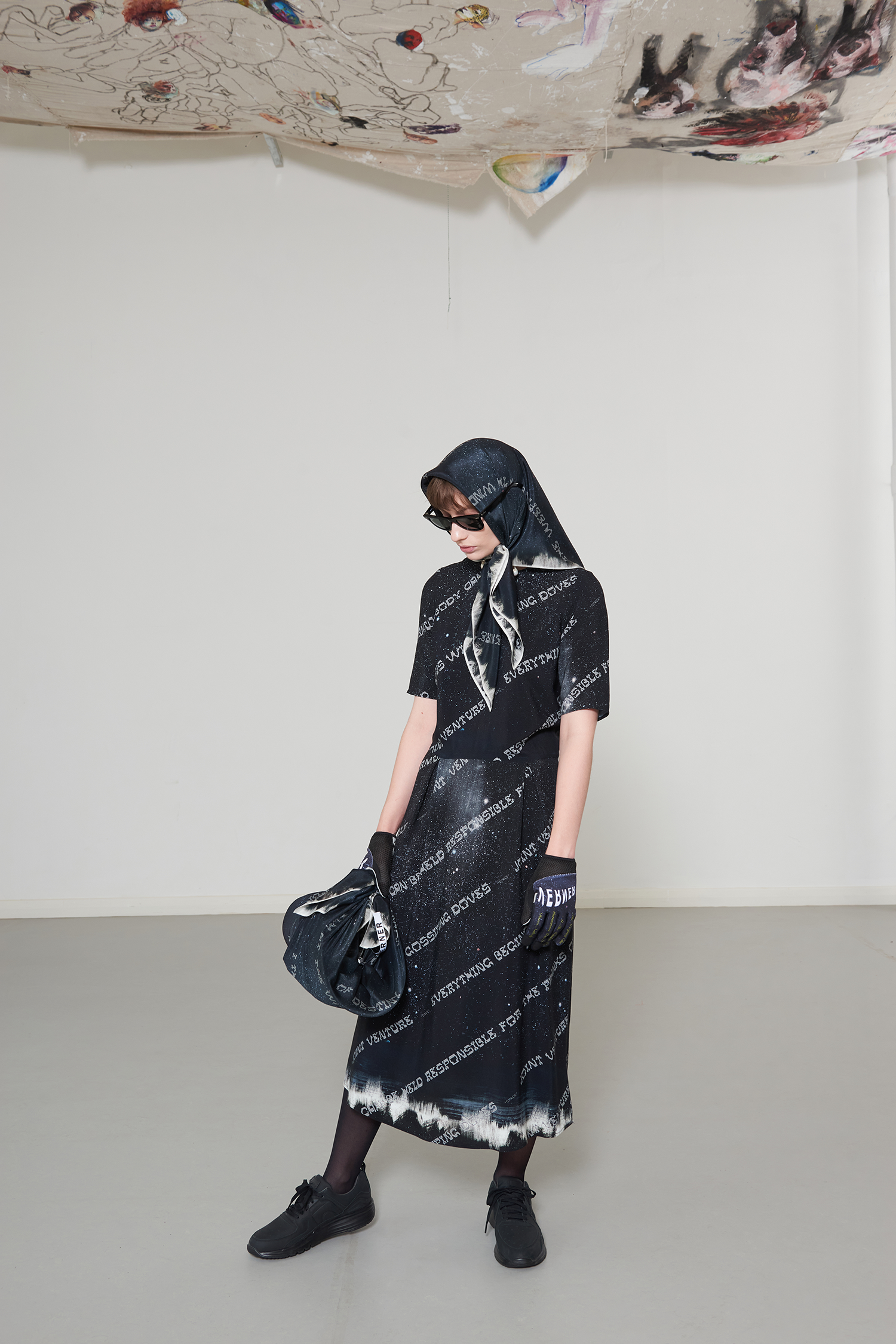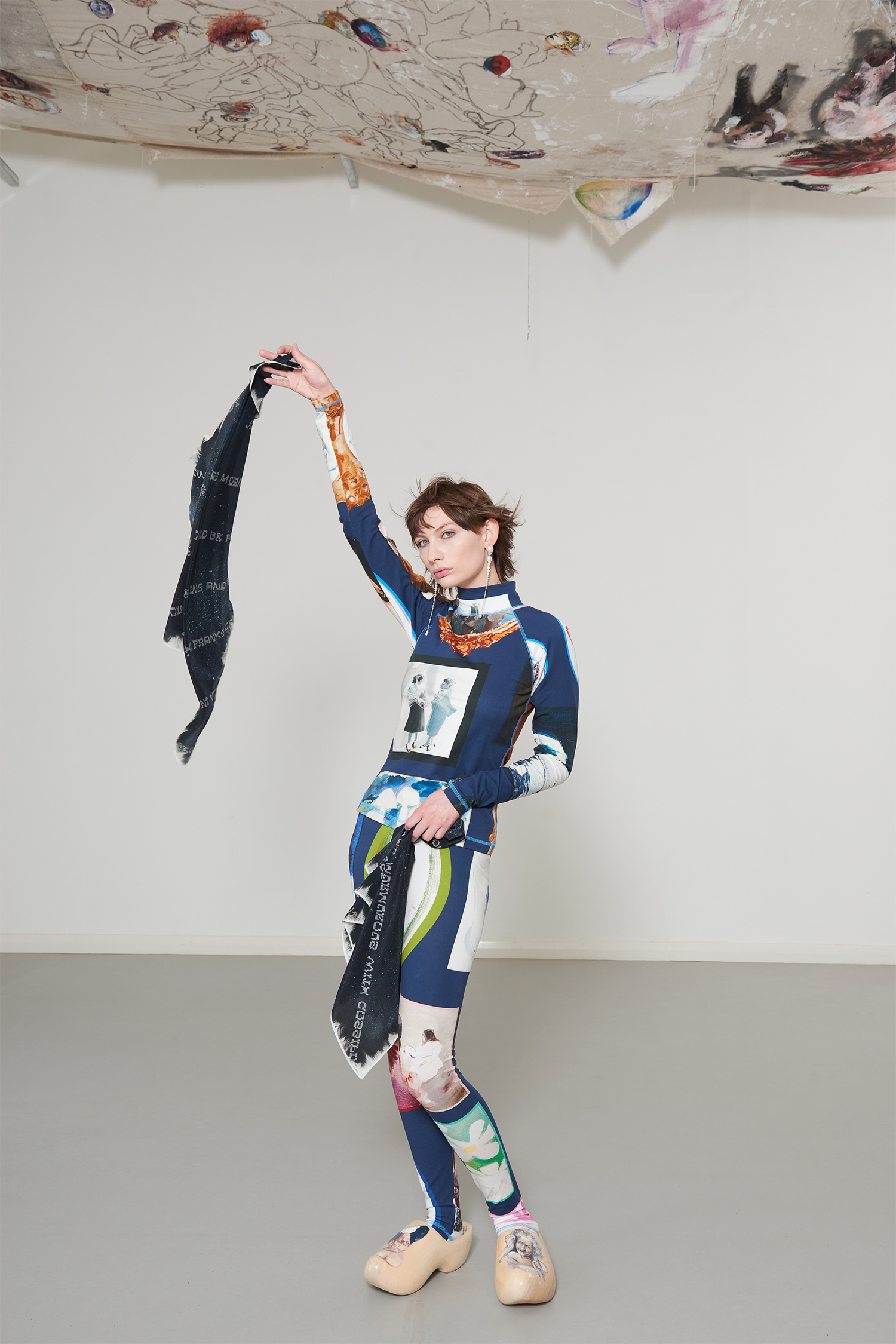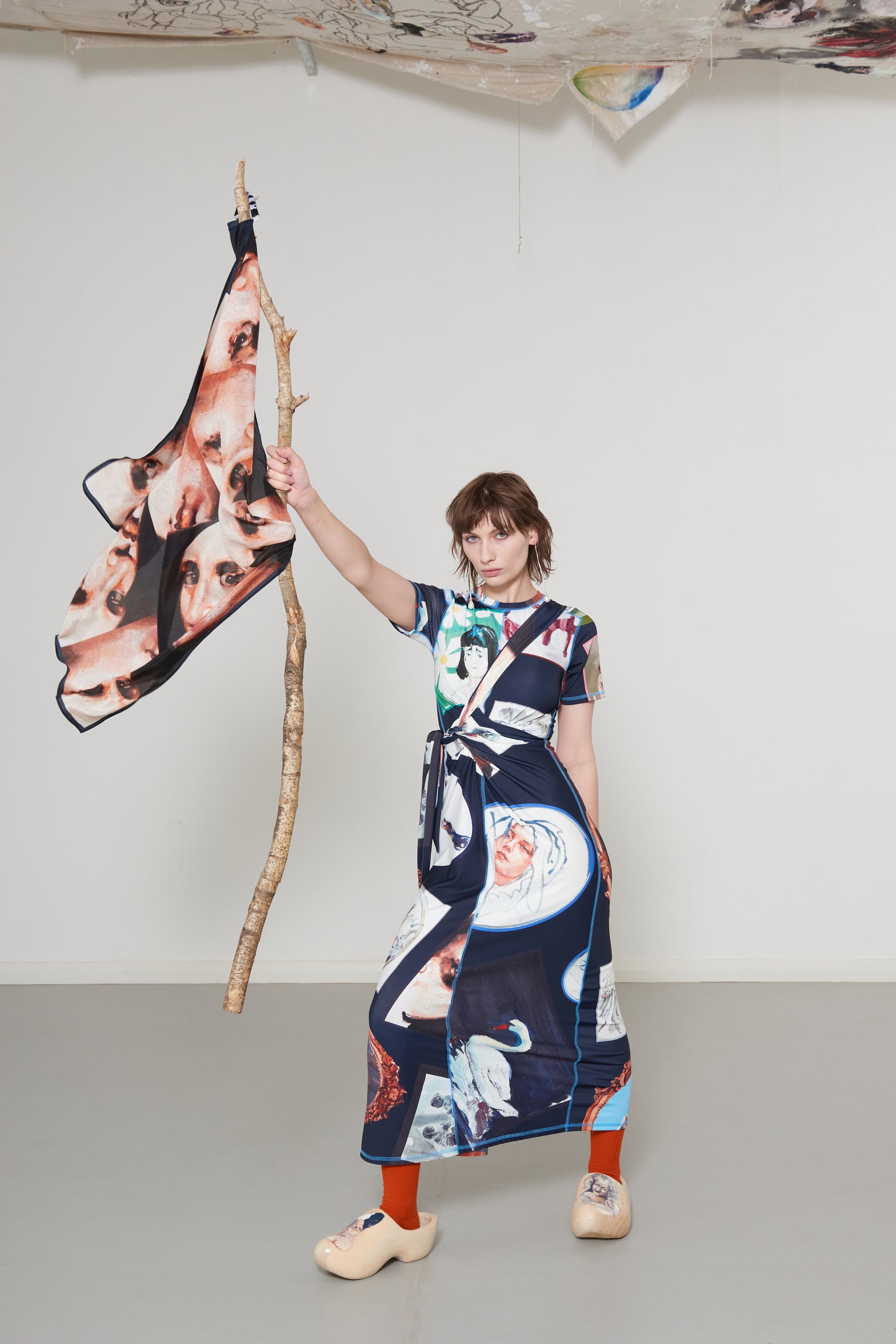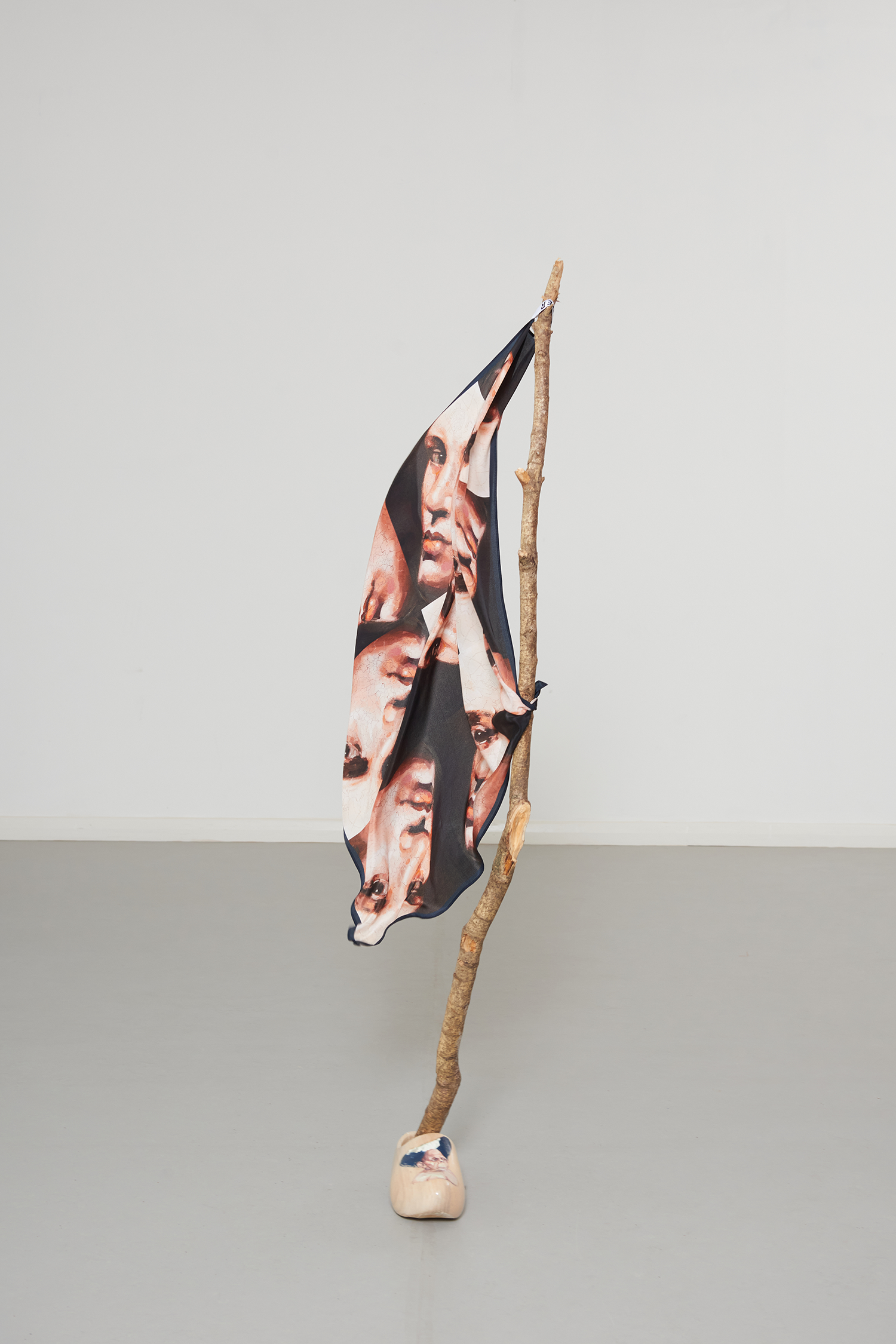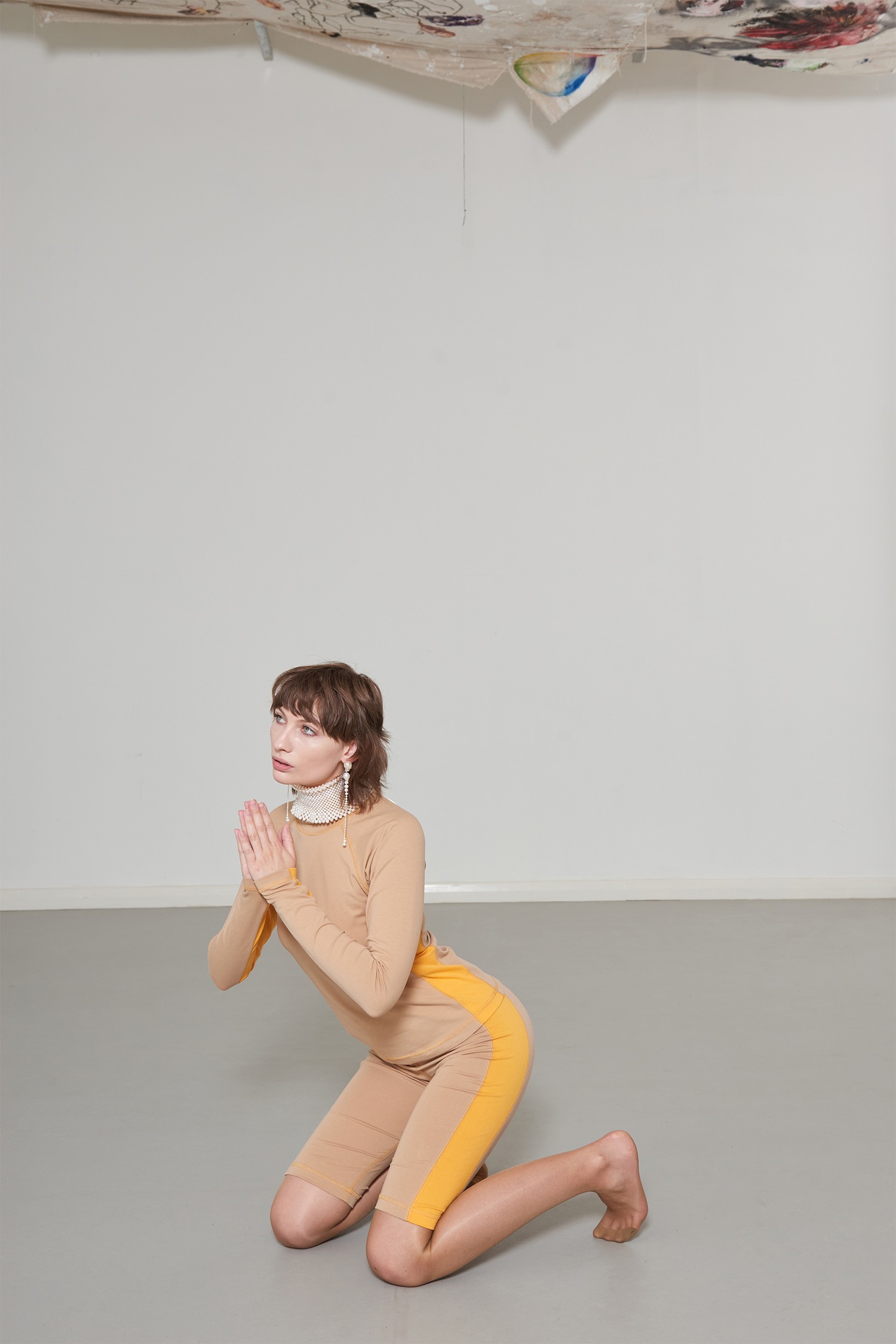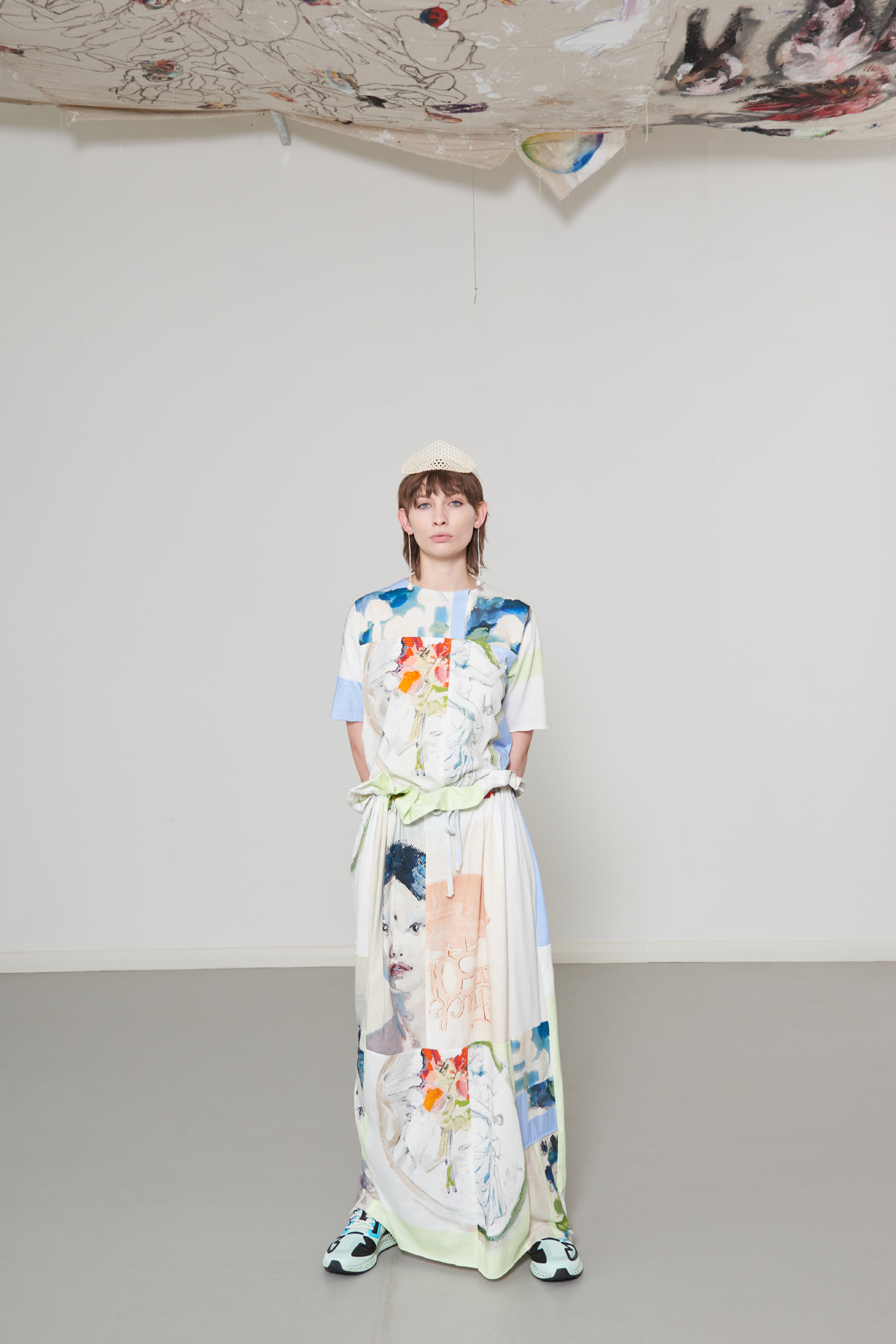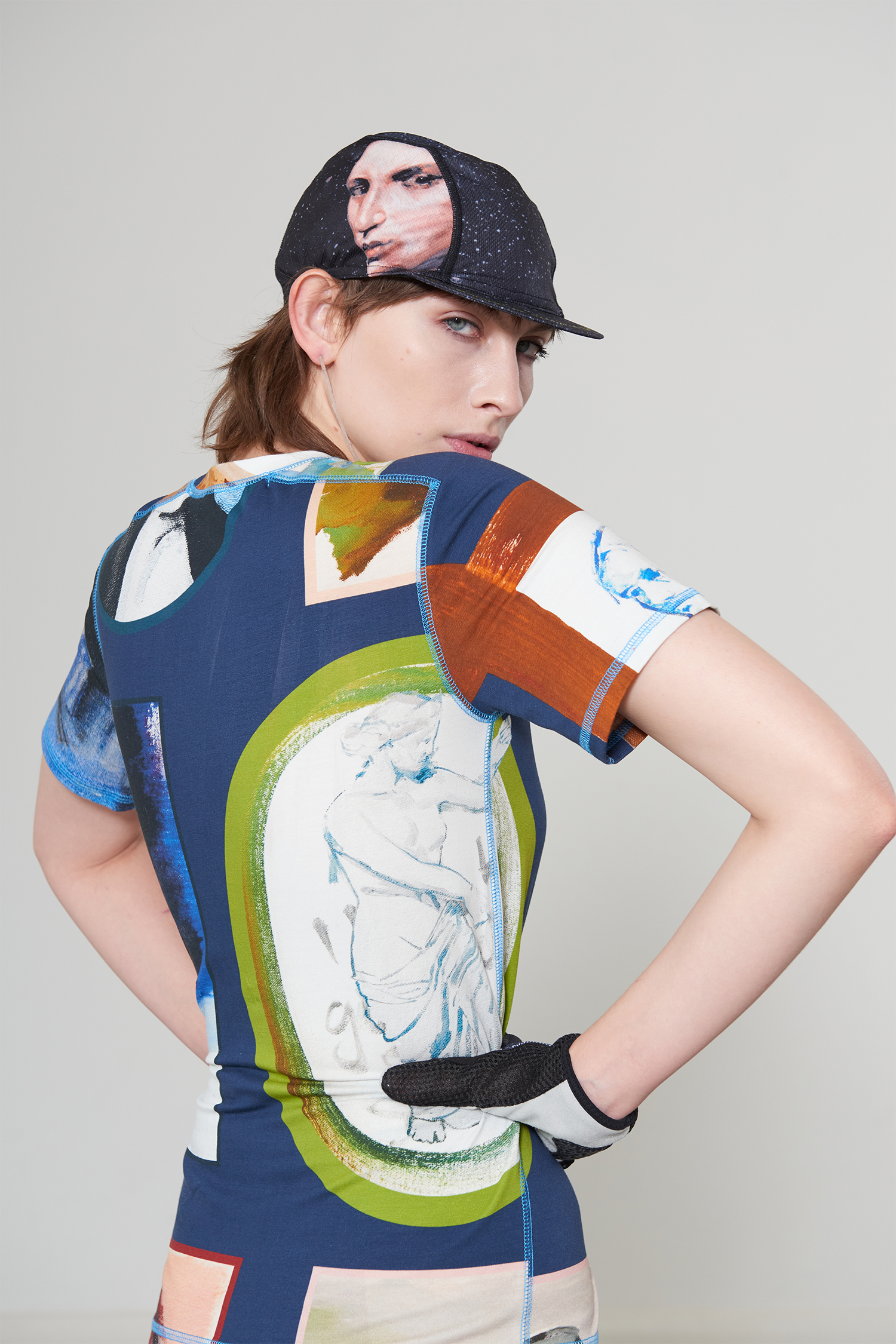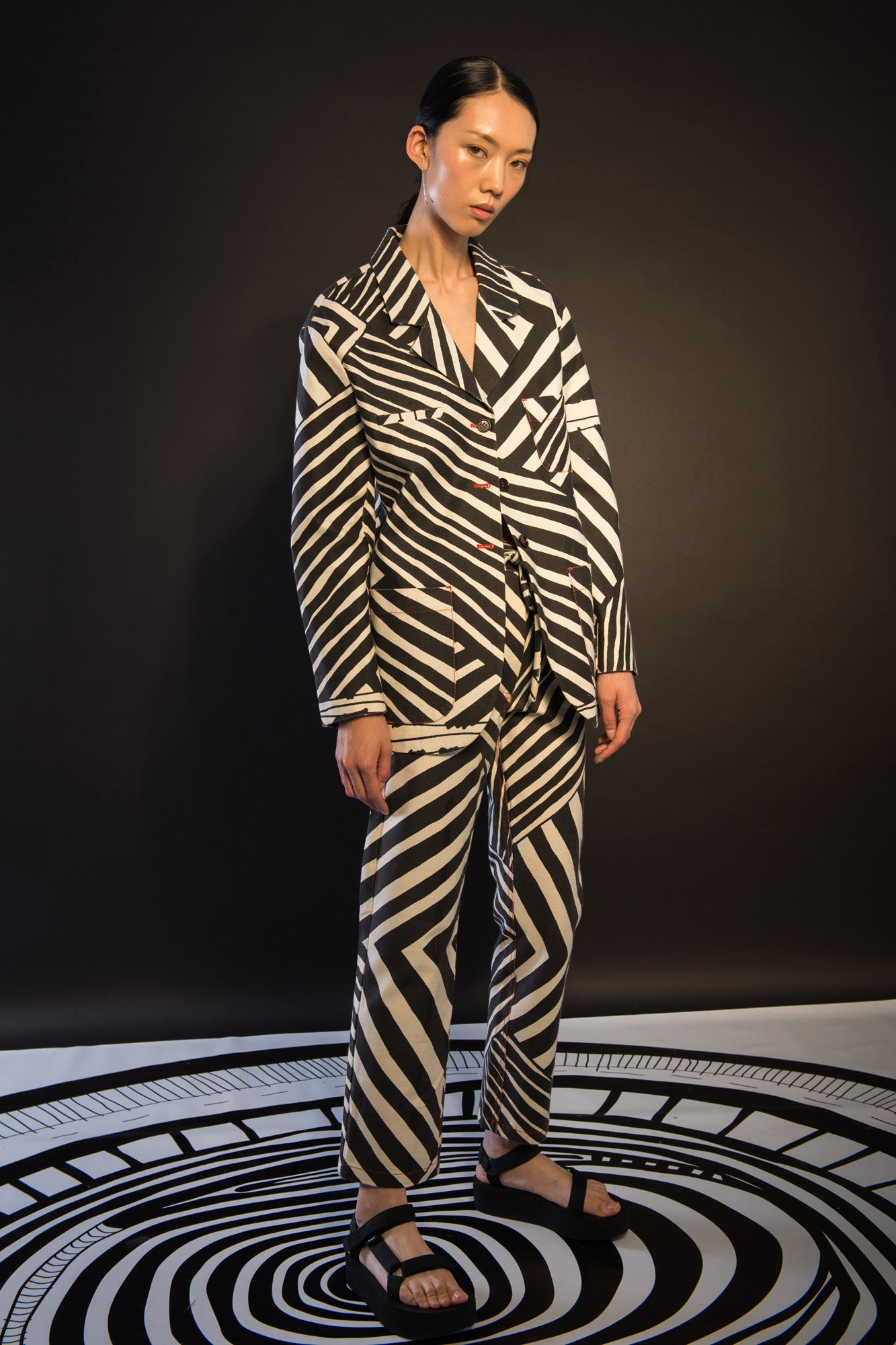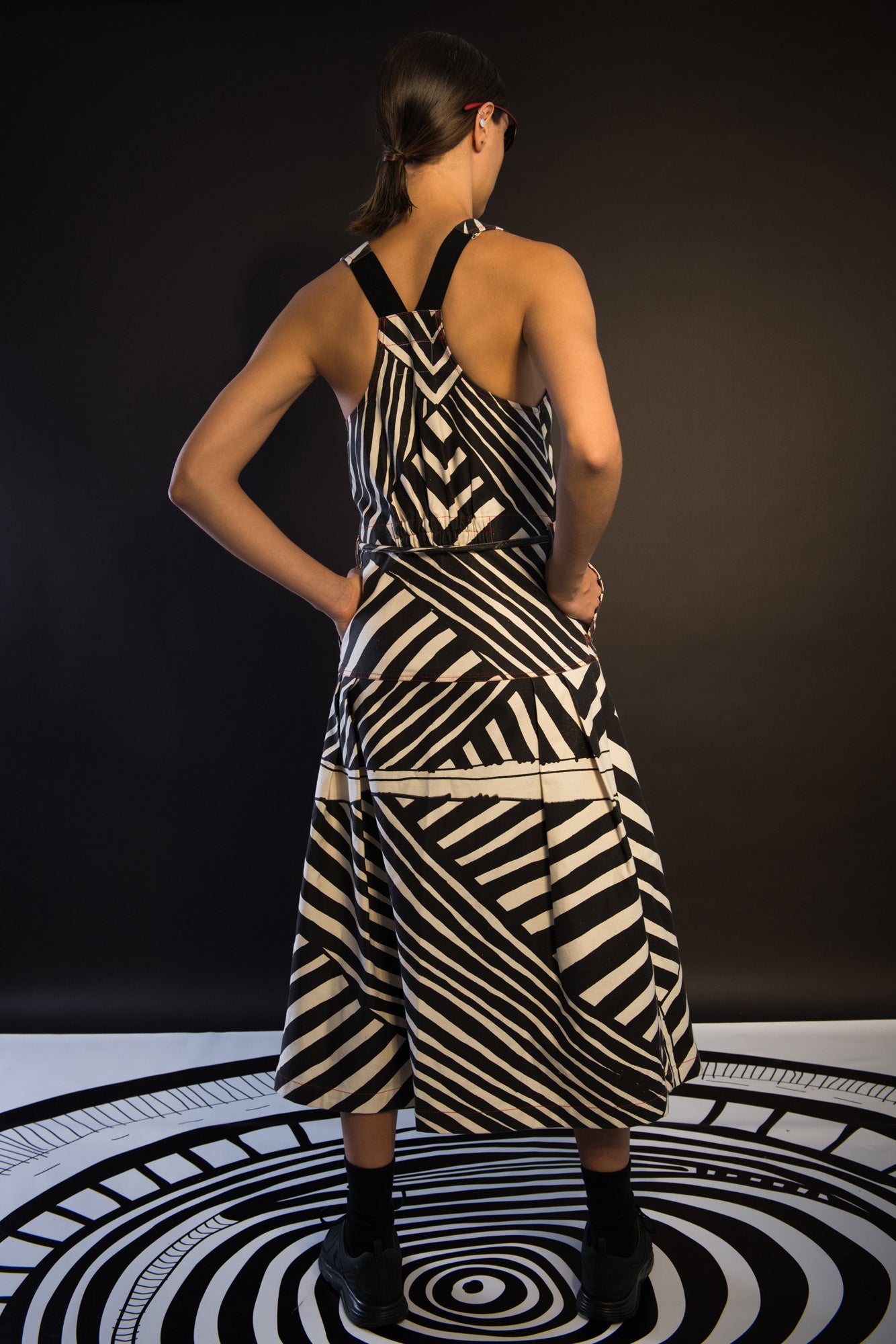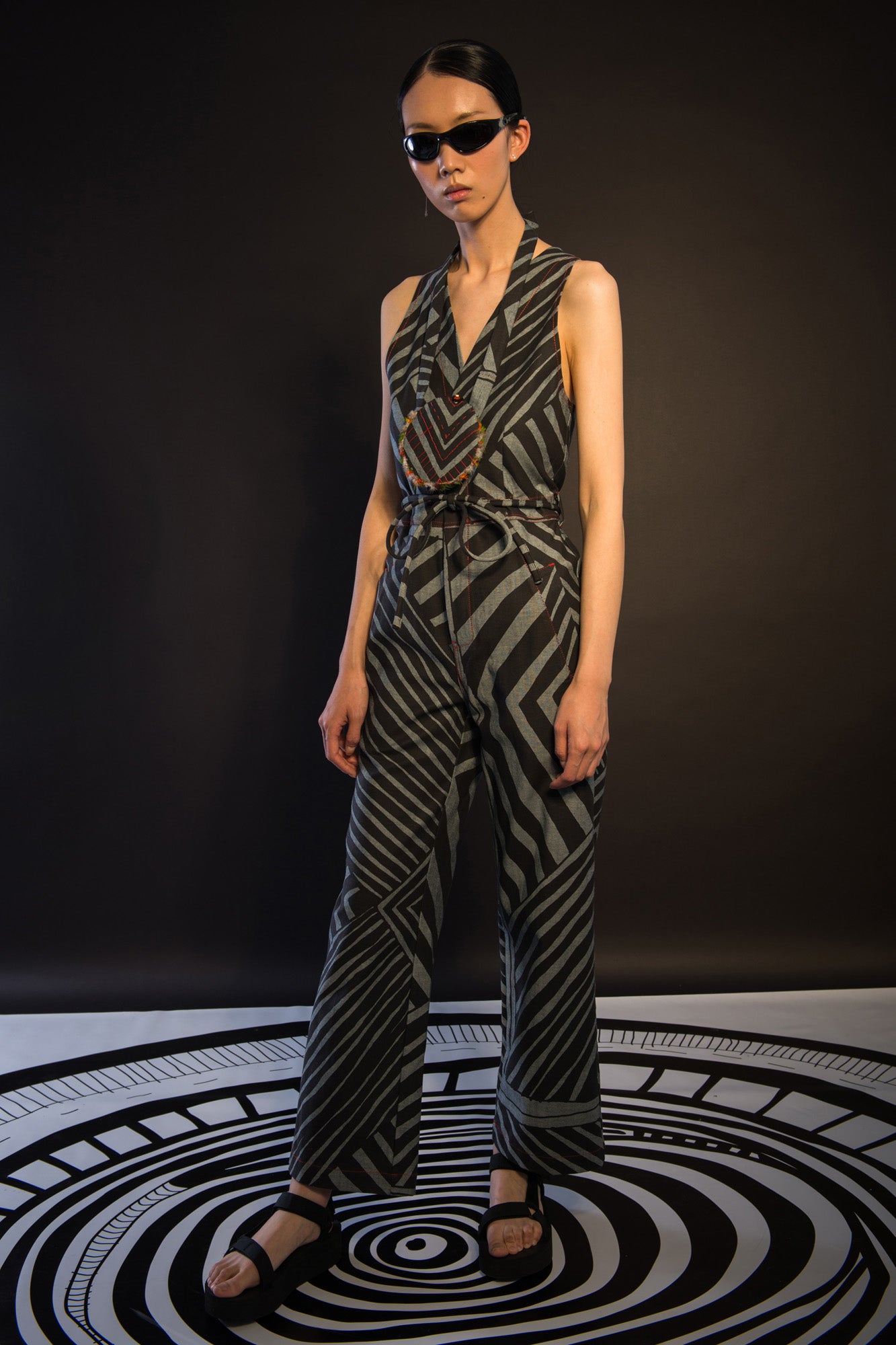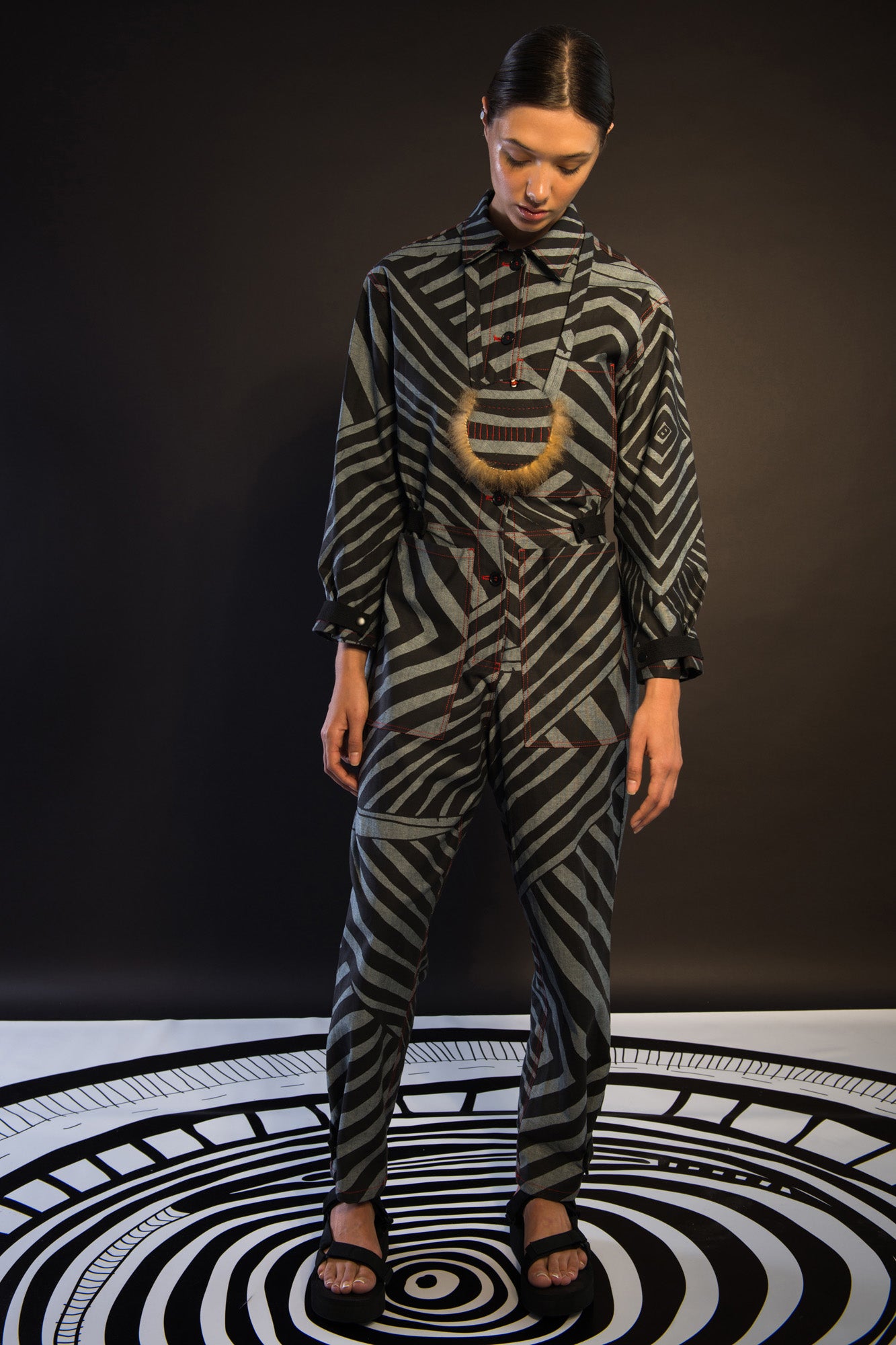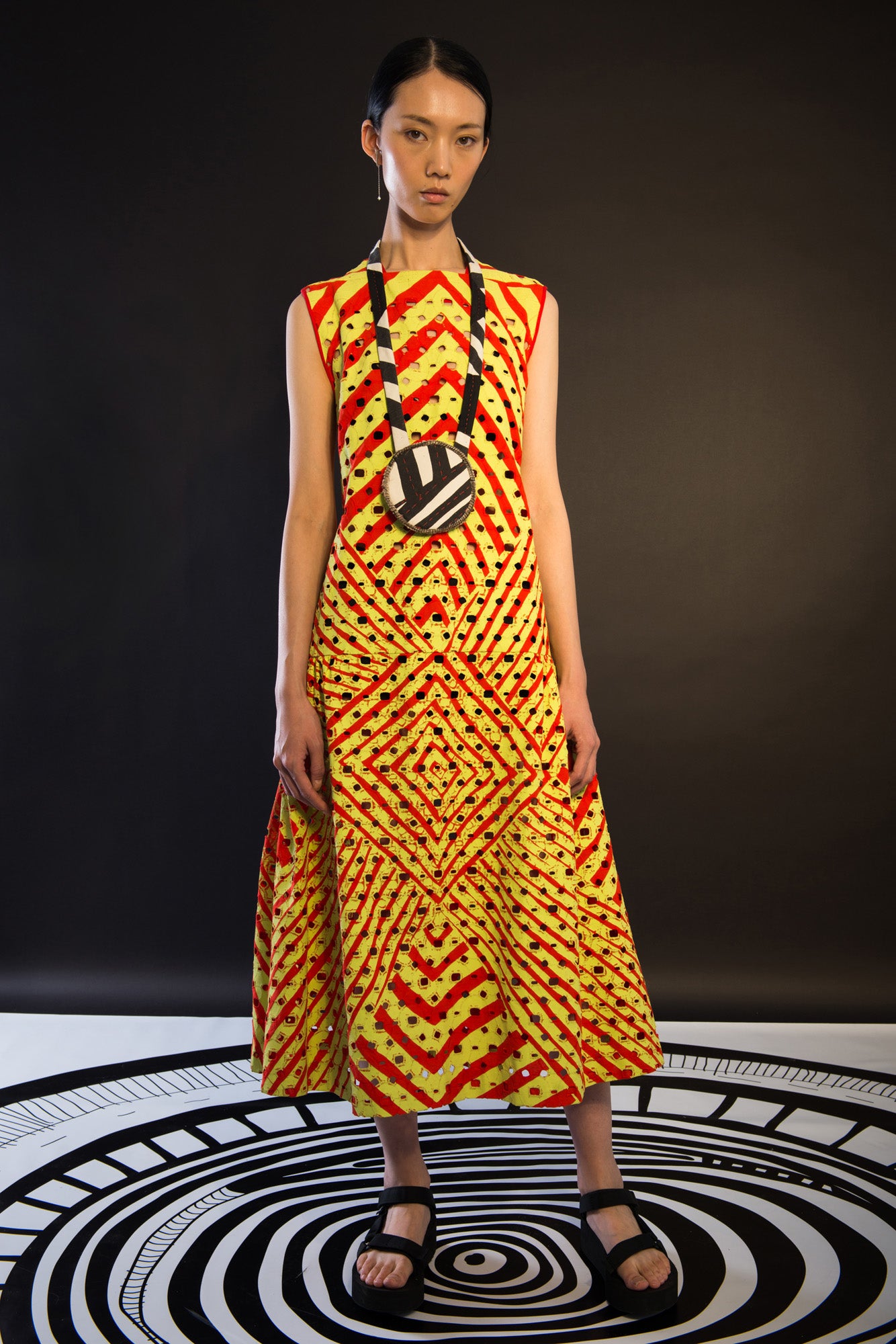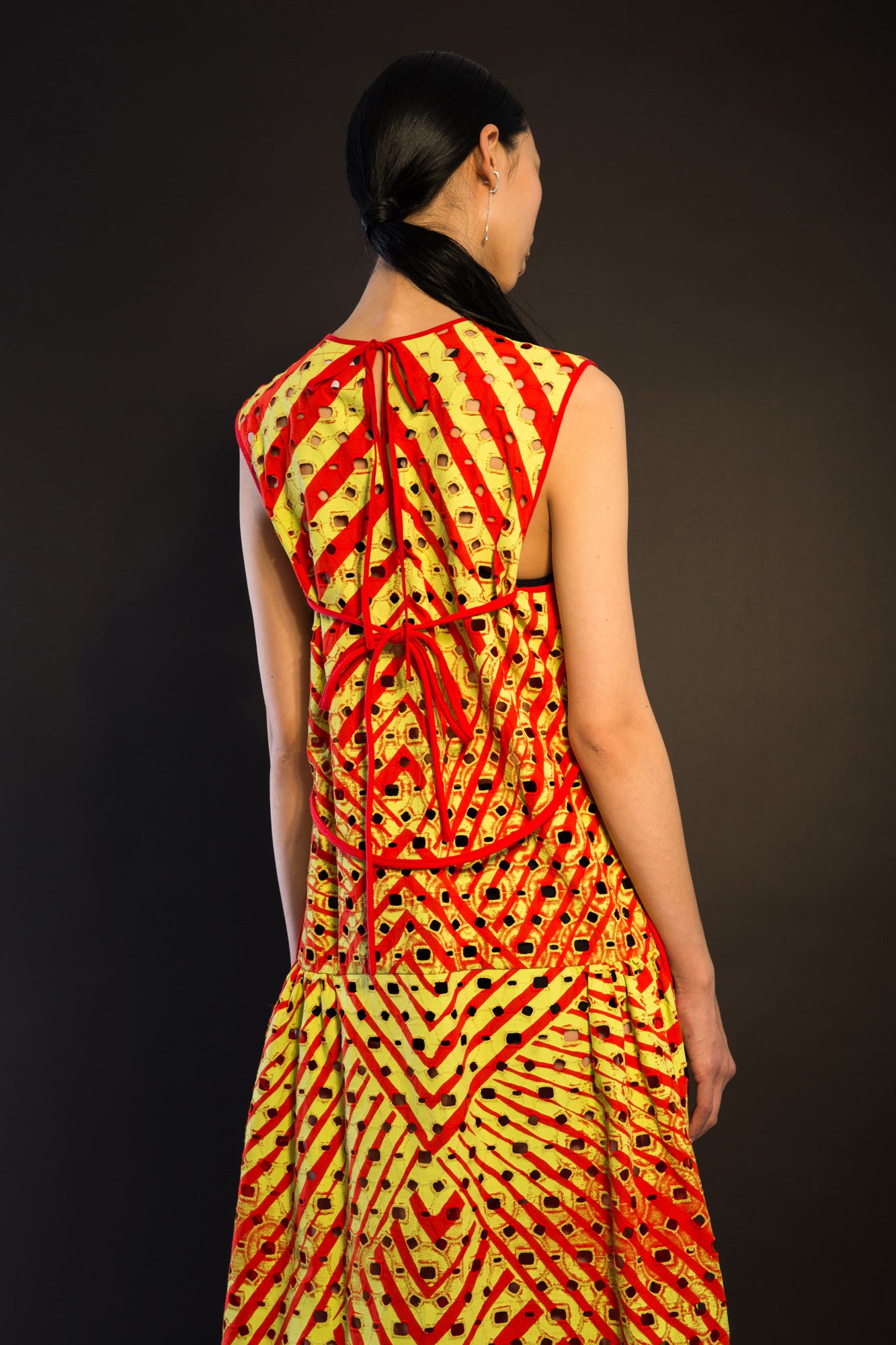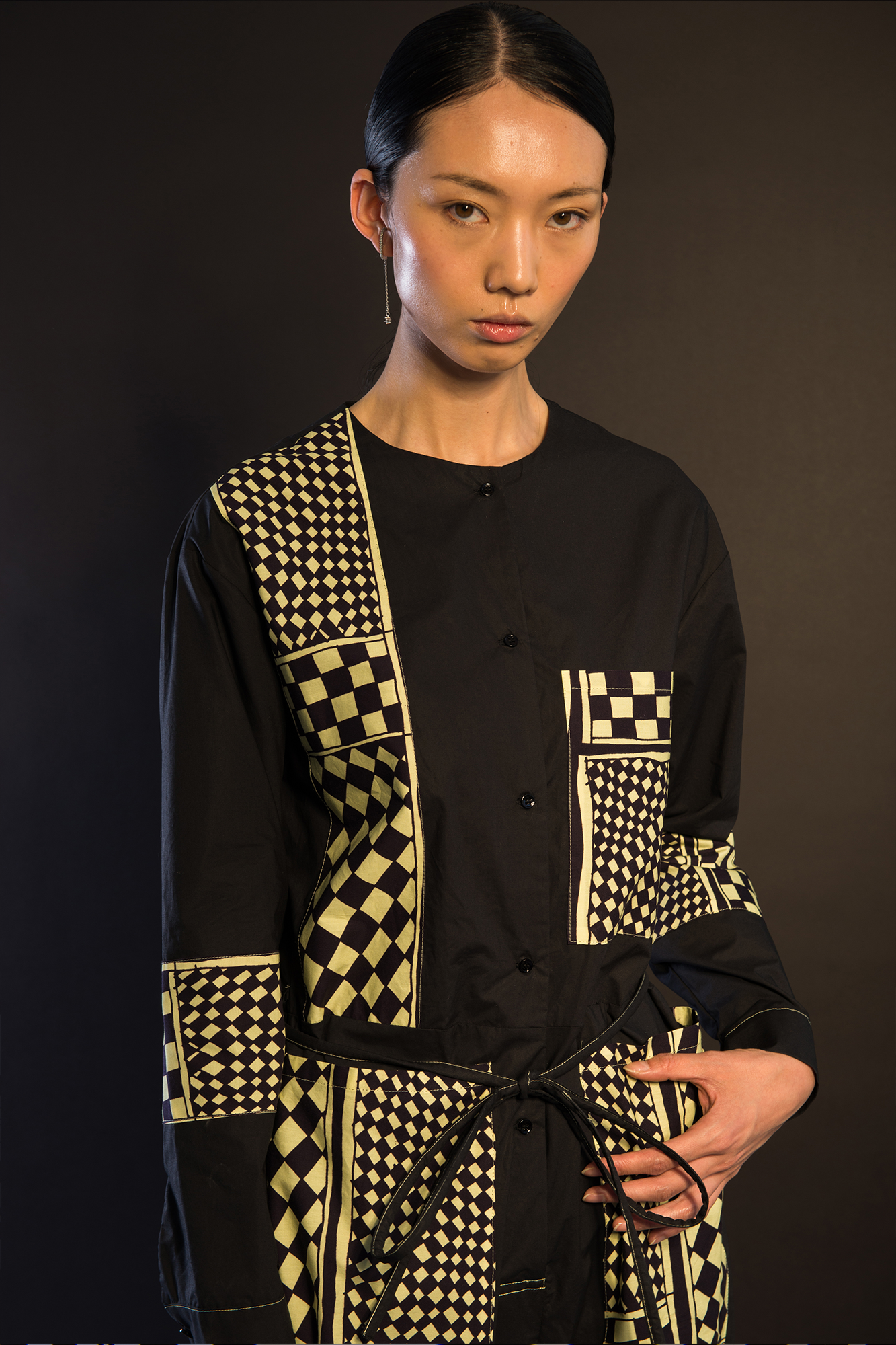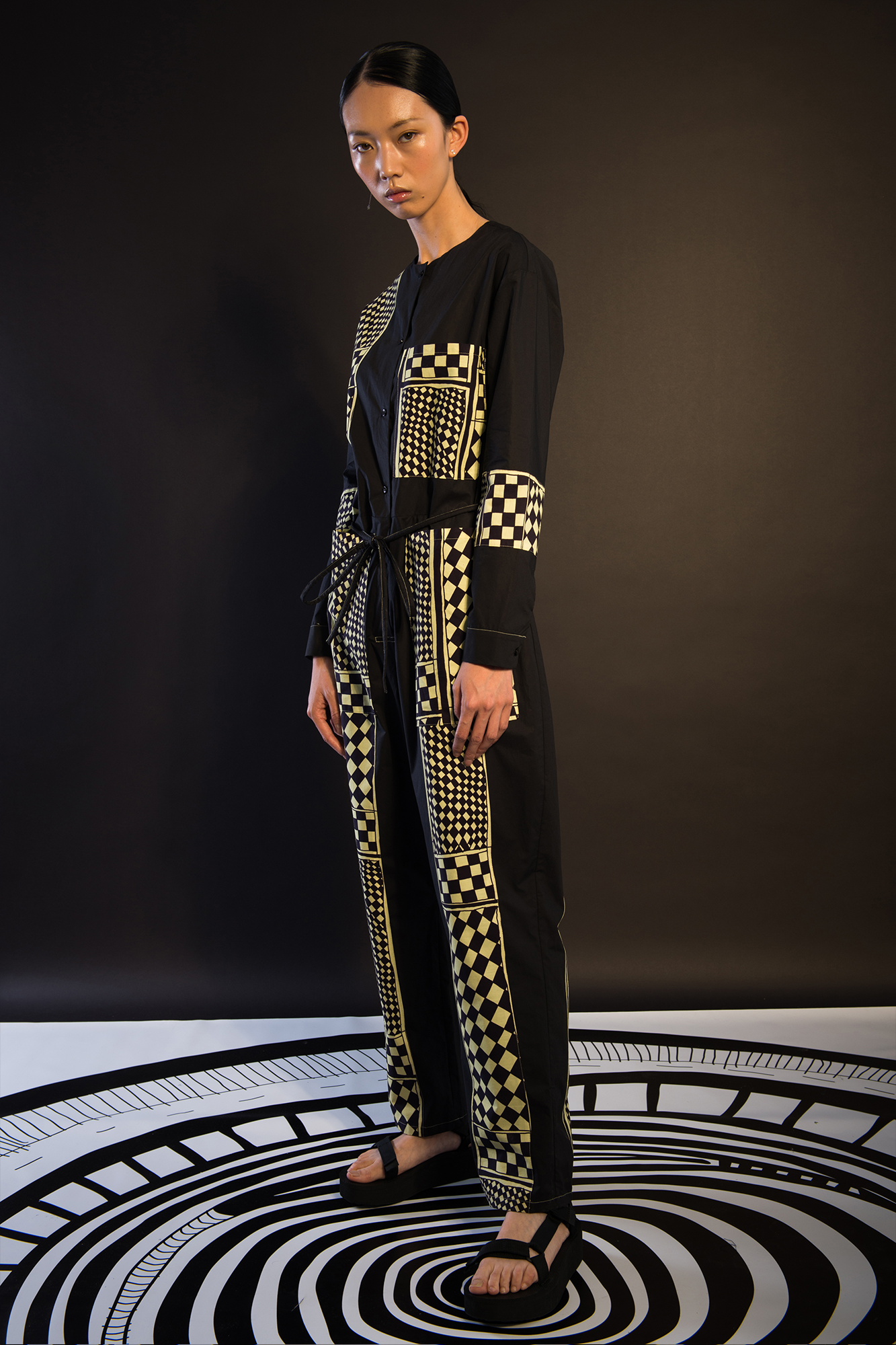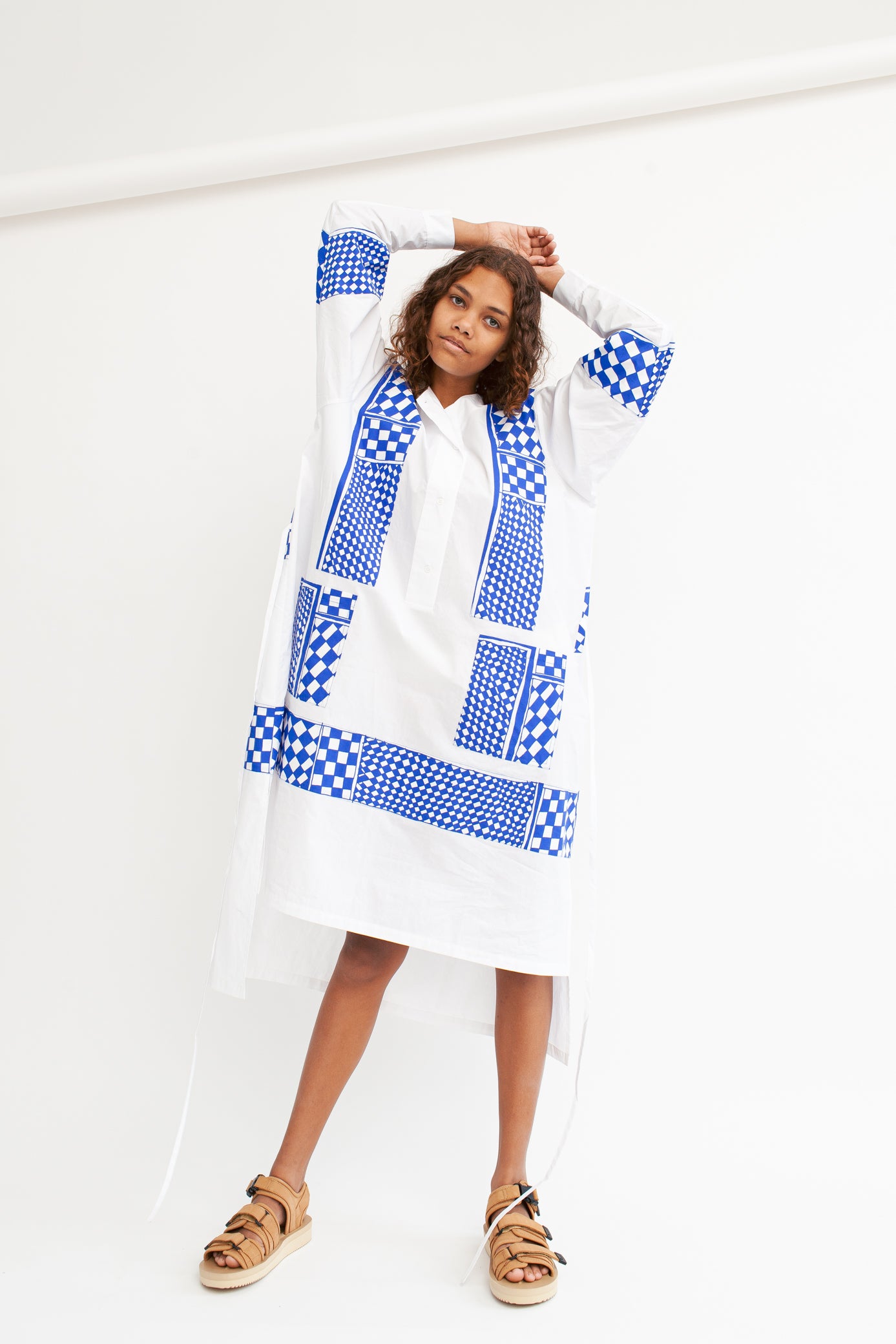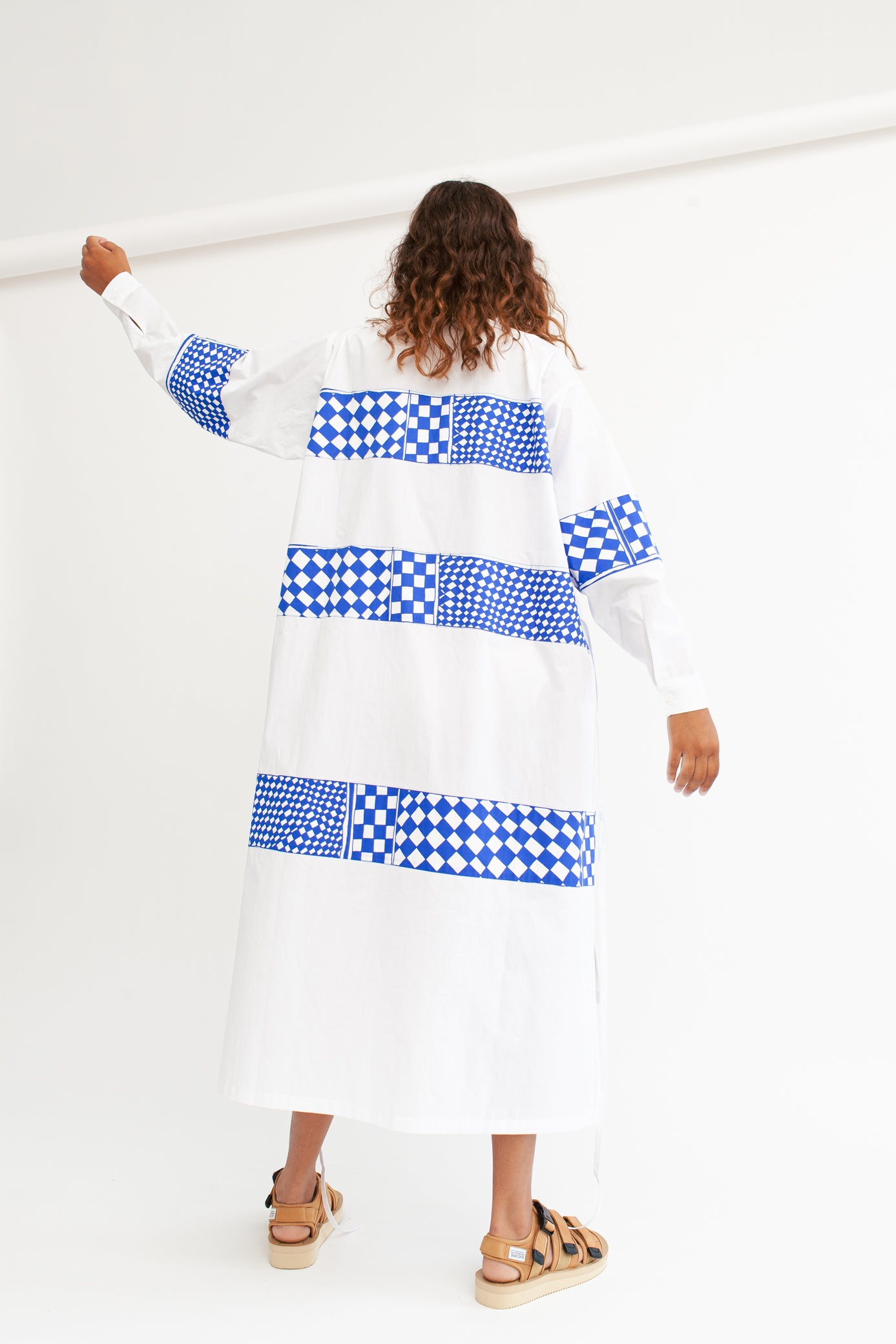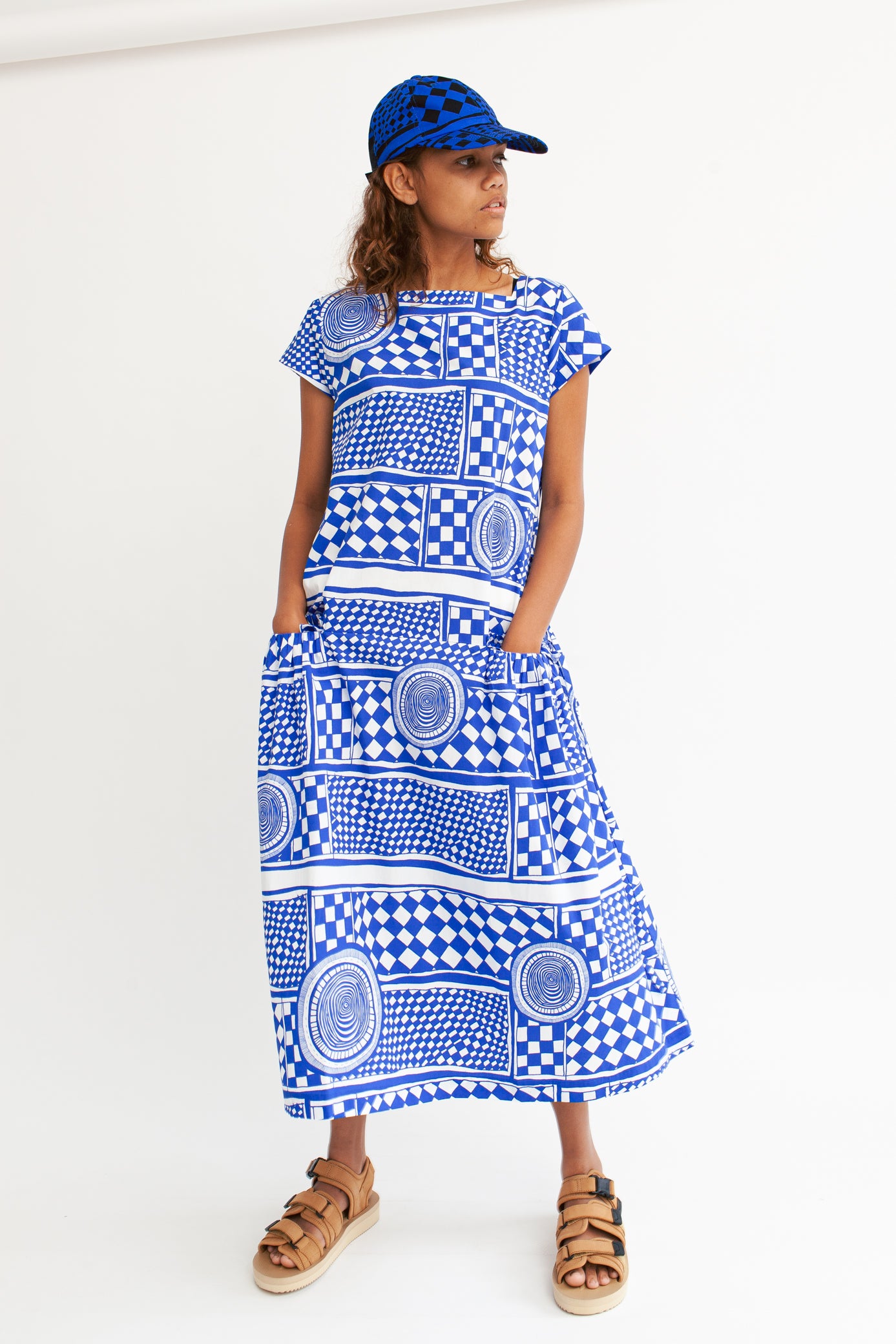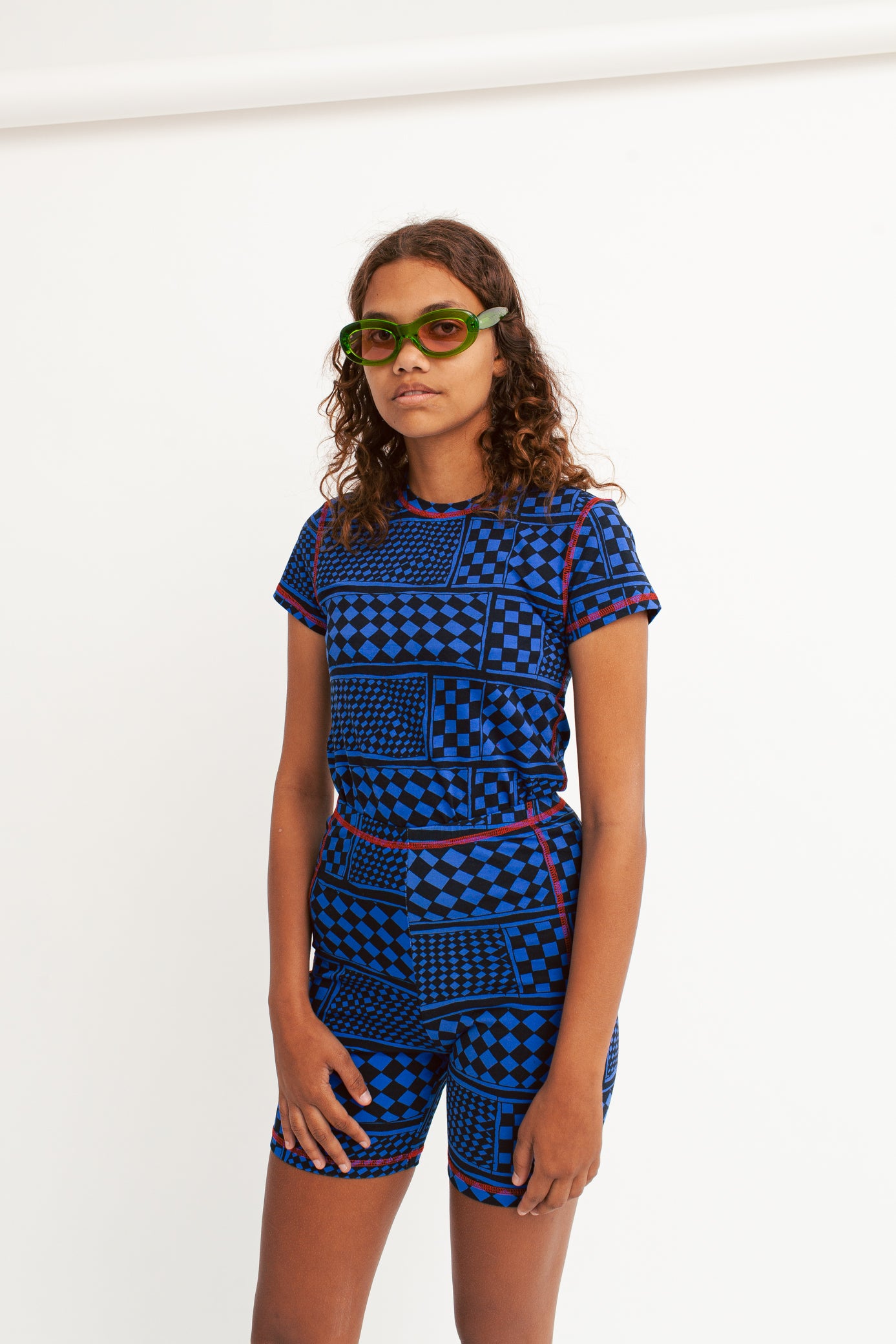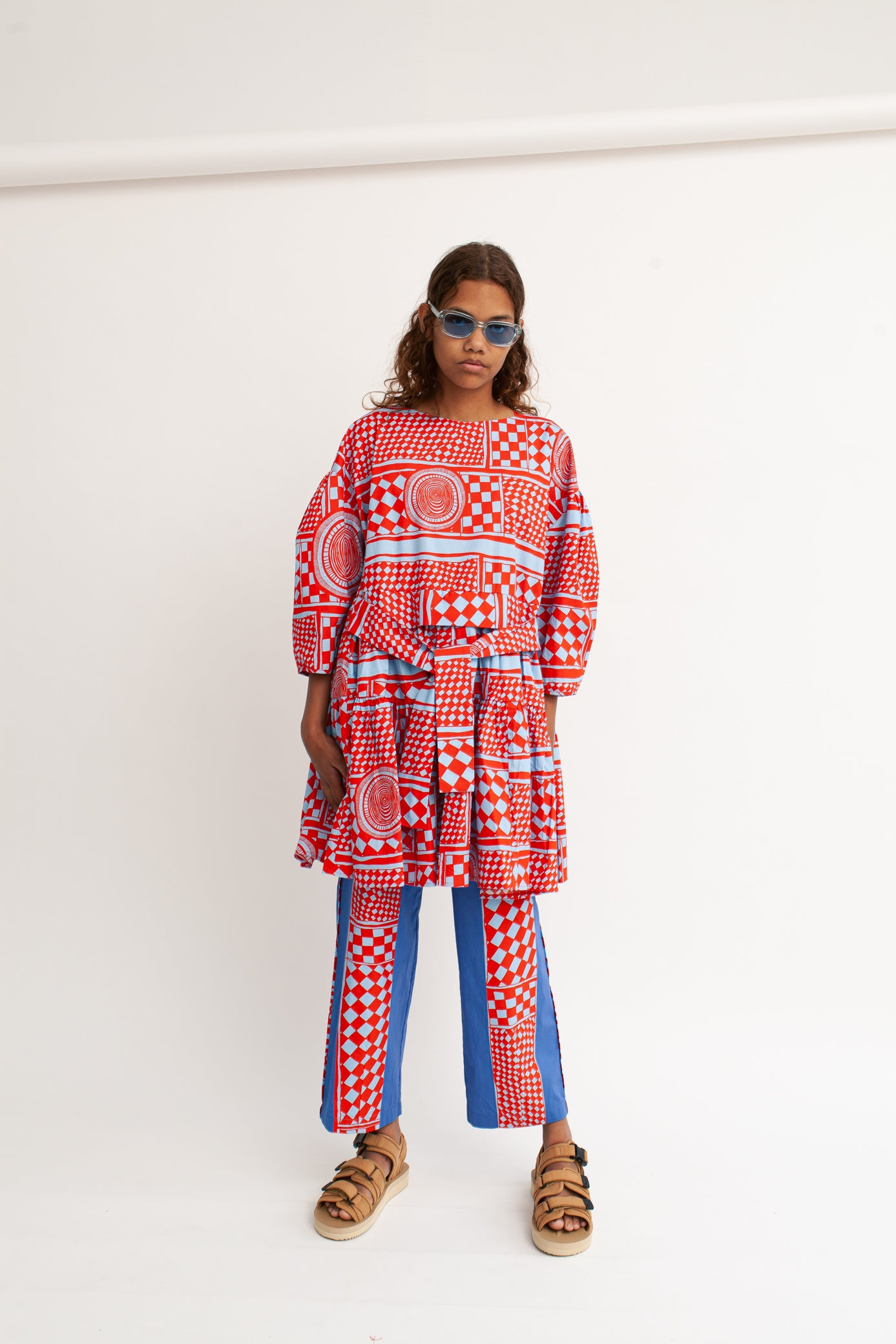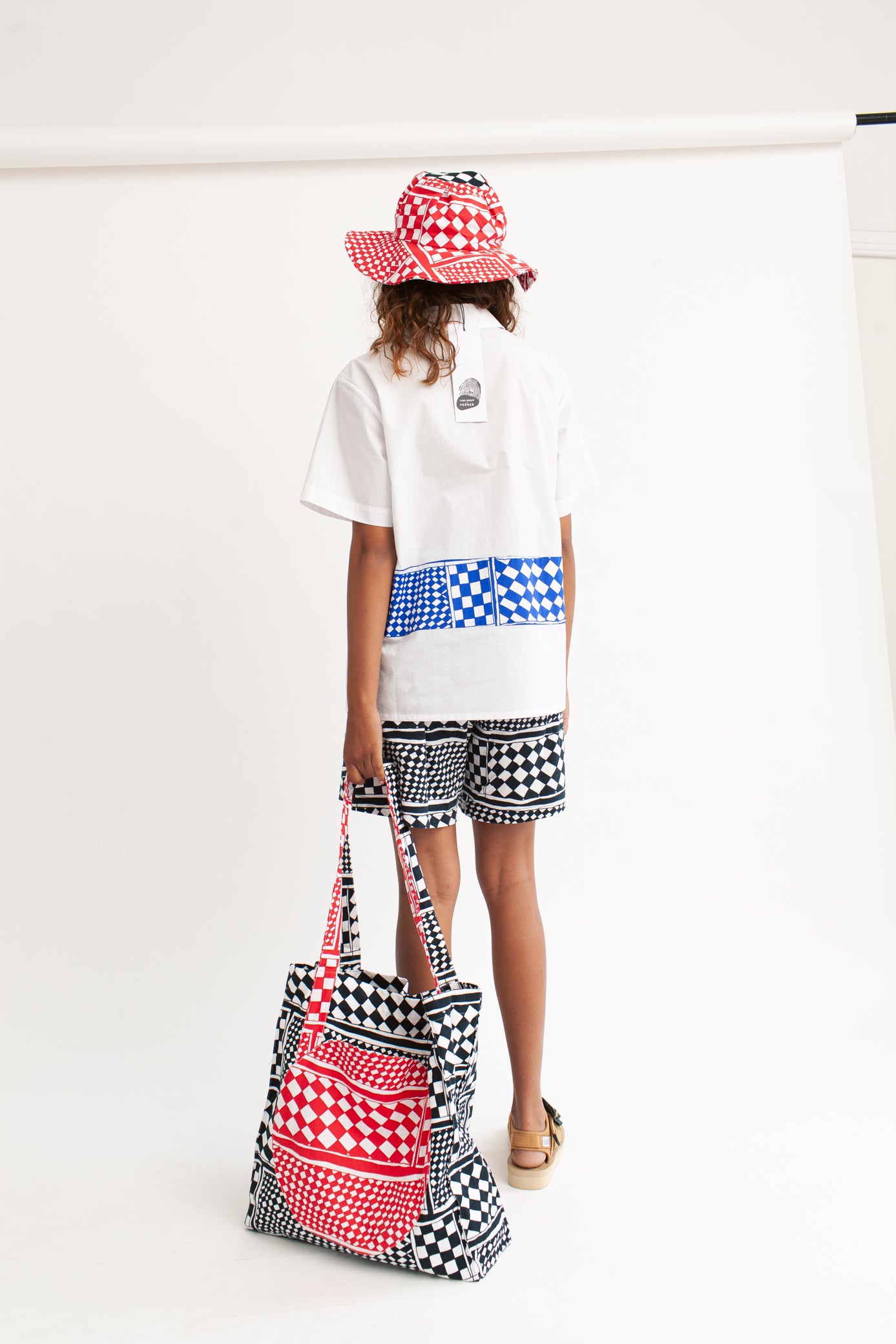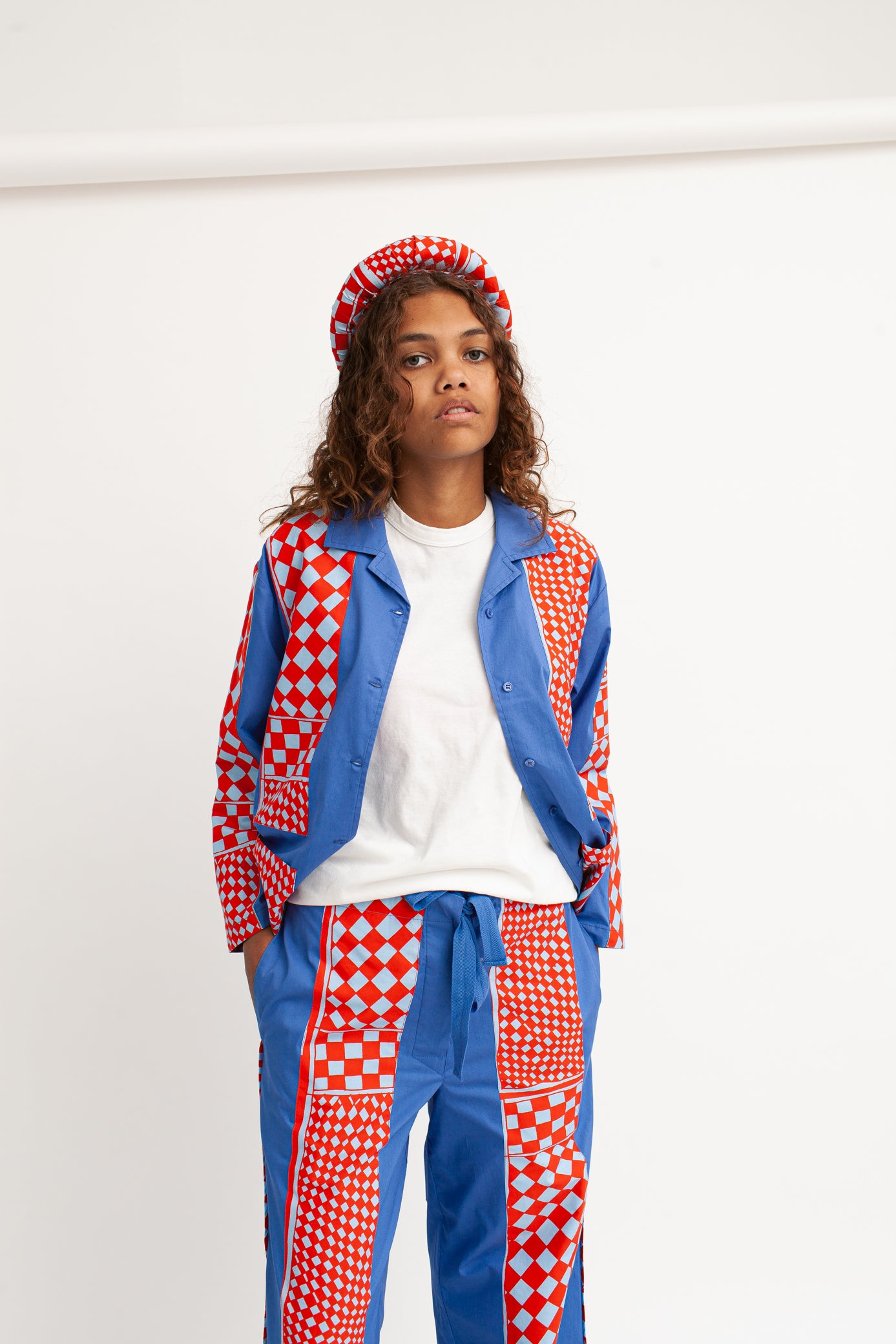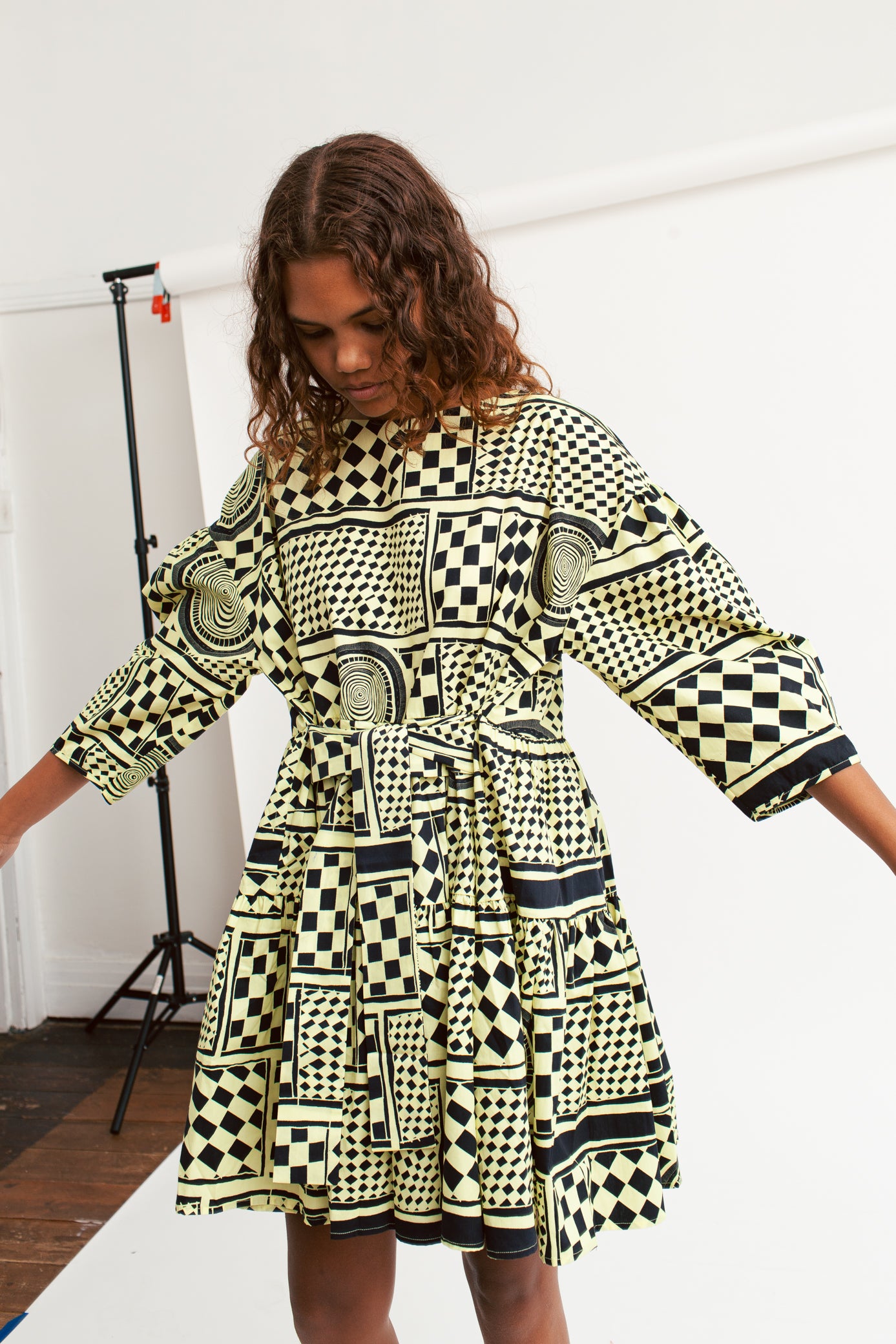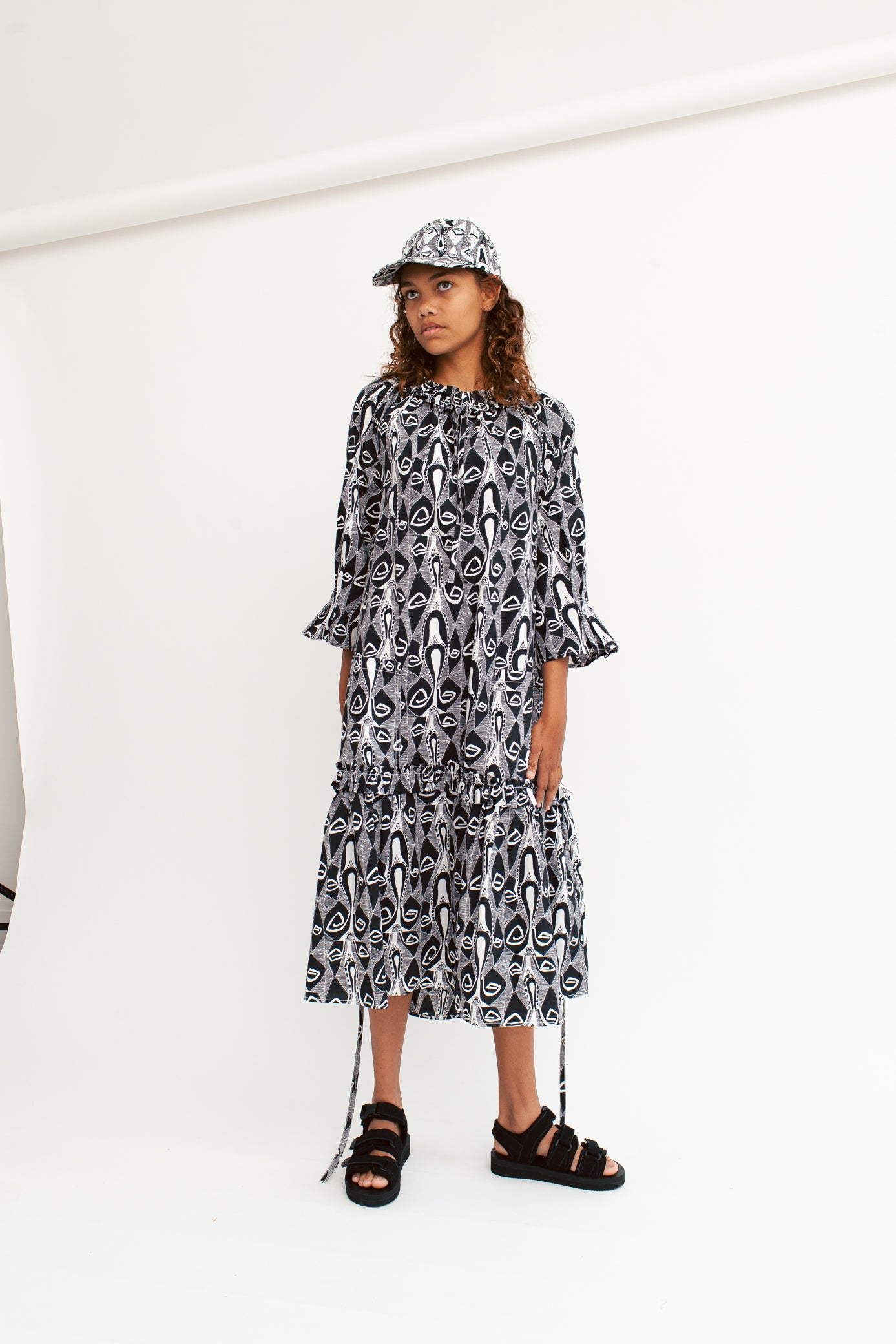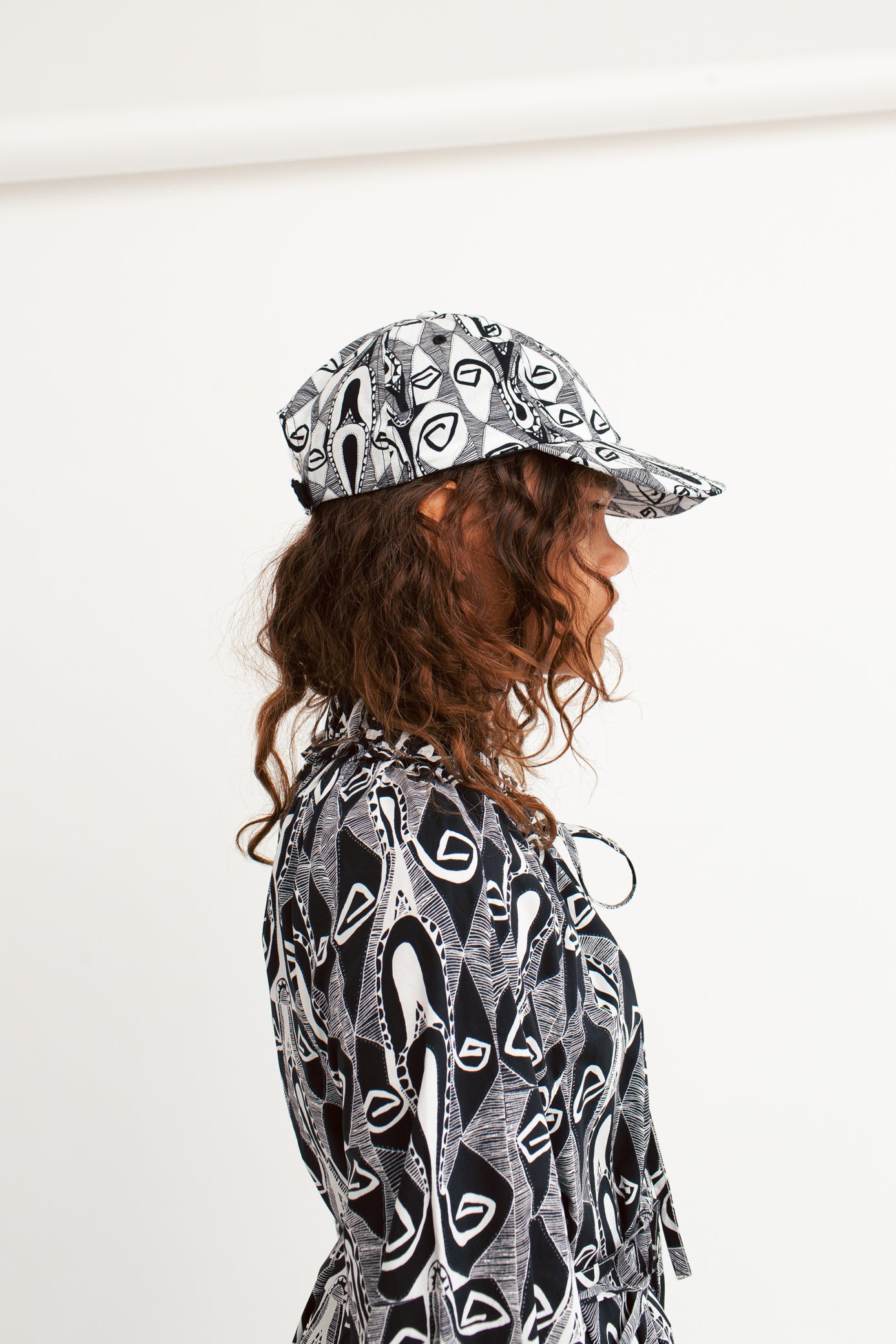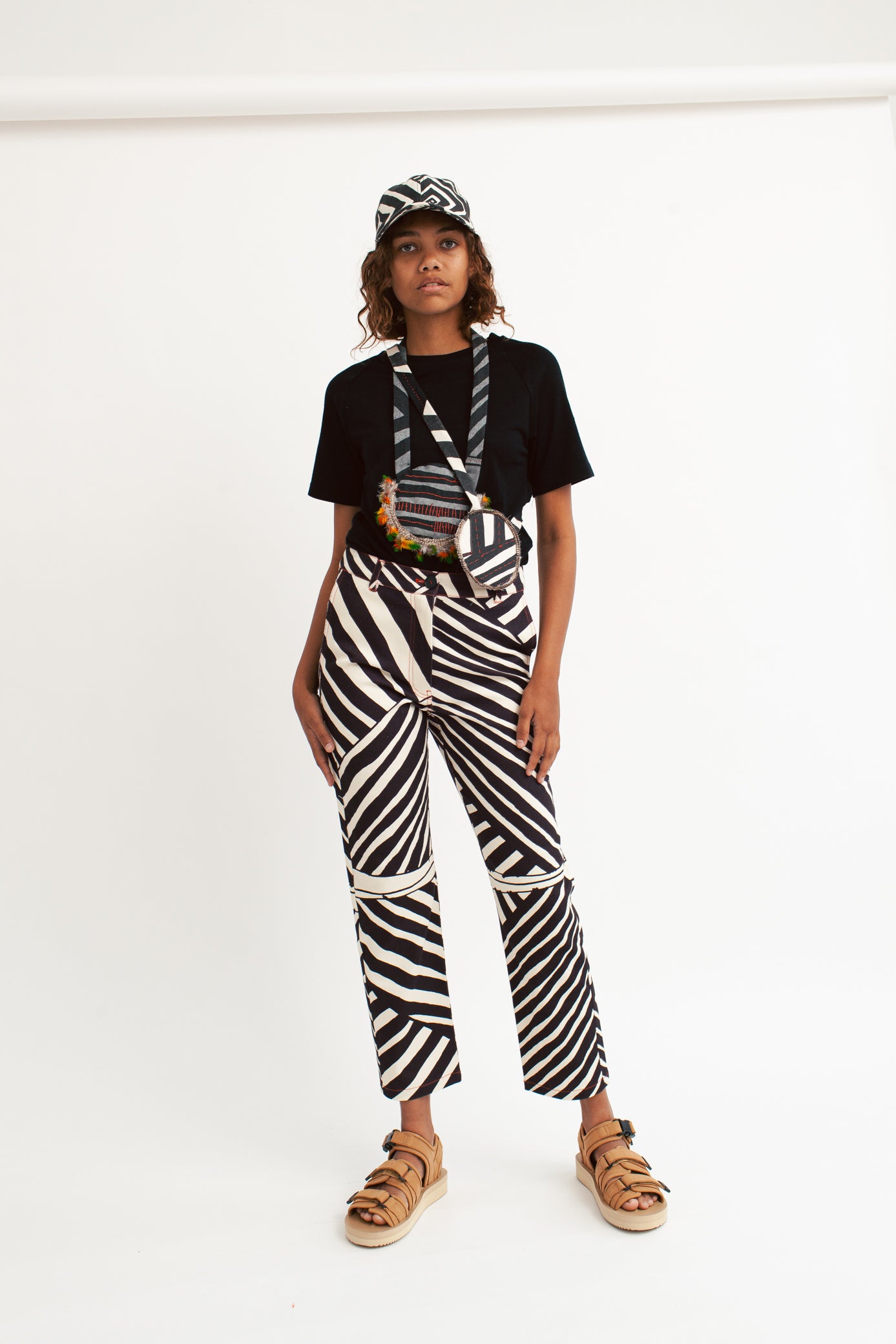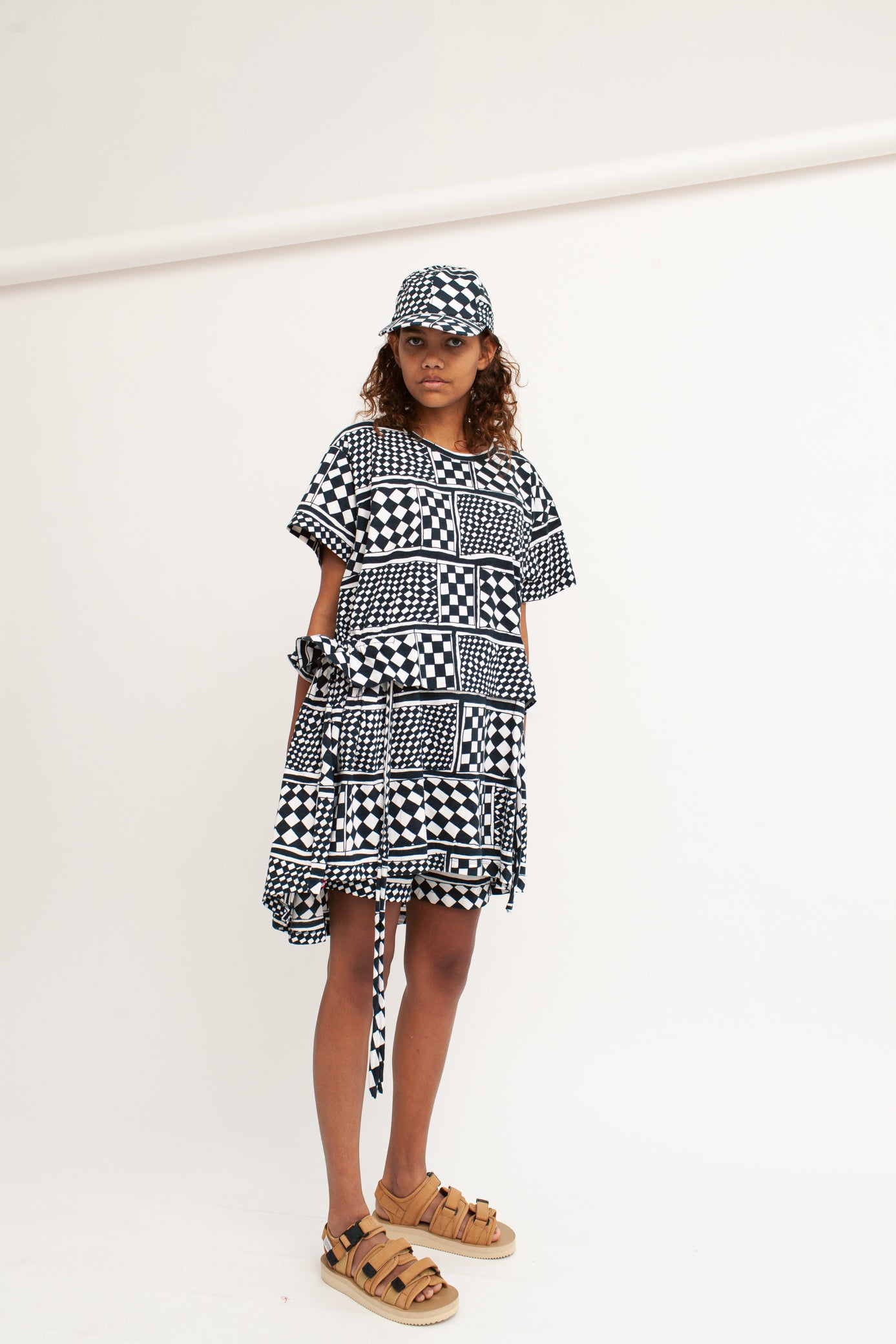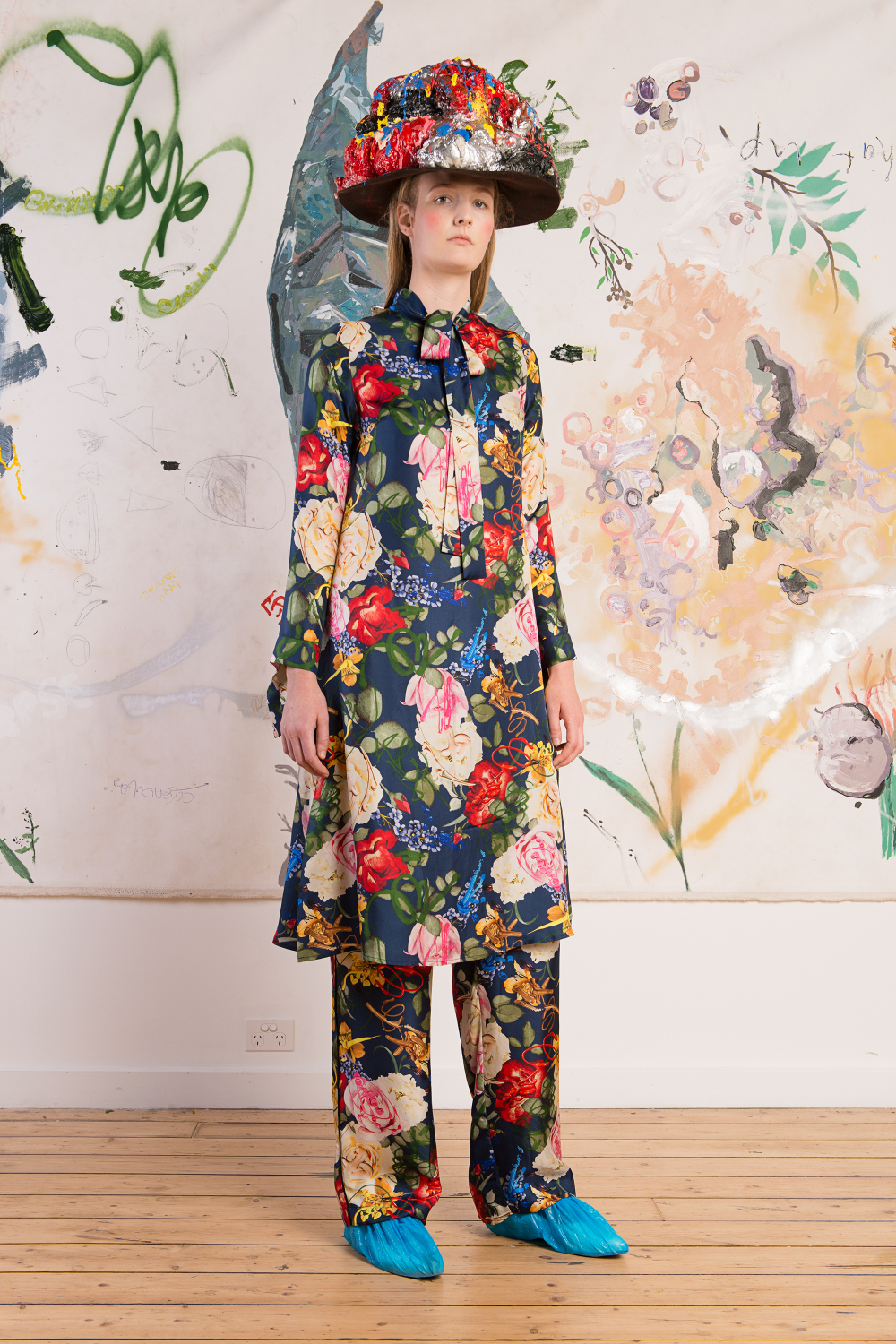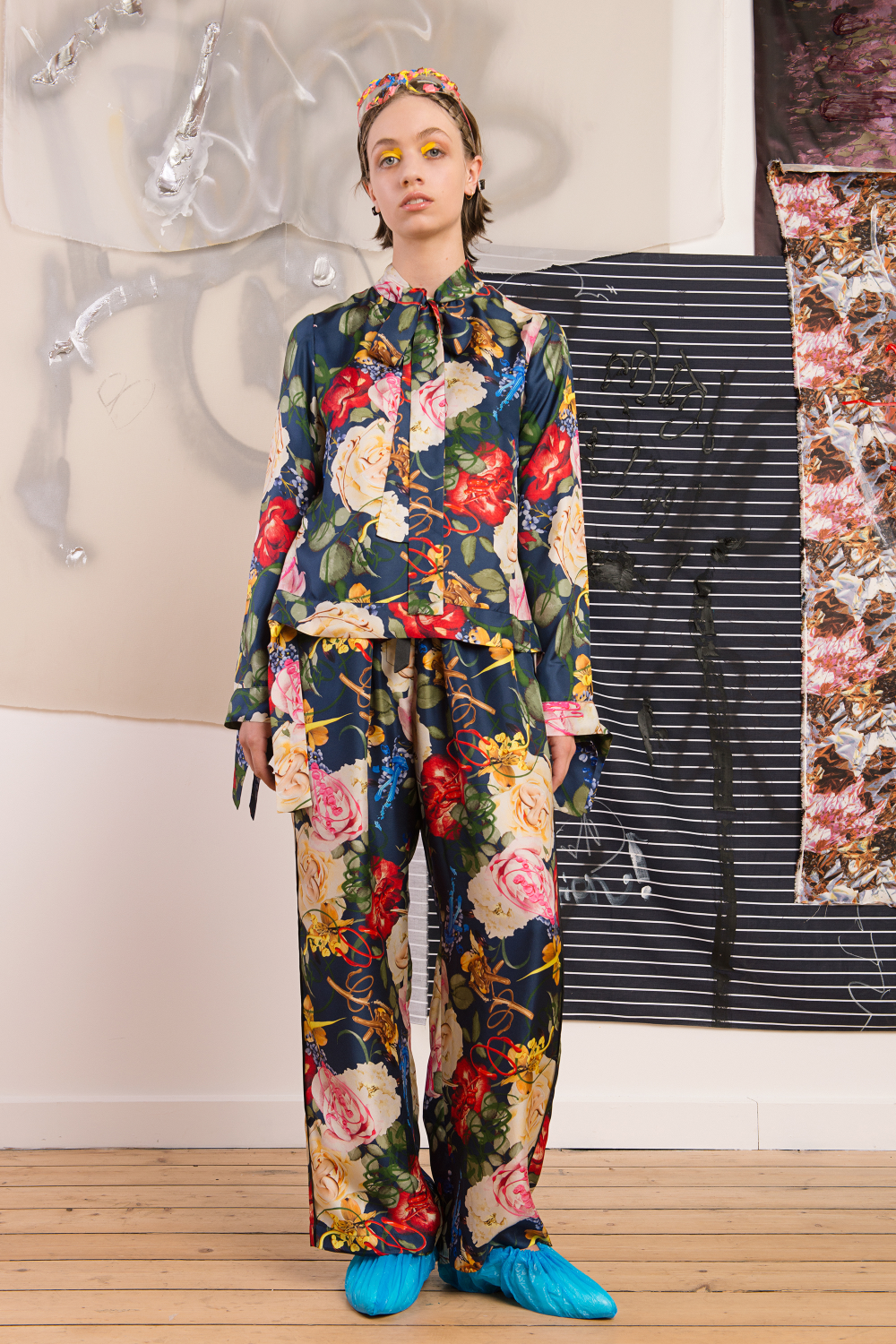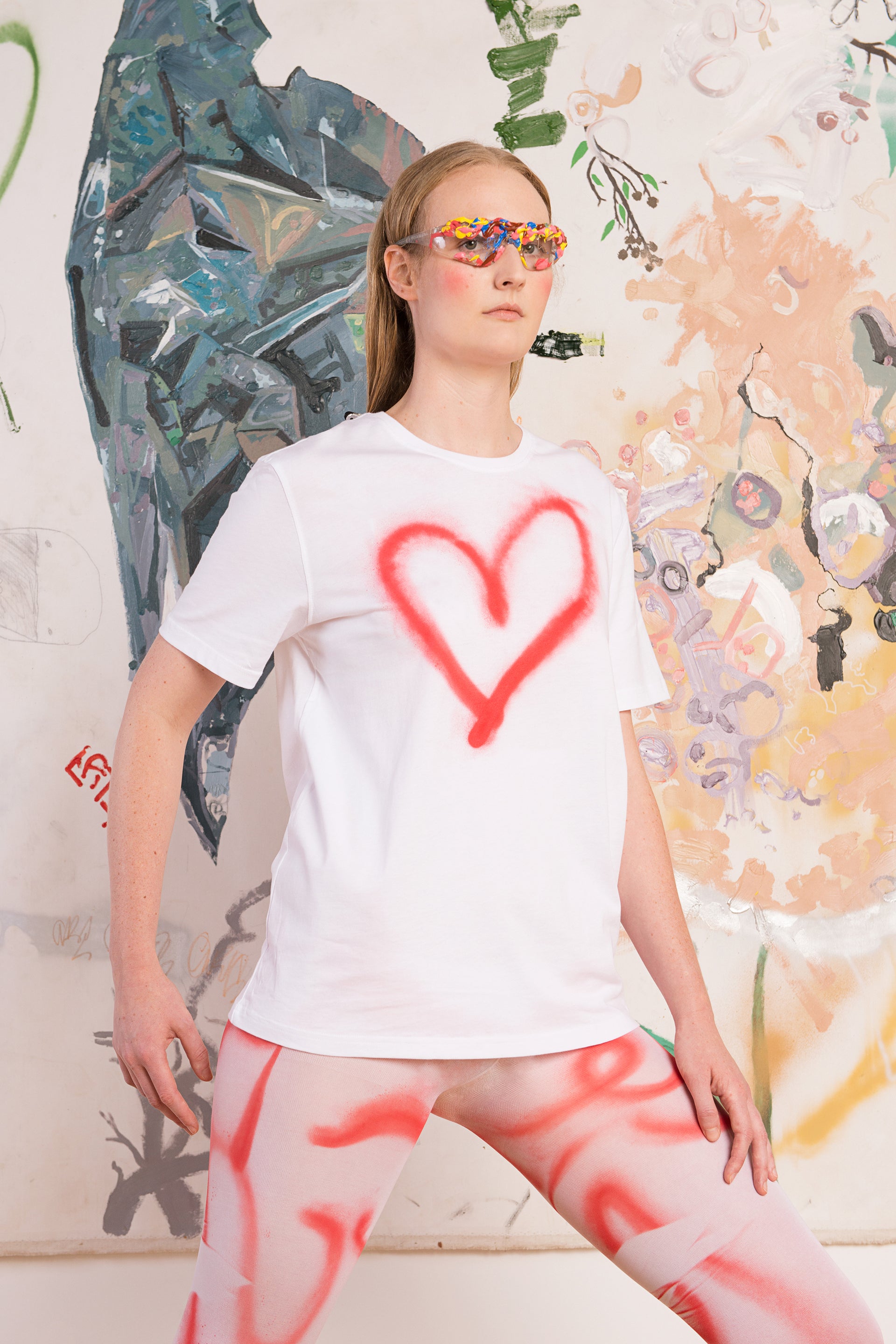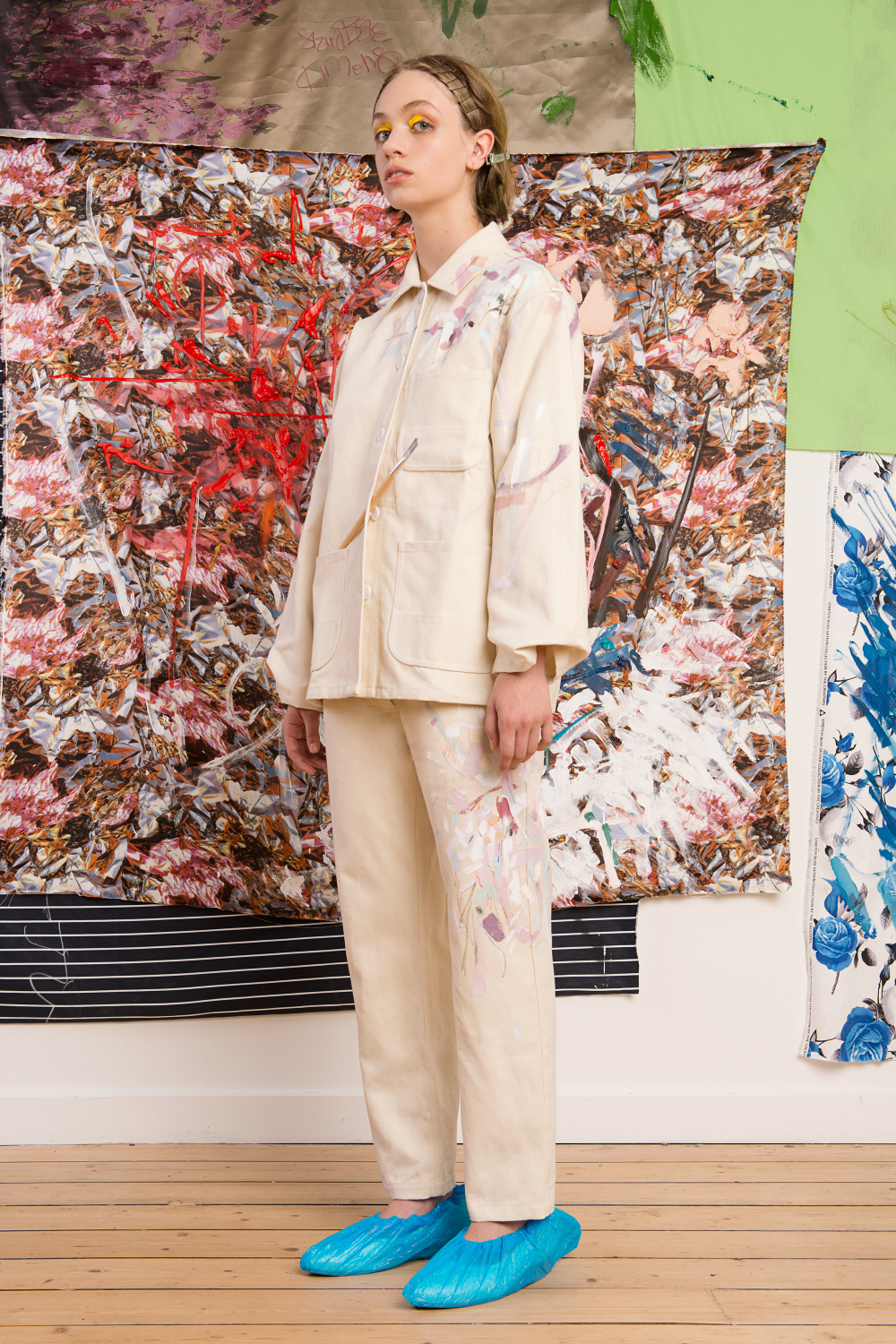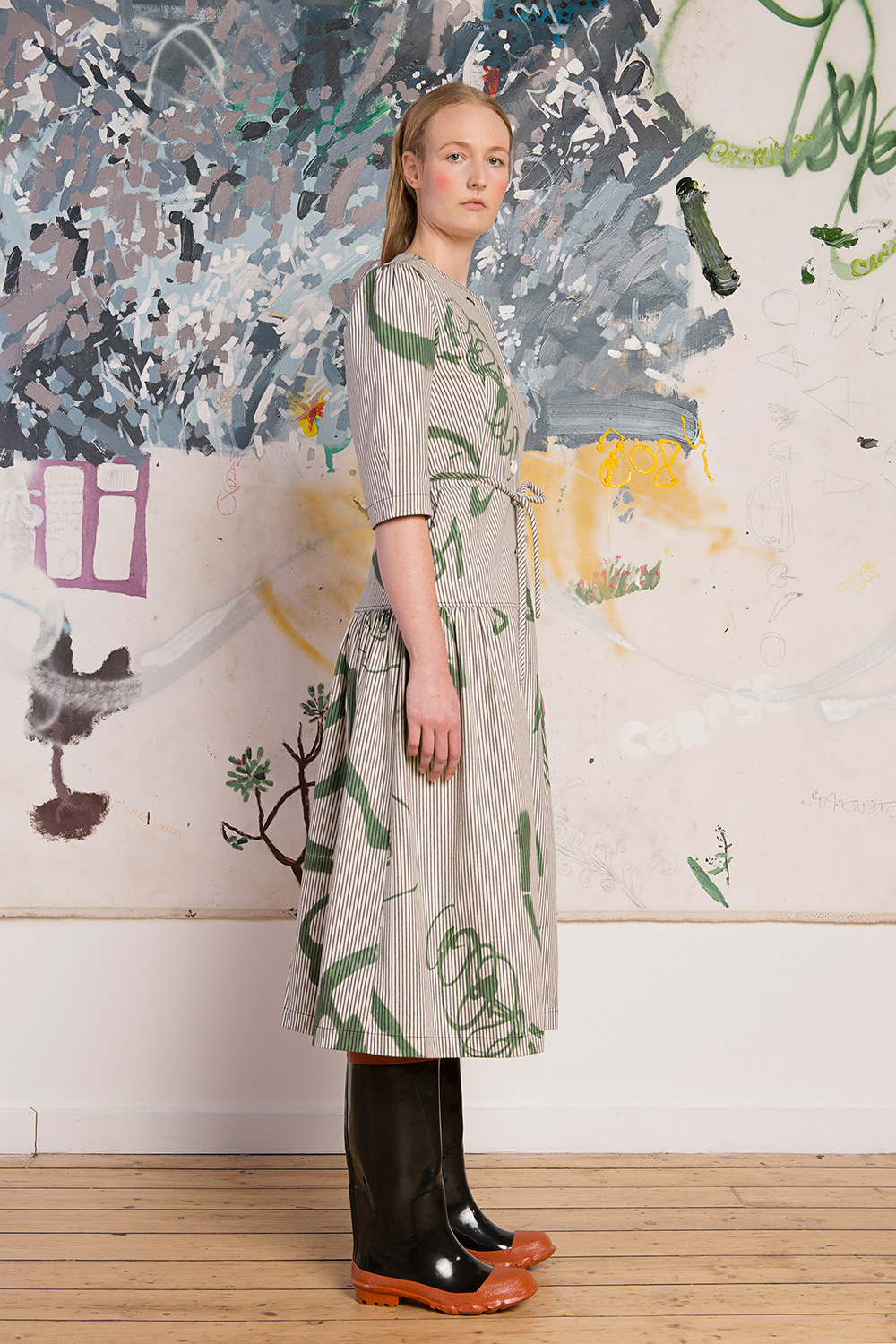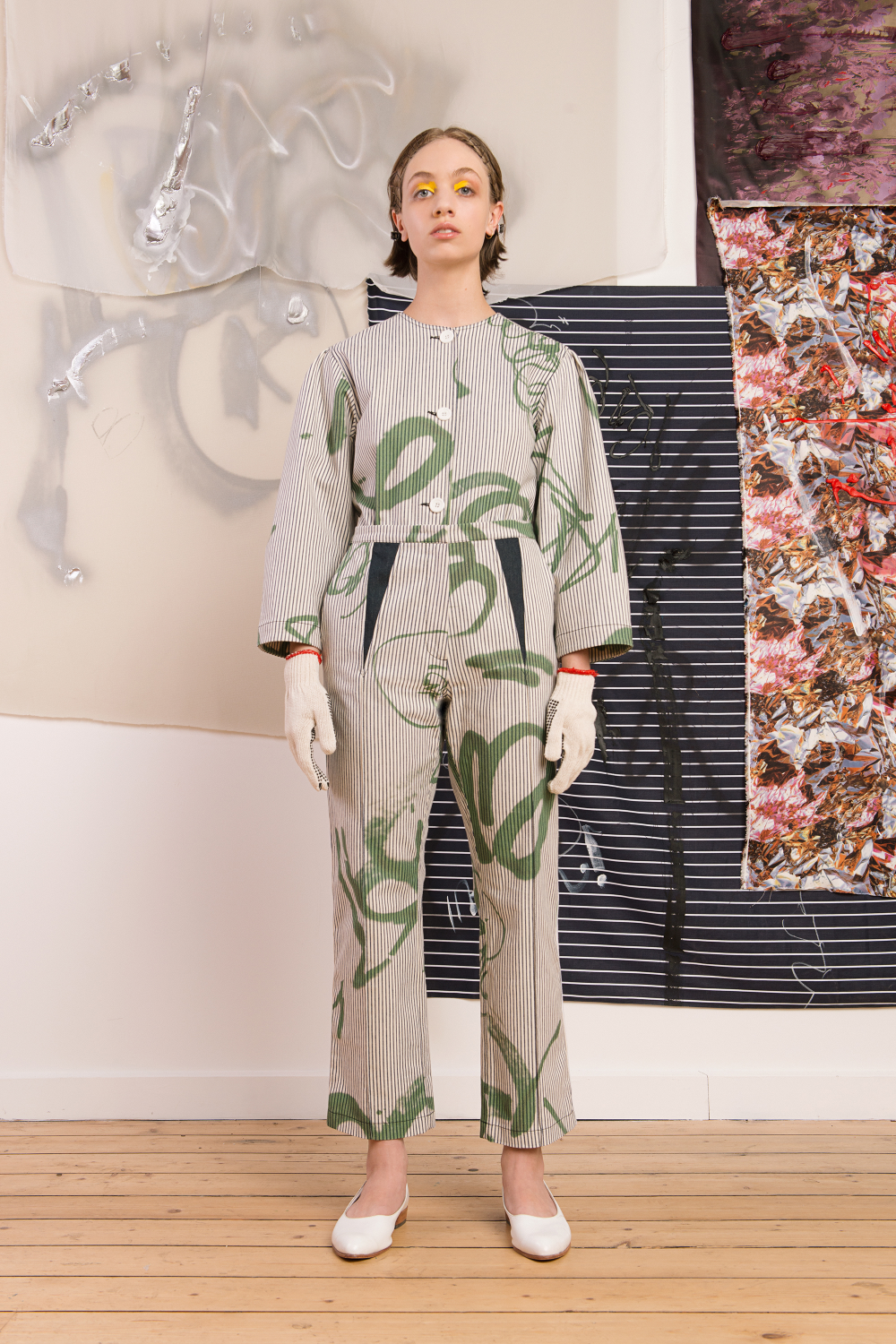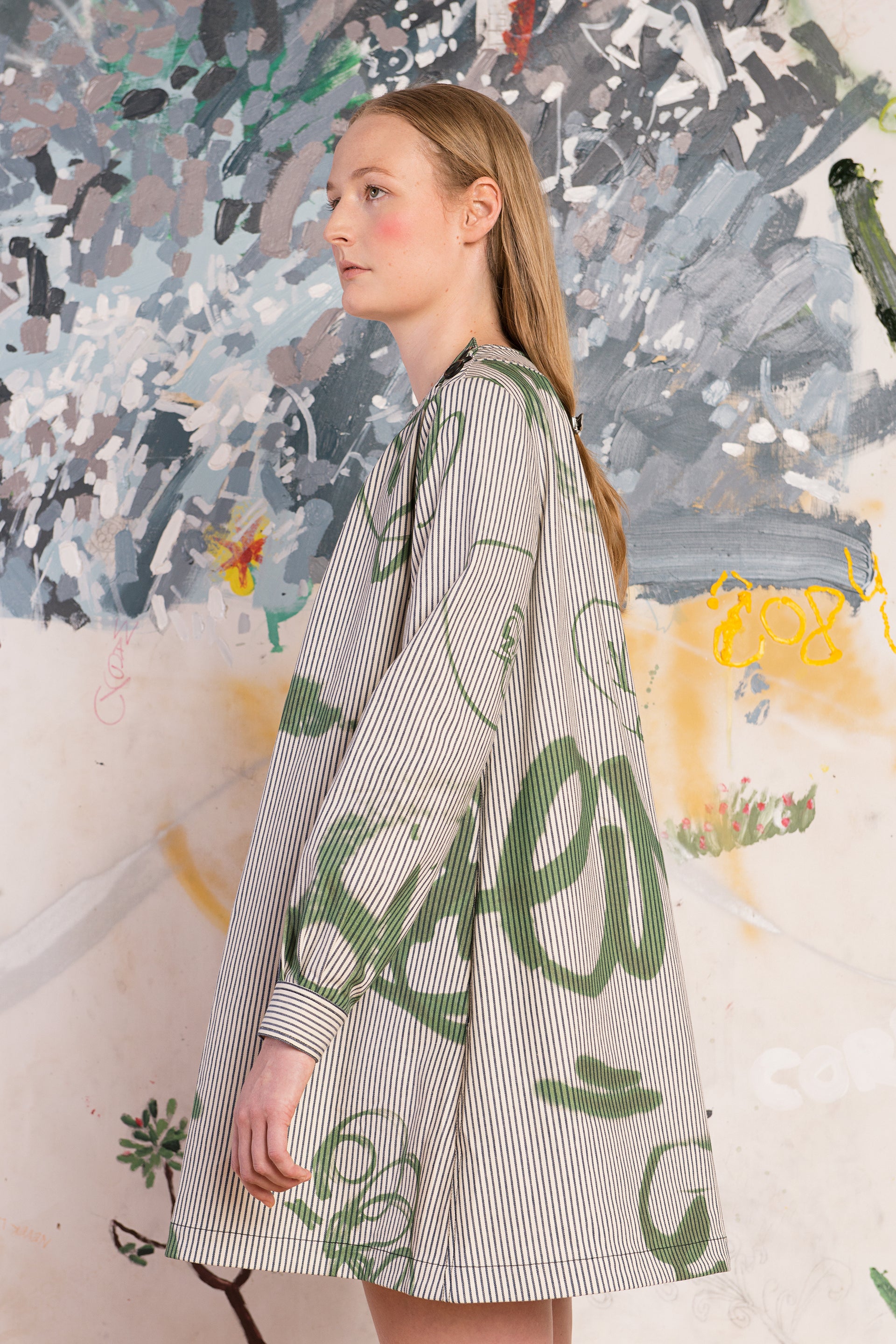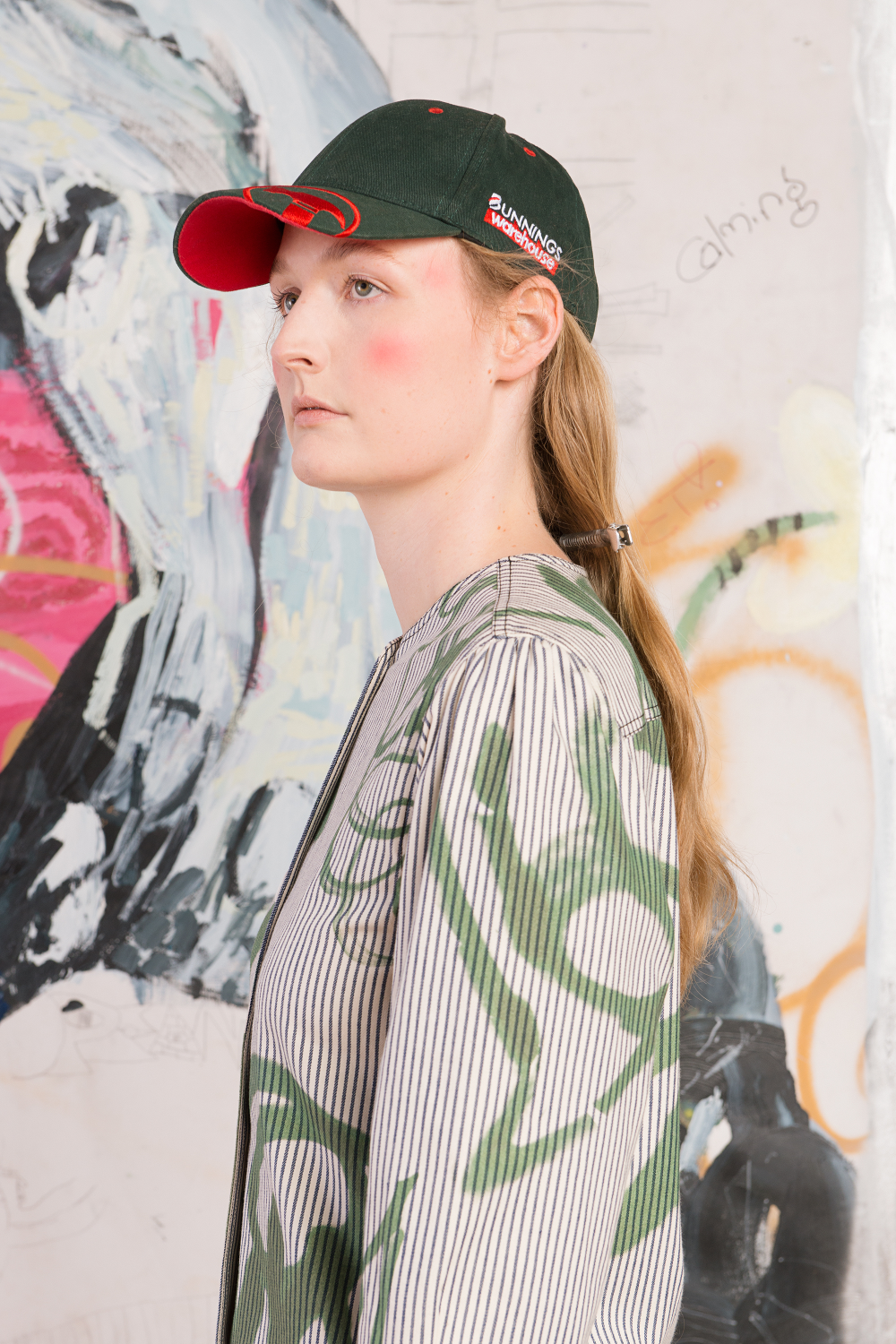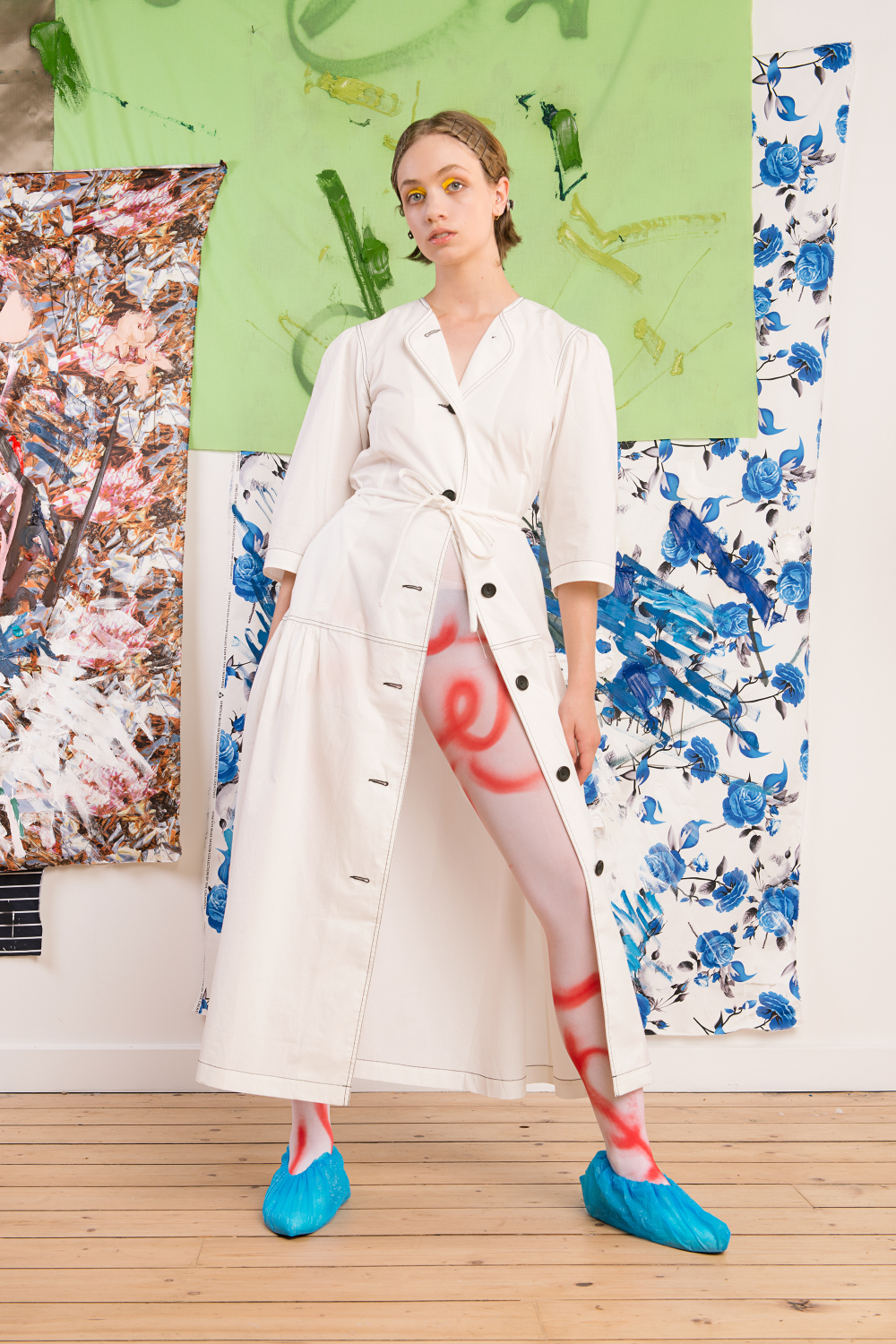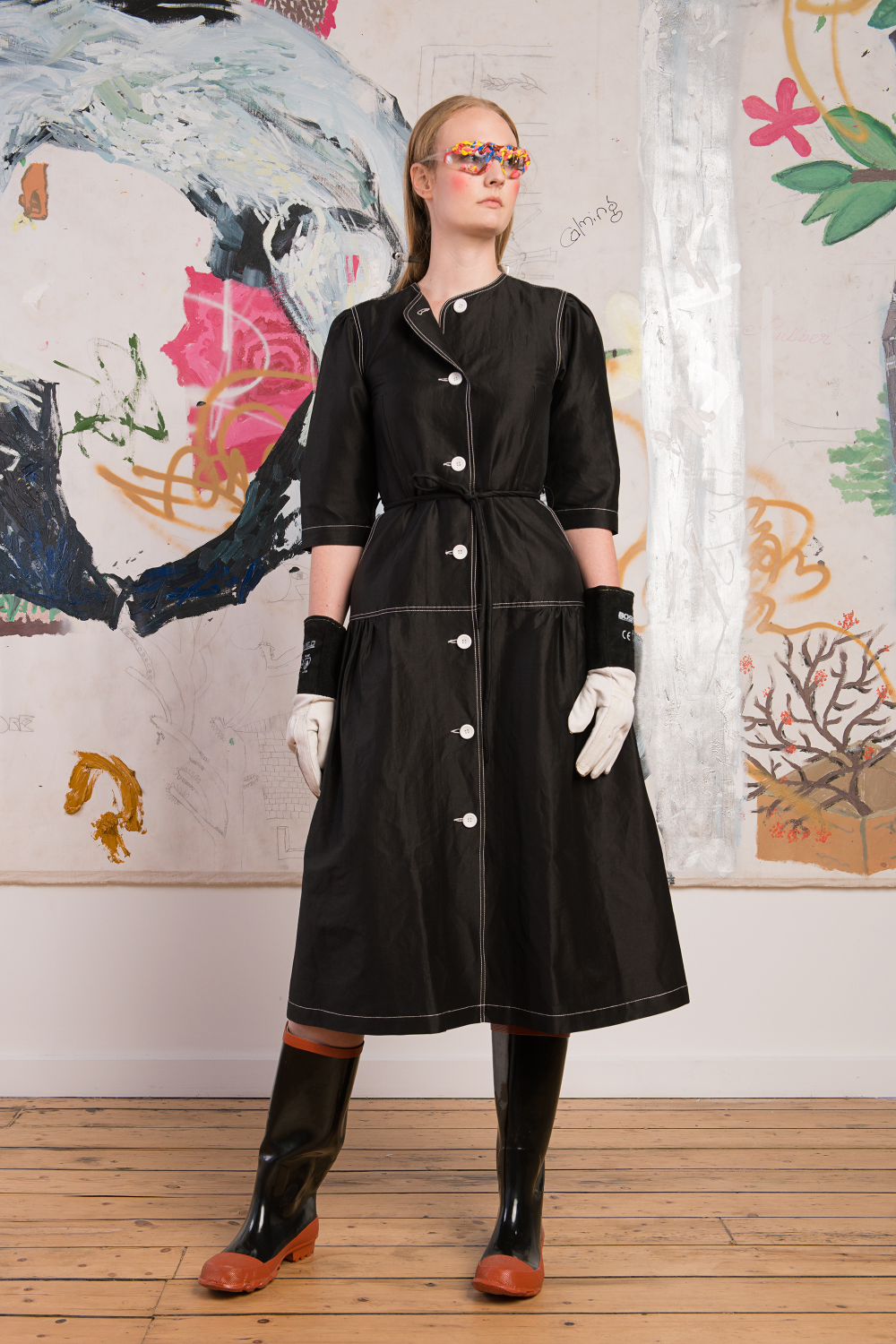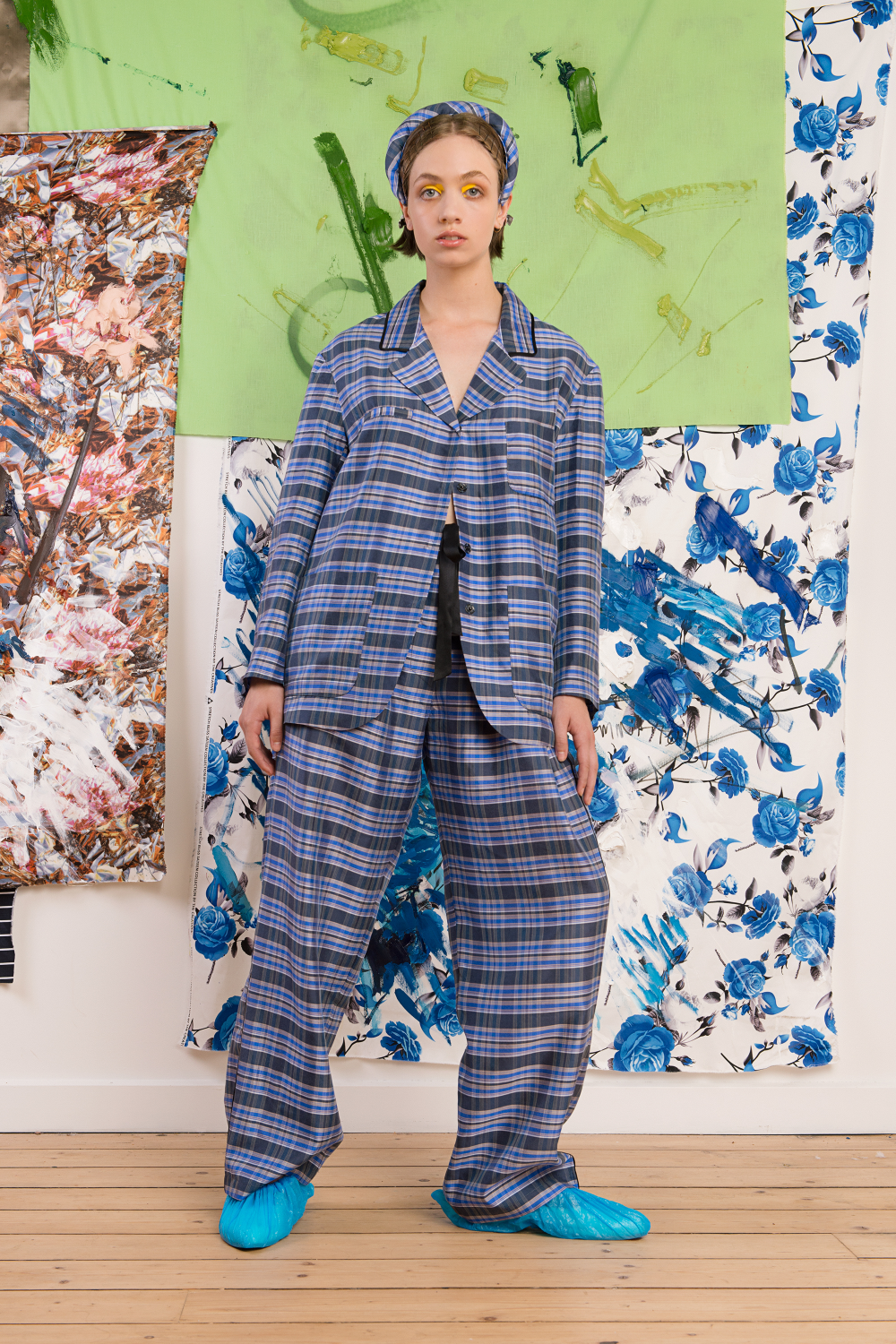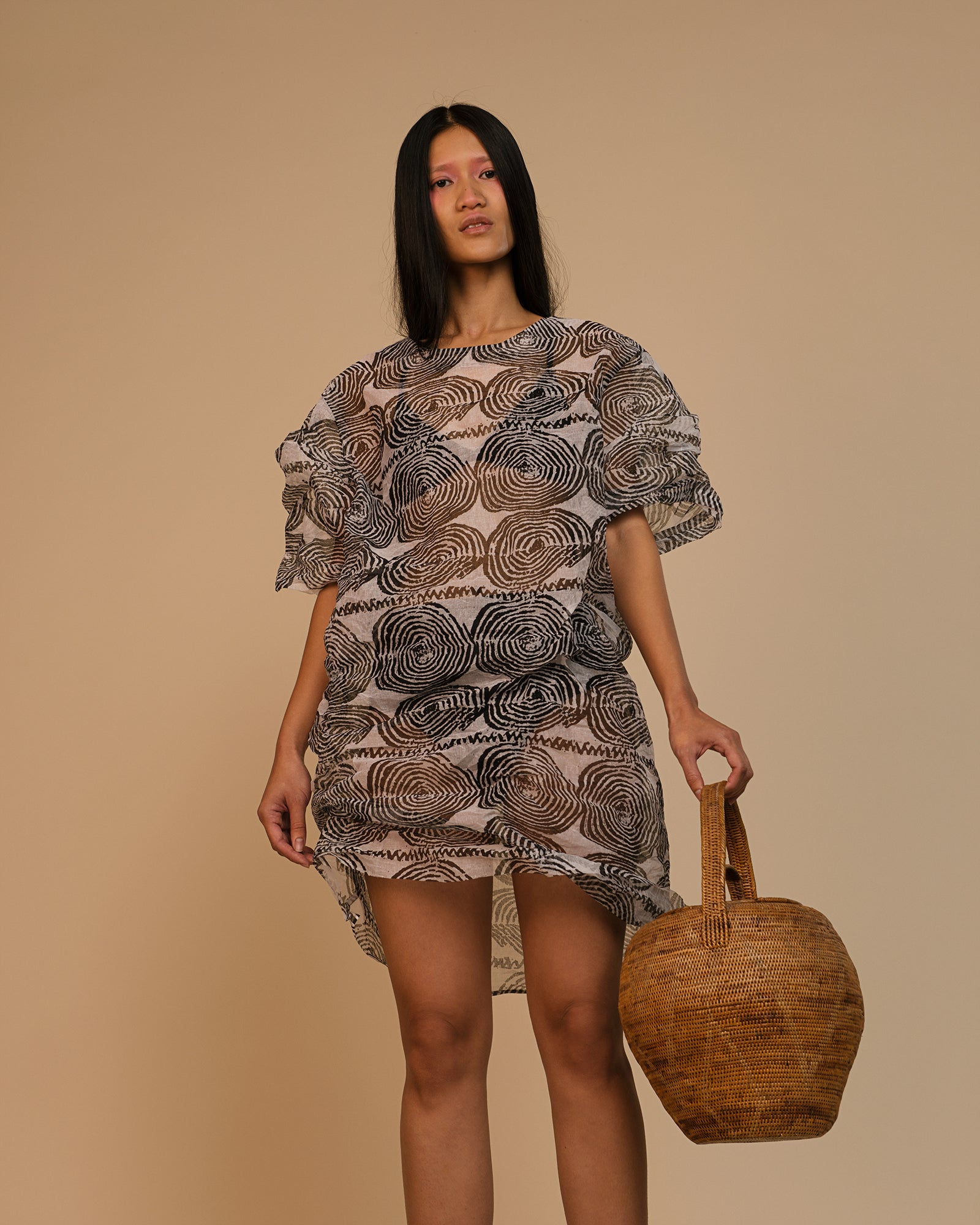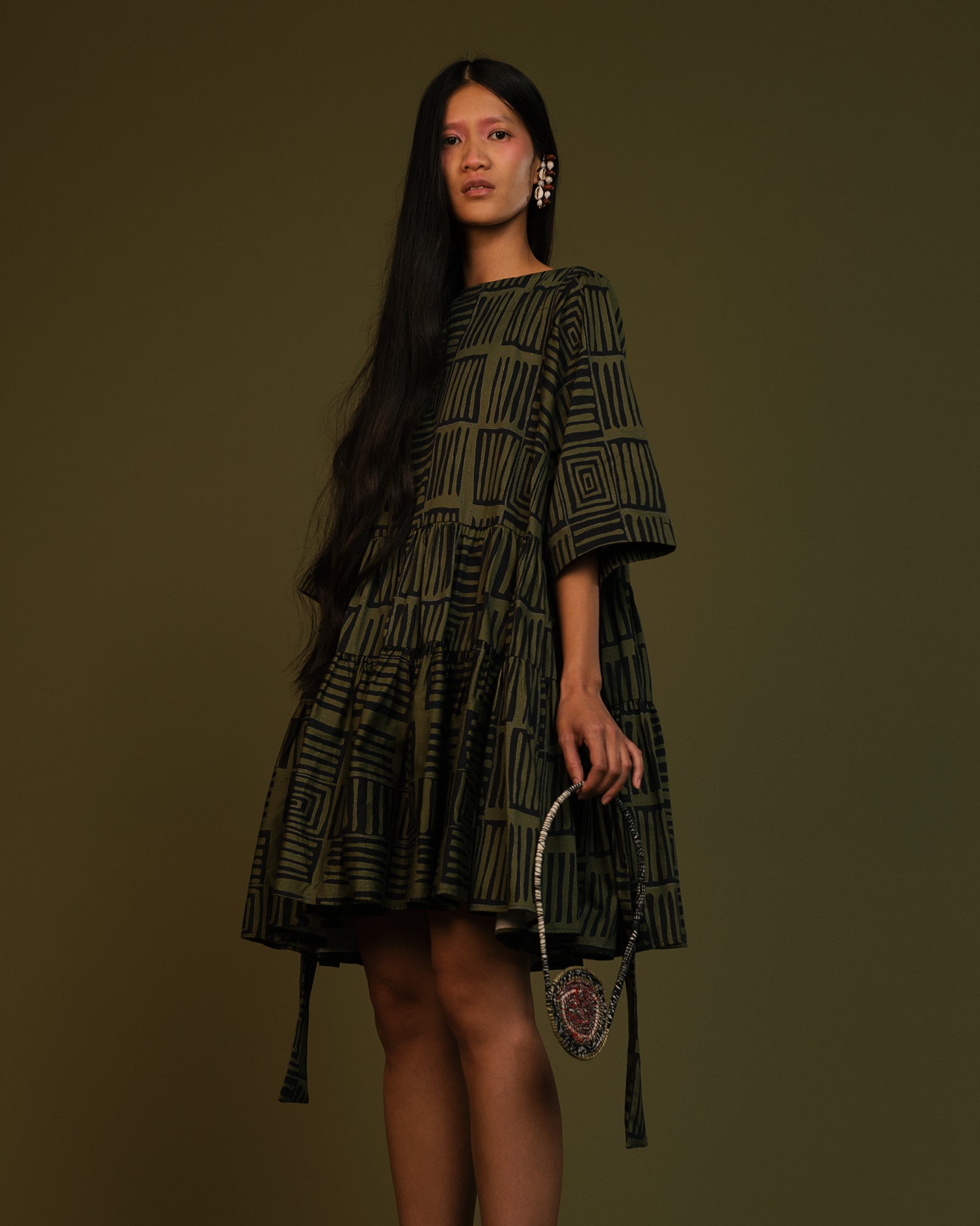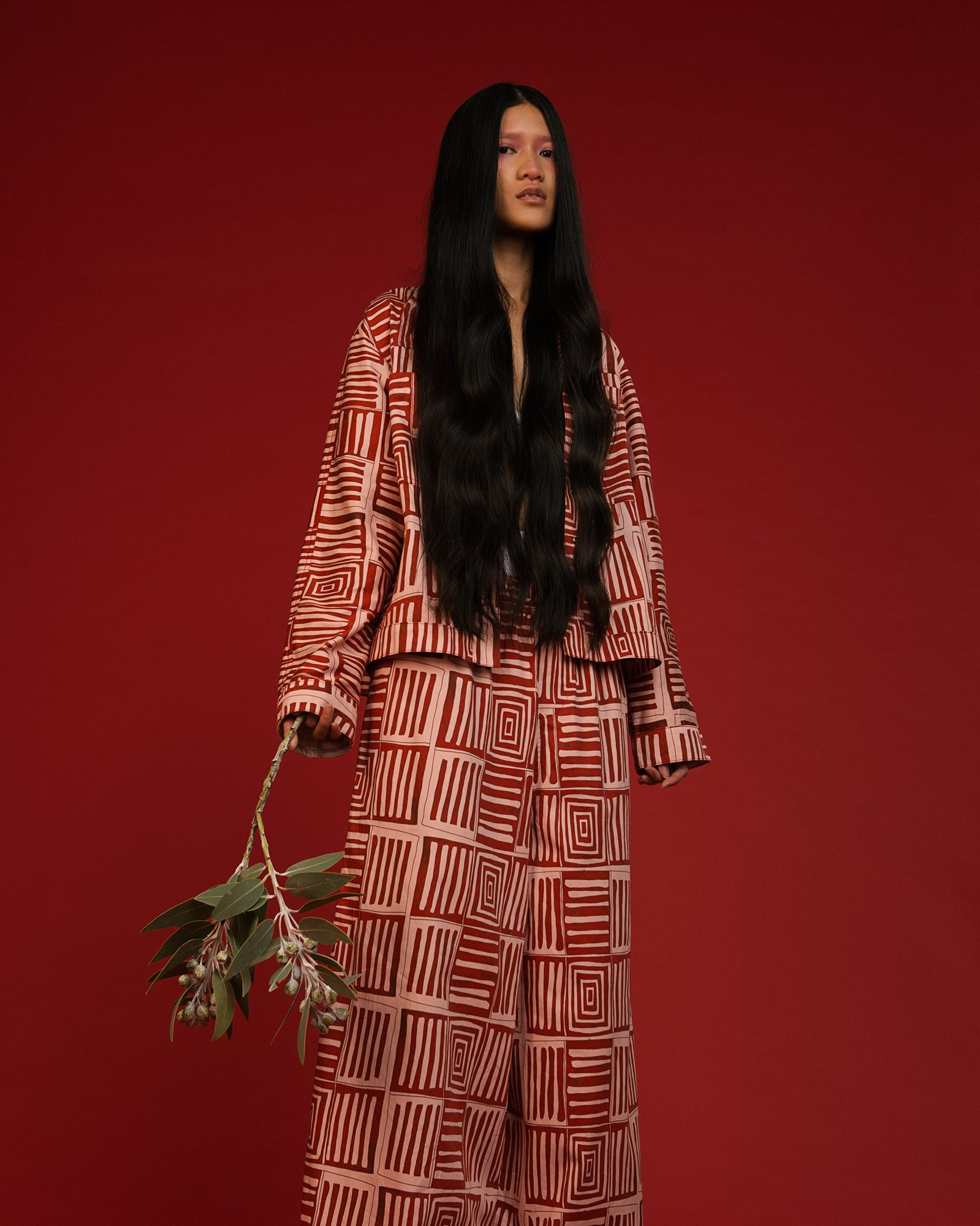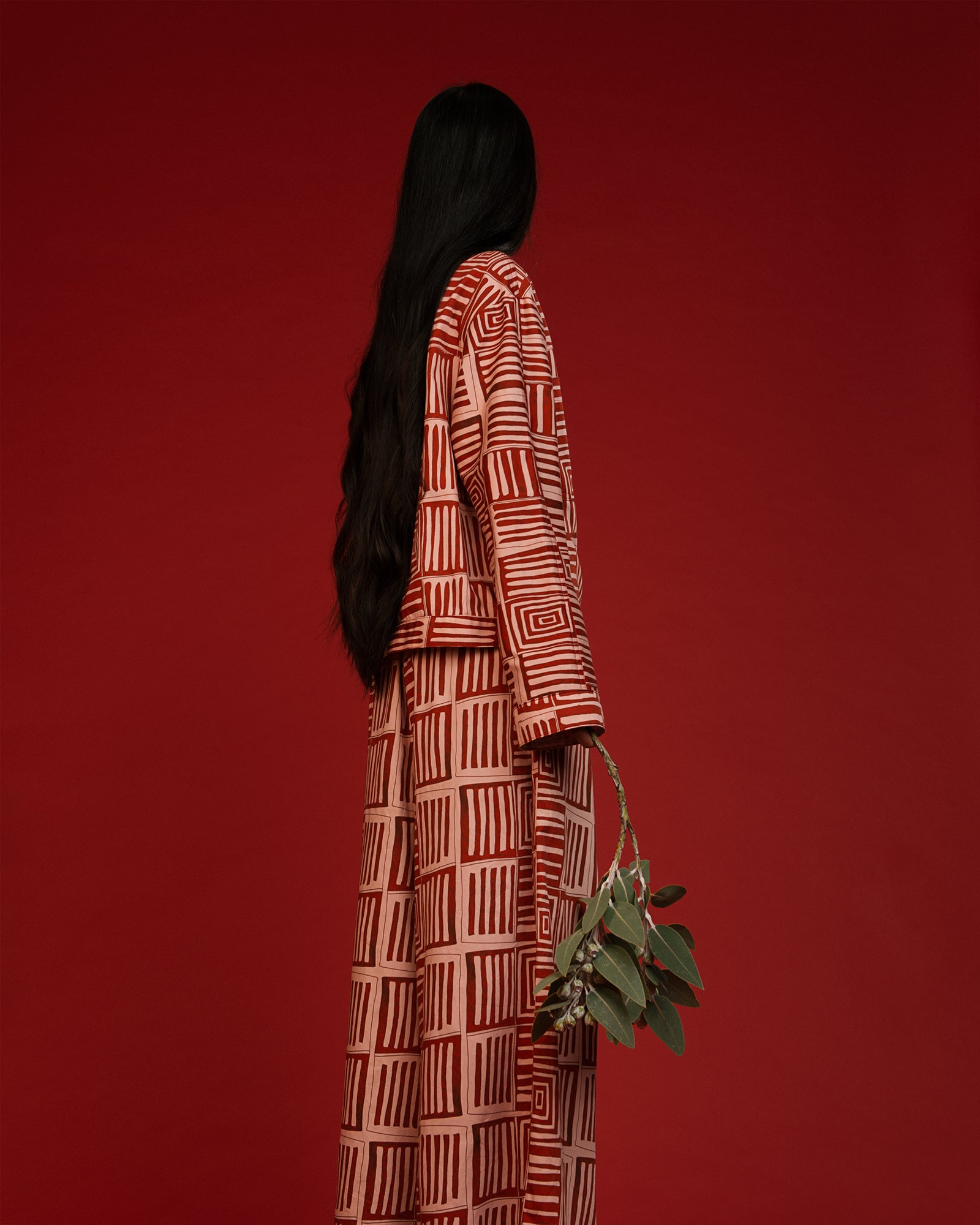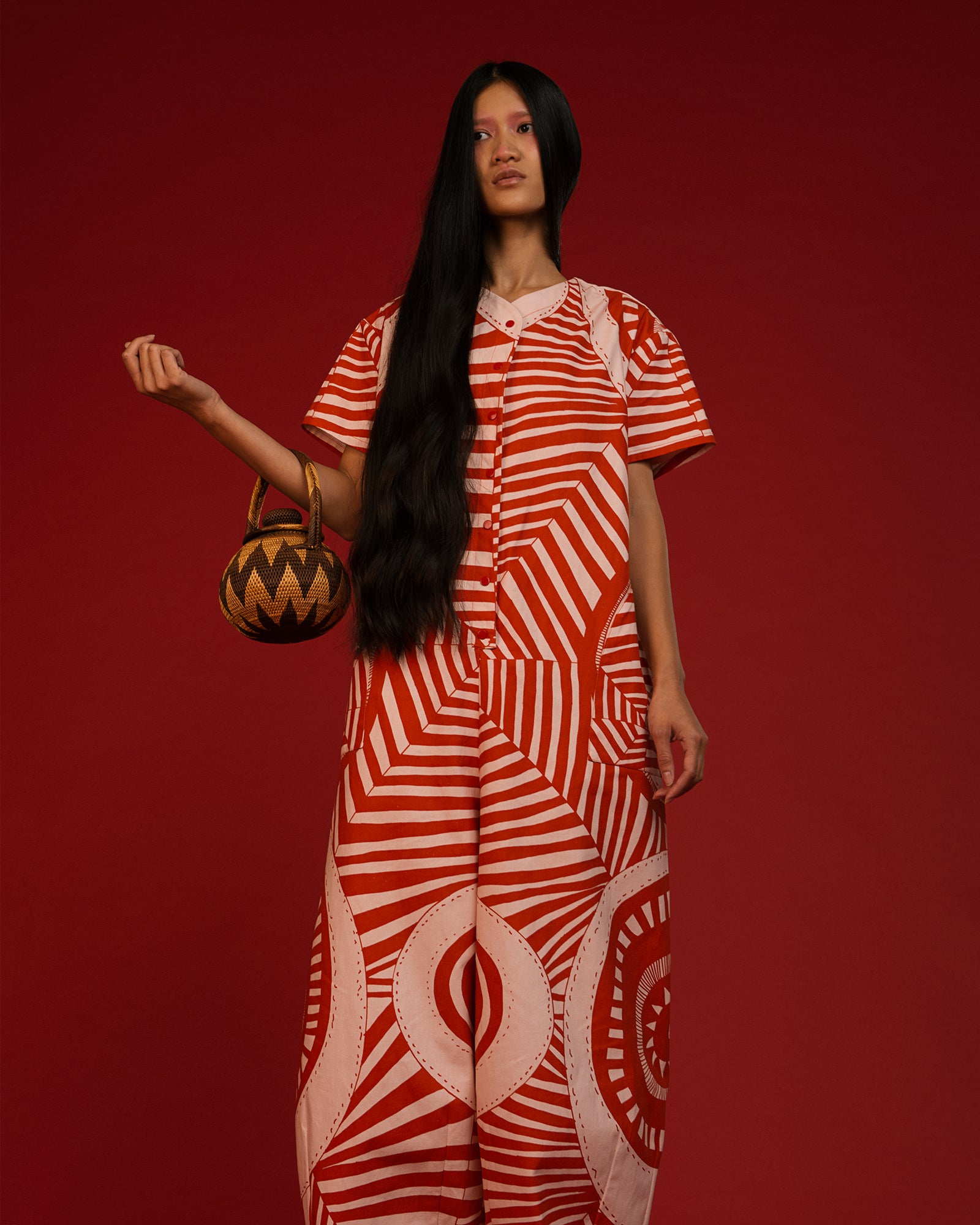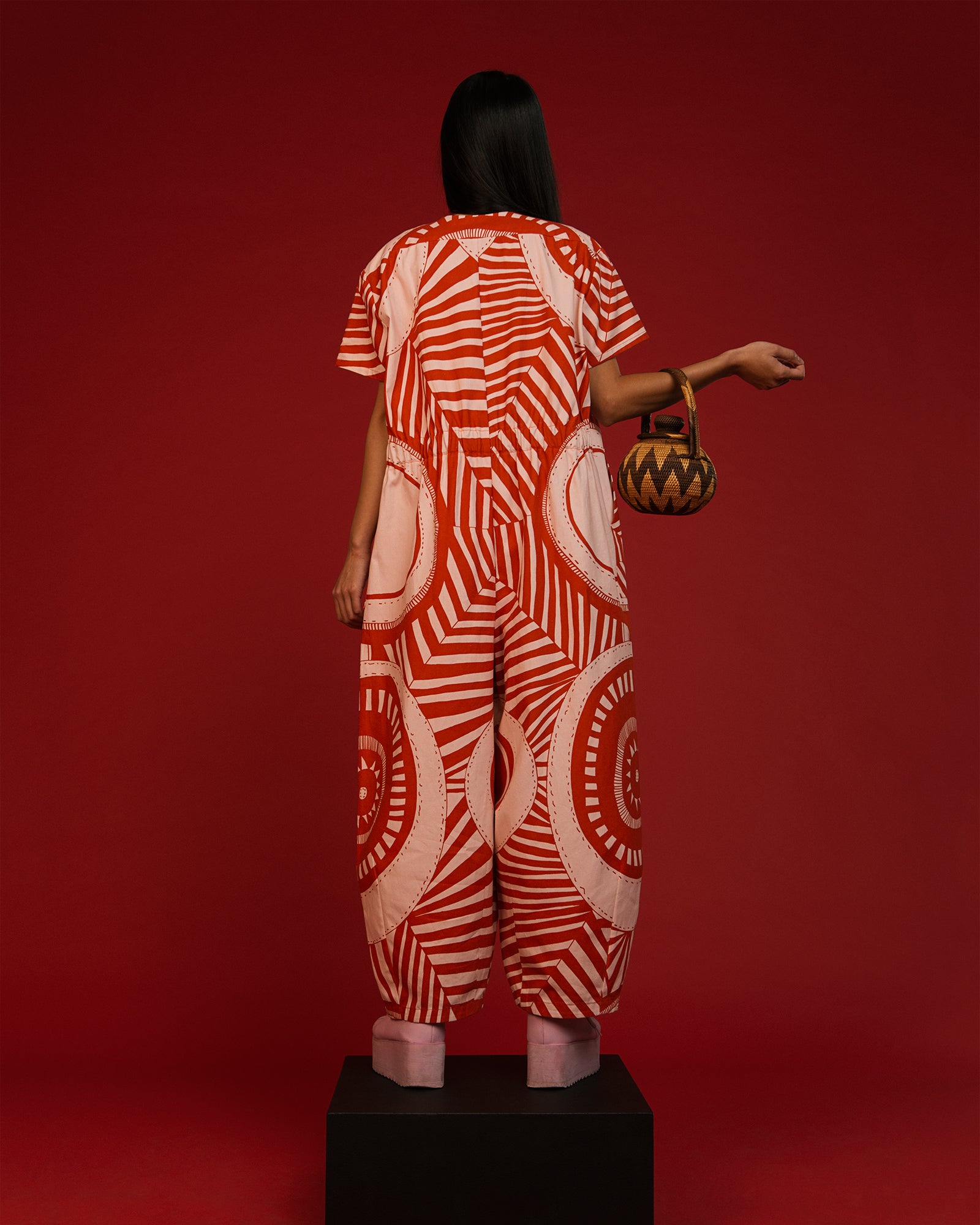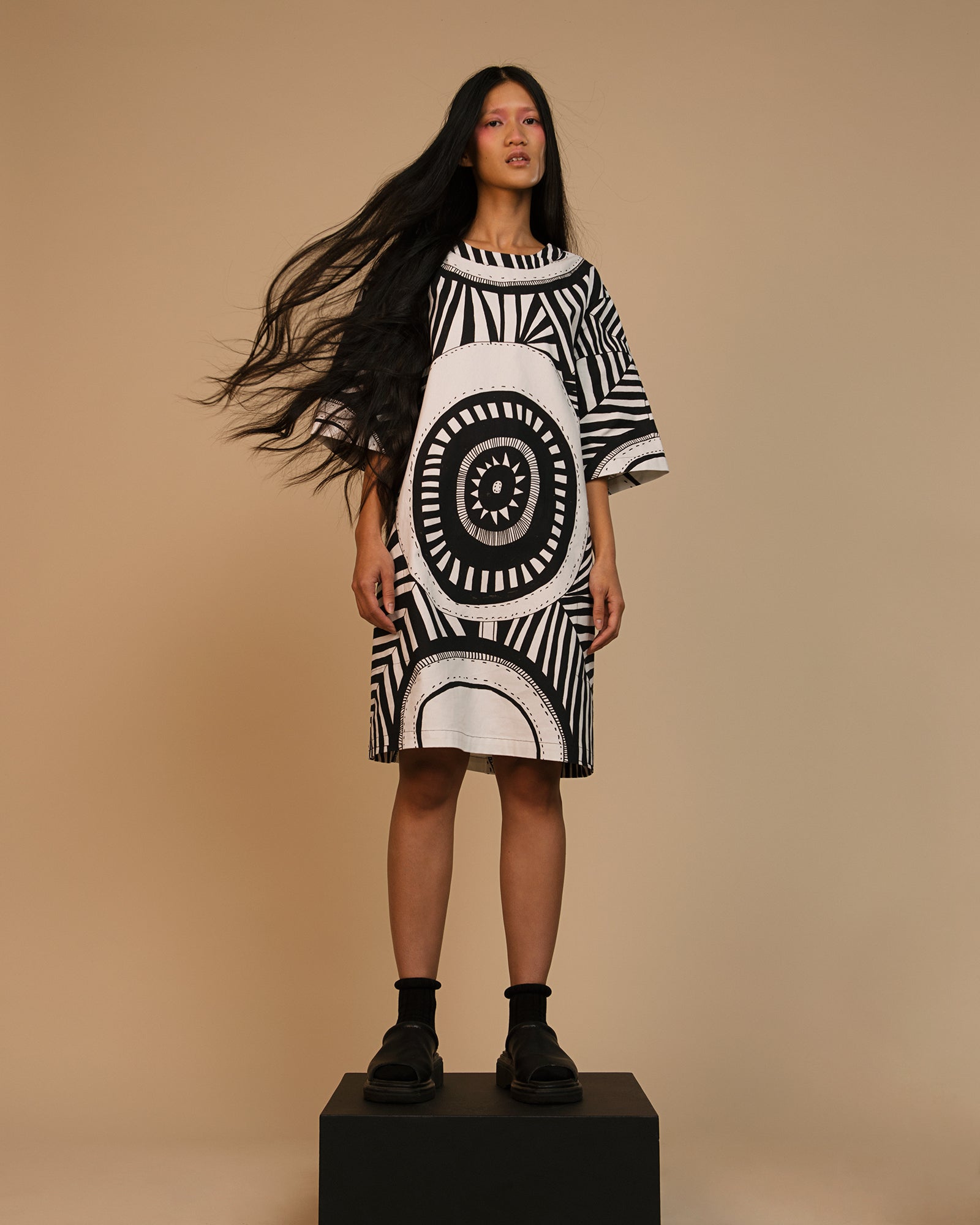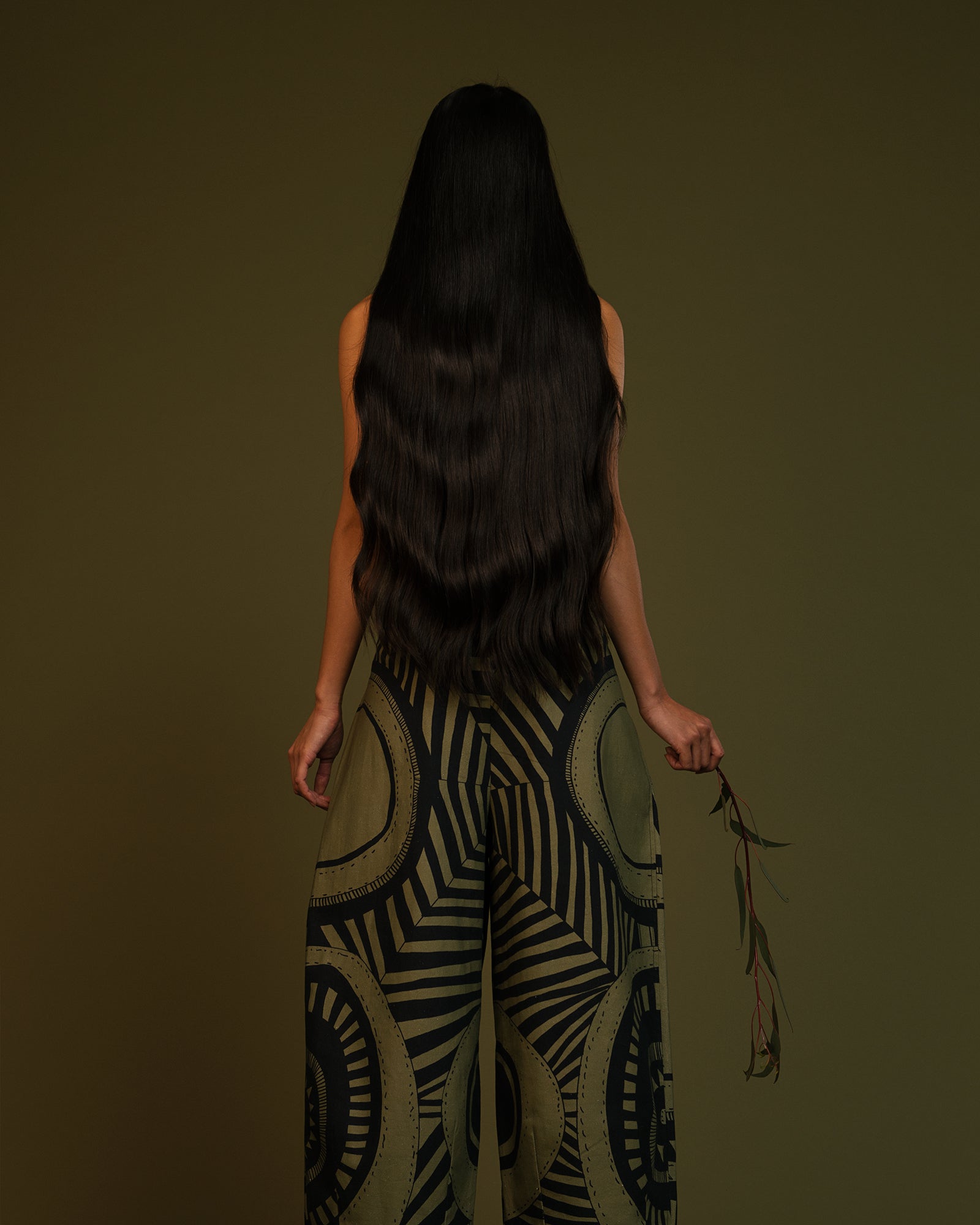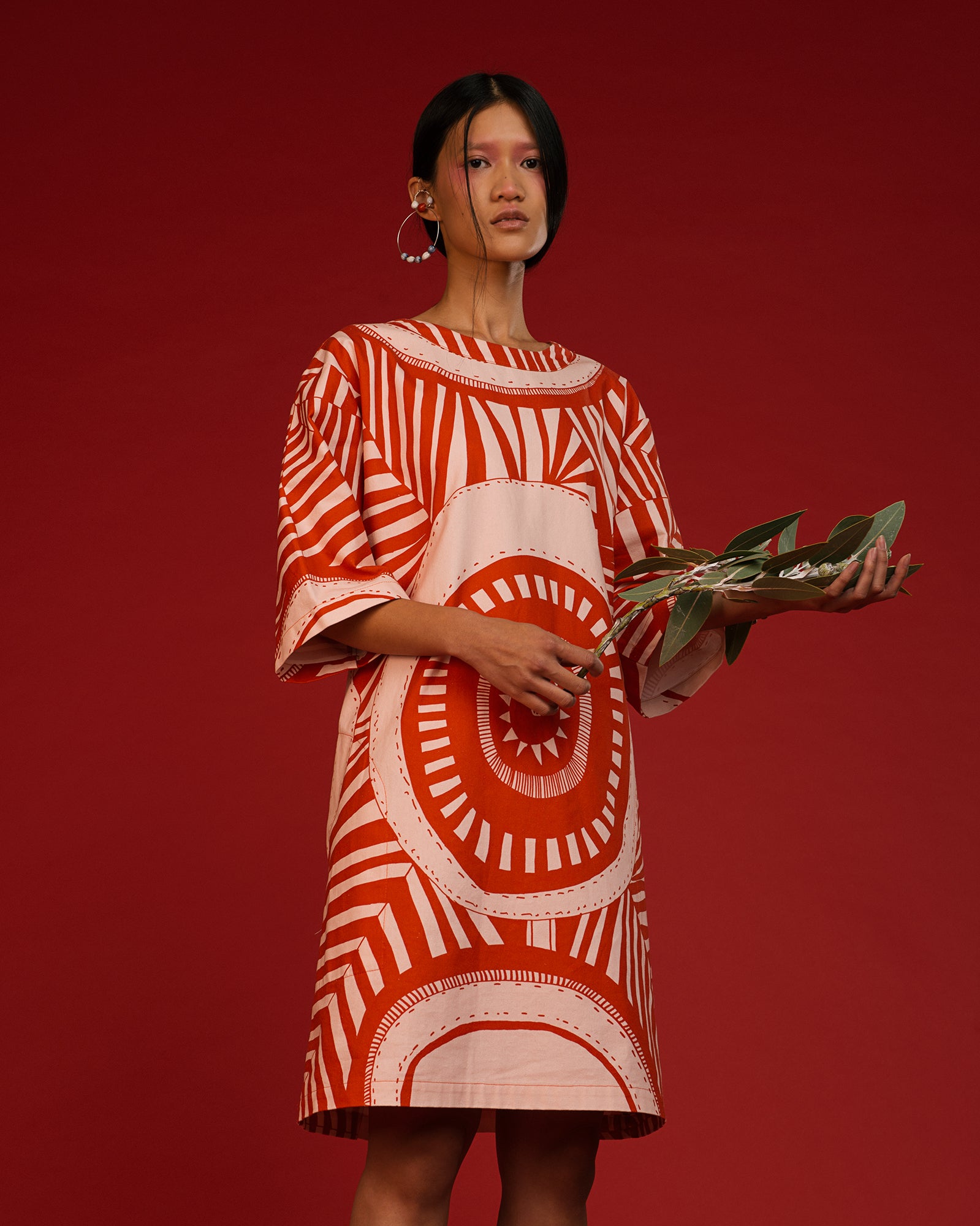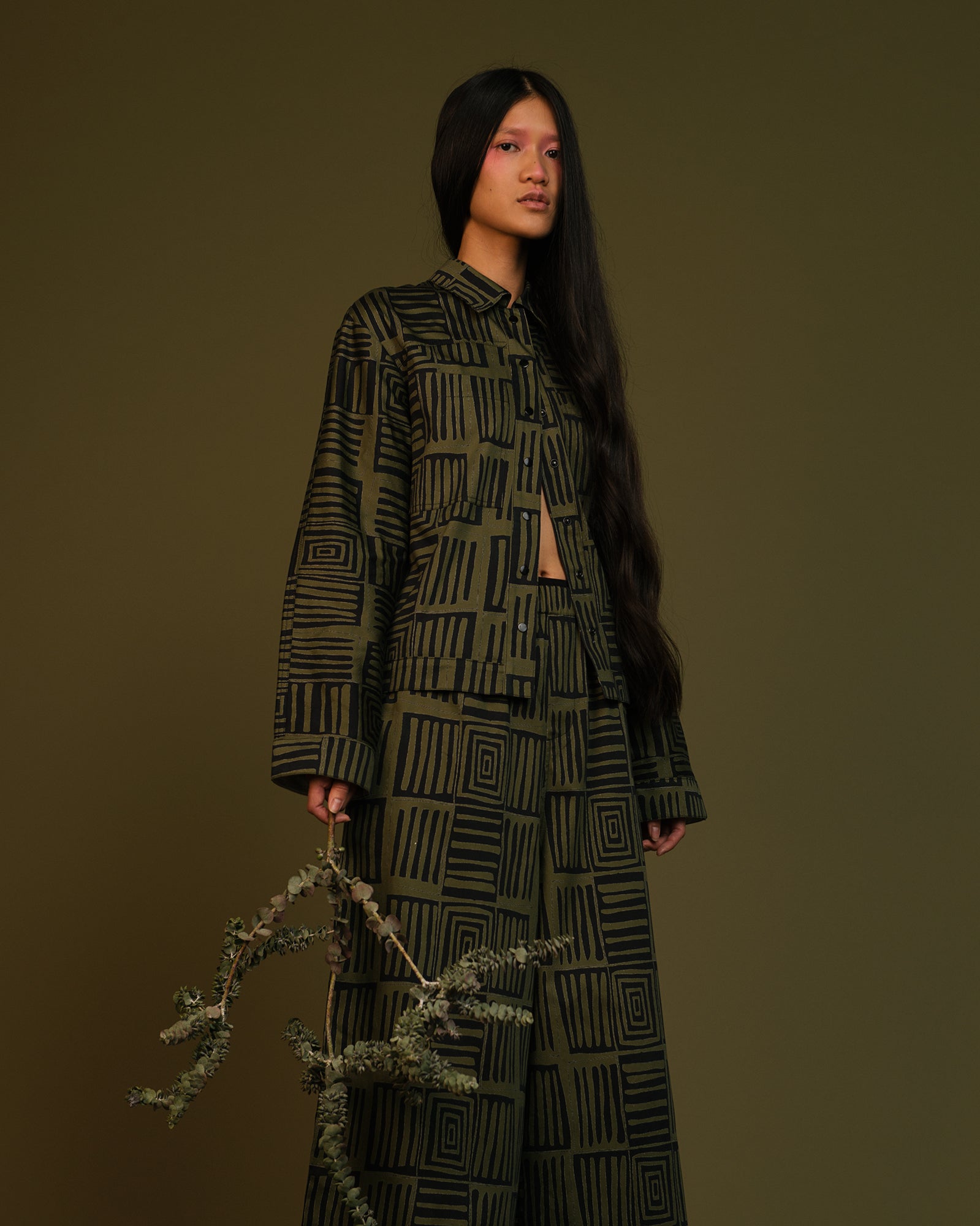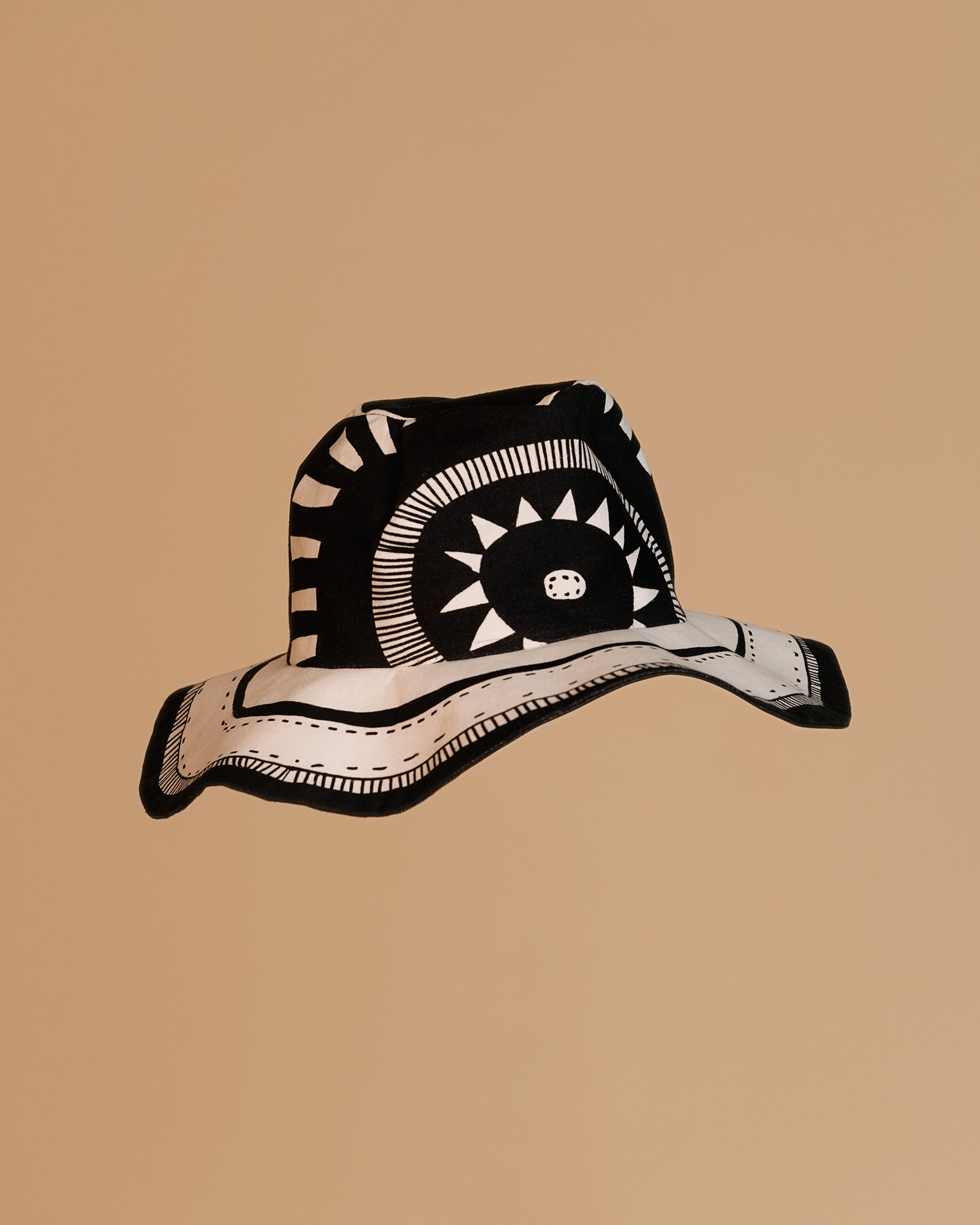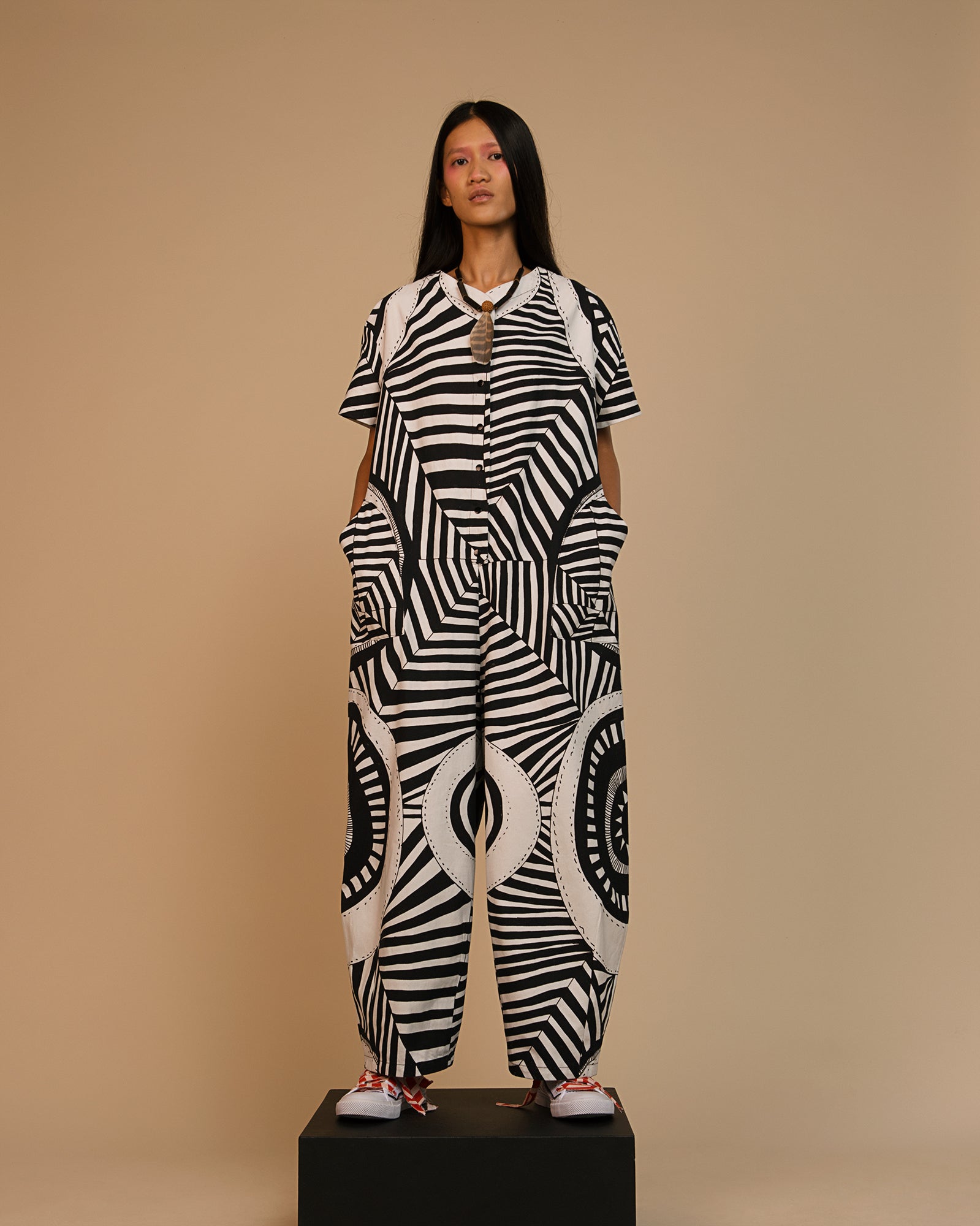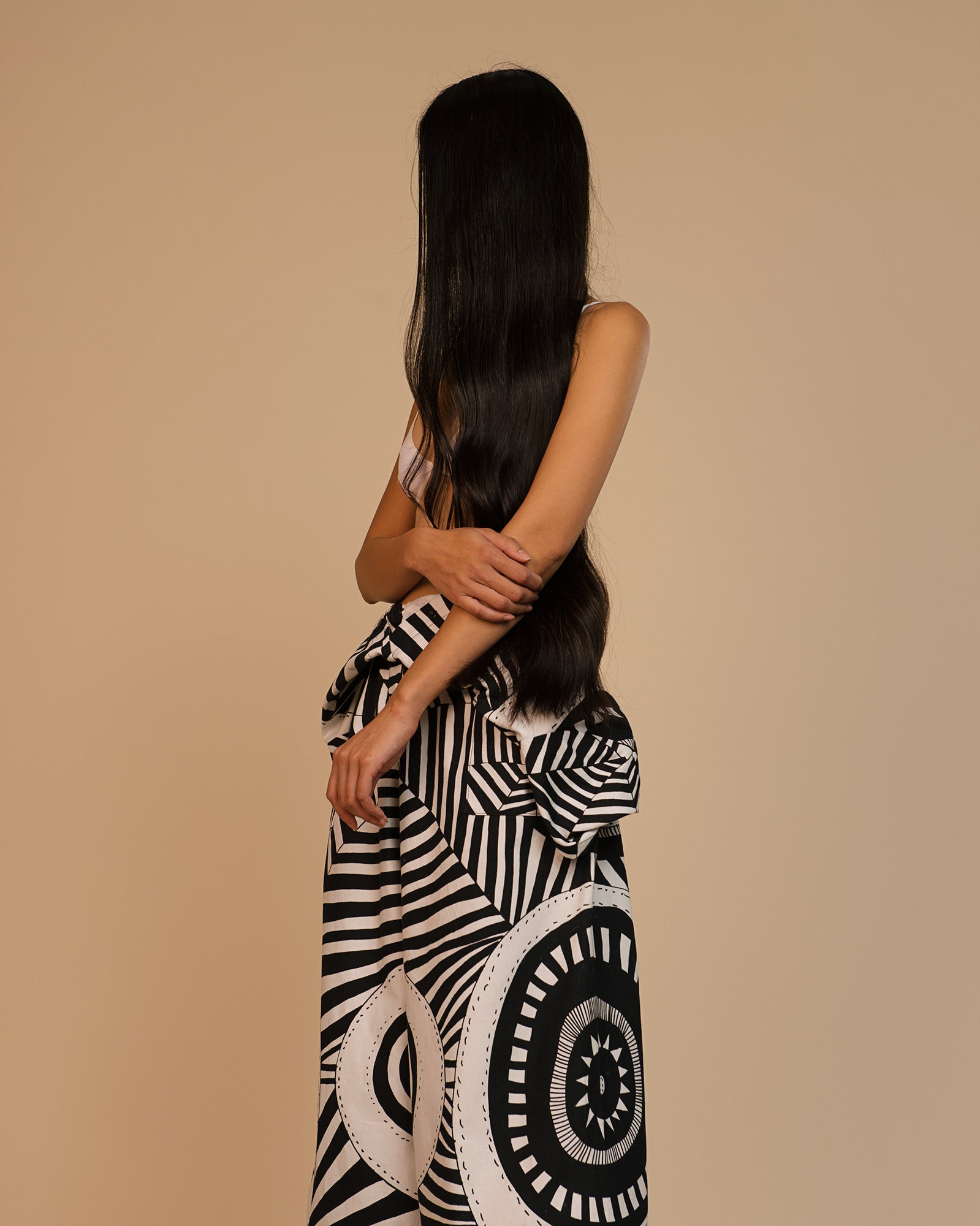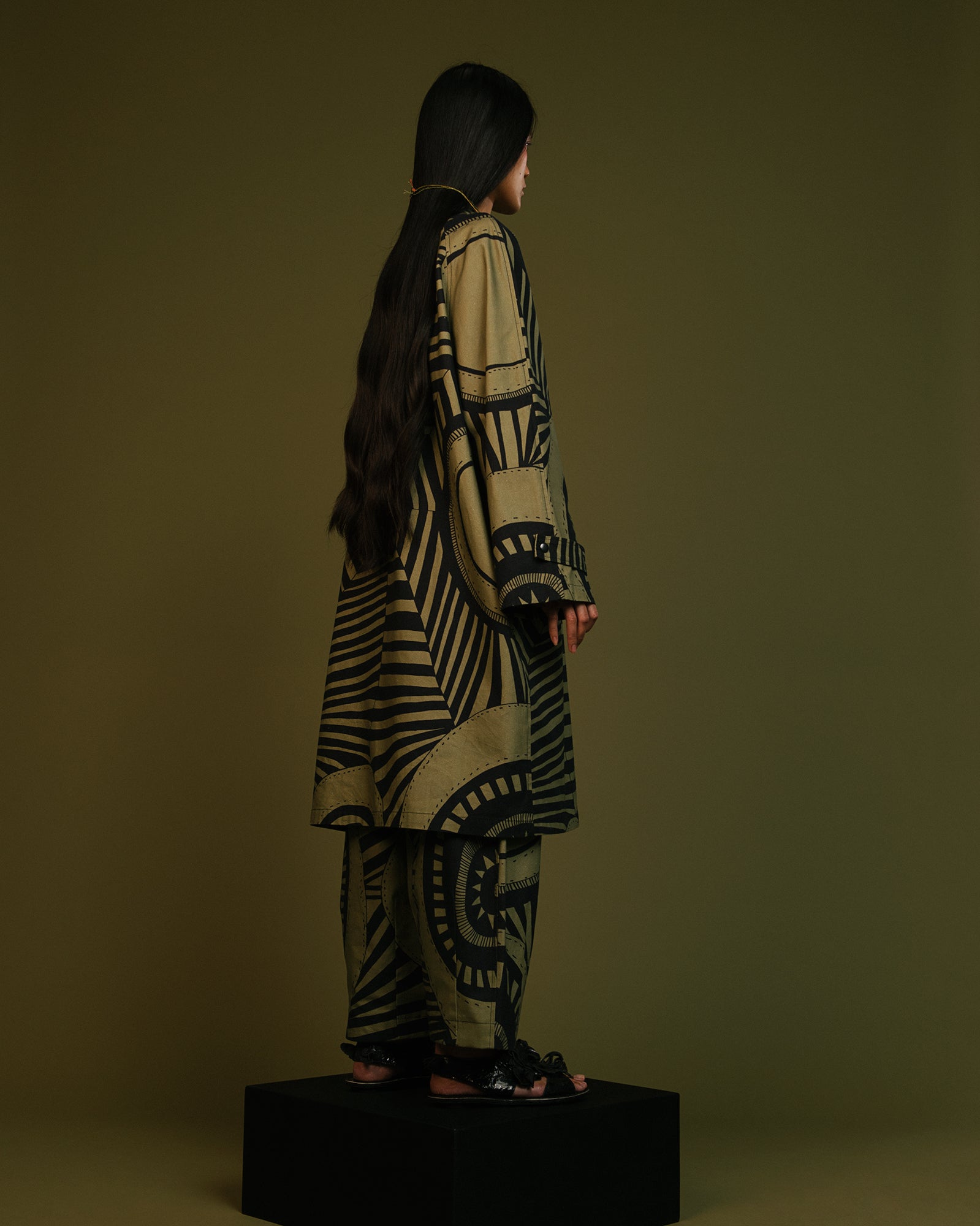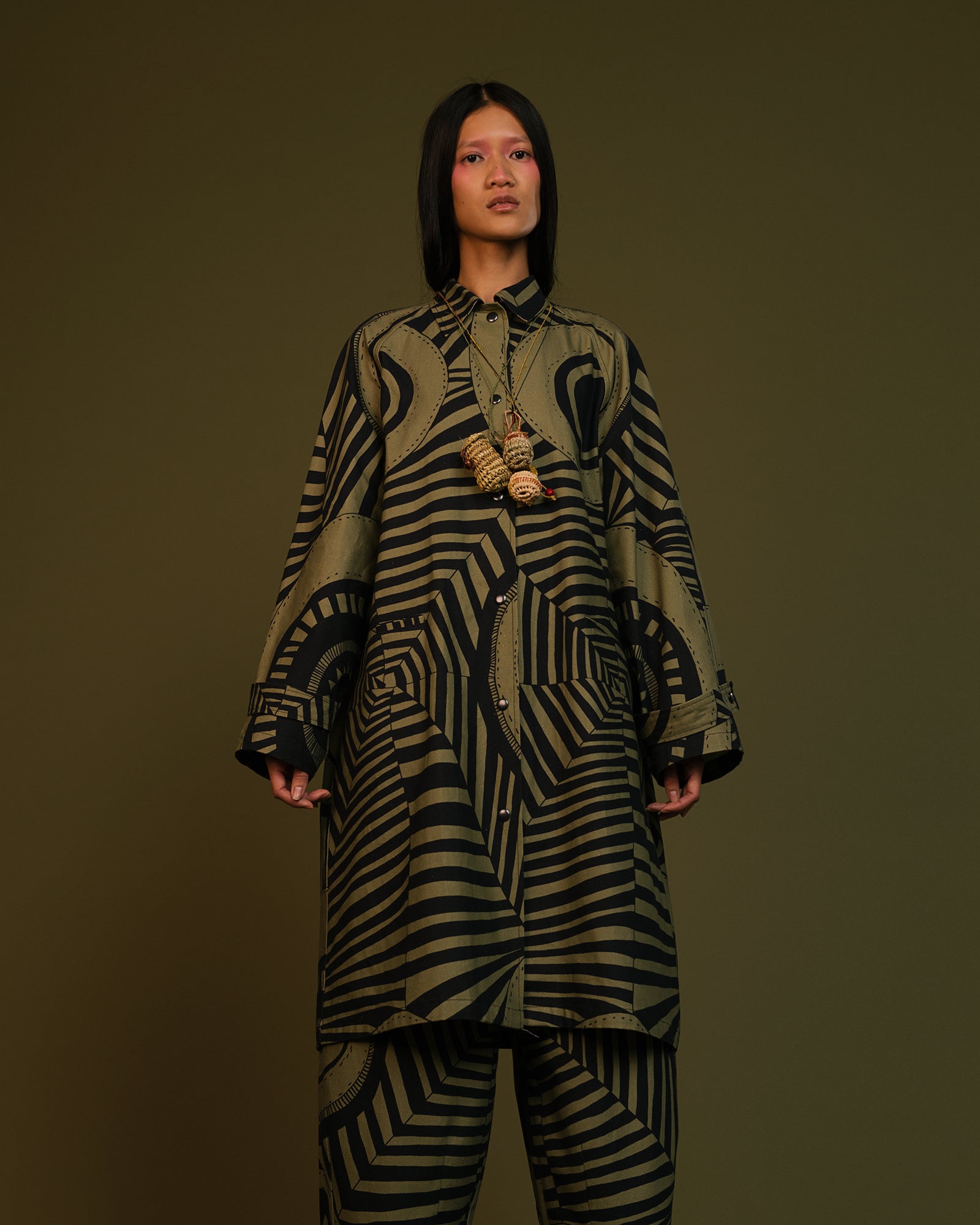Journeys W. Lisa Waup
This project presents a collaboration between award-winning Gunditjmara and Torres Strait Islander artist Lisa Waup and Melbourne based fashion designer Ingrid Verner to create a collection of garments and accessories entitled JOURNEYS. This is the second collection for Waup and Verner who first debuted at Melbourne Fashion Week in 2017. At its core this new collection represent JOURNEYS through history, family and friendship and the connection to country, to past, present and future and the connections between us all. Three original works by Waup—Continuity, Tracing History and Eyes of Our Ancestors, were drawn upon to build the series, drawing from a strong tradition and language of symbols and linking the immediacy of their visual narratives to each piece through print but also extending to the shape and interaction of each piece on the body. Designs take inspiration from the instinctual beauty of professional and personal uniforms; practical garments that we wed our identity to, and serve as both tools and points of expression. The resulting pieces are an experiment in fusing creative practices to find a new shared visual language.
Continuity
Circles run through Waup’s work, her intricate woven objects generally are circular, the motifs and symbols of her drawings represent family. Continuity details without stagnation, unlike a circle the square has resting points, a place to ponder and gather strength to reassess the situation and direction you are going and to give time and space to address options at hand. There is a crossroads, yet the central resting place signifies self, processing where to go now, where to search and where to find peace.
Tracing History
A totem is an object or one from nature that is given at birth either direct symbology through family groups passed down through the generations, detailing connections to sacred elements and animals around them. It is a belonging to family, to the tribe/clan. Tracing History was from a series of drawings Waup had created, at a time when she was searching for family information. It is a manifested totem pole, detailing the connections to all that is around her, adapting to negative and positive aspects of Waup’s life. The monochromatic designs become stepping stones researching missing history, whilst embracing the known and the unknown for what it is and what is will be.
Eyes of Our Ancestors
Representing a mask like image which details the forever presence of waup’s ancestors. They guide her in times of doubt. They look over her when at times she is lost for direction. The image is a presence of eyes taking care of waup and her family.
The colour palette of the collection is drawn in combination from Waup’s monochromatic line work and a desire to reference the australian landscape in unexpected ways. Contrasting red stitching is used to represent the threaded connections and bloodlines of connection to self and family. Both Waup and Verner had the opportunity to work with iconic Melbourne printing studio Spacecraft to hand screen the print Continuity as part of this series. Remnants from the fabrication of the collection have been used by waup to create a series of woven neckpieces, translating the softness of the garments and their bold prints into layered works that reflect on linking the body and adornment and issues of sustainability.
















